How to get around Vienna: Trains, trams and bike trails

Dec 13, 2021 • 7 min read
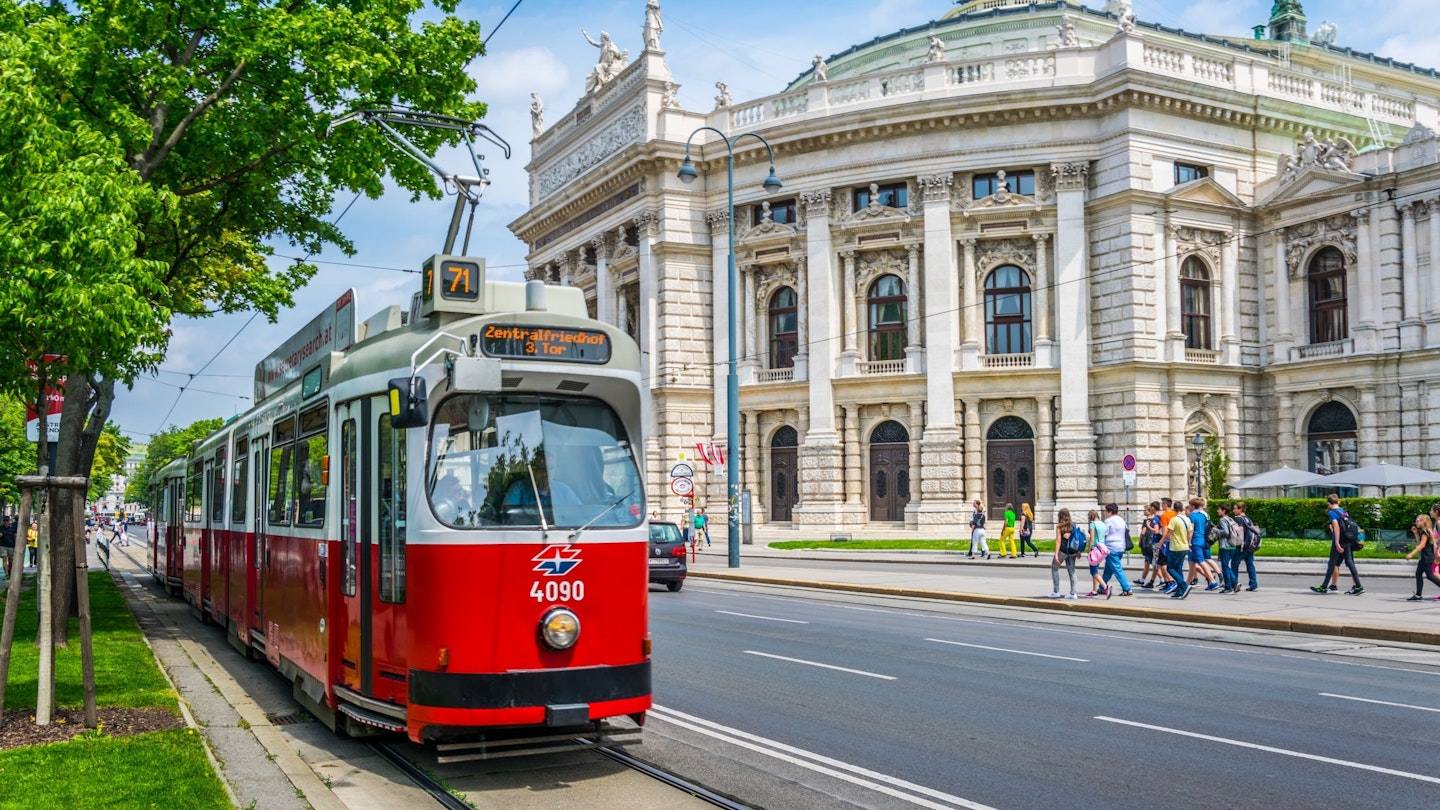
Trams are perhaps the most pleasant (if not the fastest) public-transport option in the Austrian capital ©trabantos/Shutterstock
It’s a pleasure to take in all Vienna has to offer – and there are many ways to travel among all the neighborhoods, palaces, museums and wine bars you’ll find in town.
More laid-back than larger European capitals, Vienna’s famous streets are easy to explore by foot. The Innere Stadt is at the core of the city’s 23 Bezirke (districts) , which means you can nose around the site-crammed backstreets and tick off many of the big hitters – from the Hofburg palace to Gothic Stephansdom cathedral – without any vehicle. If you fancy leaping into a bike saddle instead, the paths along banks of the Danube are a cyclist’s dream.
Modern, efficient and reasonably priced, Vienna’s stellar public transport network comes in handy the farther you get from the center: to visit the Prater park, where the Riesenrad Ferris wheel turns; or the baroque palaces of Belvedere and Schönbrunn .
The network is intuitively organized, extensive and operated entirely by Wiener Linien , whose digital hub has all the maps, apps, timetables and tickets you need for getting around without hassle. The network is making great strides on the green front, too, with constant improvements and expansions making public transport far more enticing than driving. A new U5 line with fully automated cars is in the offing, brake energy is used to power some U-Bahn stations, and battery-electric buses and hydrogen-powered buses are set to launch in 2023.
Here are all the ways you can waltz around the Austrian capital.


Vienna by foot
Much of Vienna’s Innere Stadt is pedestrianized, so arrive prepared (and packed) for plenty of walking on cobblestoned backstreets. Exploring on foot truly offers the best sense of this city, allowing you to sidestep the throngs and click into the vibes of its different neighborhoods.
If you’re just in town for a couple of days, you might not need to use public transport at all, as many of the city’s trophy sights, coffee houses, hotels and restaurants cluster in the grand streets of Vienna’s 1st district and along the Ringstrasse boulevard that wraps around it. Pop into Tourist Info Wien on Albertinaplatz for a map to get your bearings.
Beyond the Innere Stadt, as things spread out, you might consider riding public transport between walks. Outside of the iconic 1st district, great neighborhoods to stroll around include the boho-flavored 7th district (Neubau), with its cluster of galleries, cool cafe bars and indie boutiques; the tree-lined avenues of the Prater in the 2nd district (Leopoldstadt); the 13-mile-long (21km) Donauinsel in the 22nd district (Donaustadt); and the artsy lanes fanning north of the foodie Naschmarkt in the 4th district (Wieden).
Vienna by U-Bahn and S-Bahn
On the city’s safe, comfortable and punctual U-Bahn (subway), trains run roughly every five minutes from 5am to midnight Monday to Thursday and Sunday, and 24 hours a day on Friday and Saturday. The U-Bahn gets you close to most sights, especially in the center and denser areas (between the Ringstrasse and Gürtel, for instance).
Tickets are sold at machines (with multilingual instructions), or at windows at stations. Just remember to validate your ticket by slotting it into one of the blue machines before hopping aboard (listen for the click). You only need to do this once if using a day or multi-day pass.
Five lines currently operate: U1 (red), U2 (purple), U3 (orange), U4 (green) and U6 (brown). (U5 is still under construction and is slated for completion in 2025.) All stations have elevators as well as escalators, while platforms have timetable information and signs showing the exits and nearby facilities.
The 10 lines of the S-Bahn run from train stations, servicing suburbs and satellite towns from 4:30am to 1:10am. If you’re traveling outside of the ticket zone of Vienna’s city limits, you’ll probably have to purchase an extension on your standard Vienna transport ticket or buy a ticket from a machine at the station; check on maps posted in train stations.

Vienna by tram
Speed isn’t everything, and something feels gloriously right about trundling on one of Vienna’s 29 tram lines. You’ll need to validate your ticket by stamping it in one of the blue machines when boarding. Trams are either numbered or lettered (eg 1, 2, D) and cover the city center and some suburbs; service runs from 5:15am to 11:45pm. Overall, this mode of transport offers a cost-effective way to see the sights and enjoy a slice of everyday life at the same time.
A tips for exploring by tram: If you only have time for one journey, make it a self-guided spin of the Ringstrasse, which makes for a particularly atmospheric rumble by night, when its monuments are gloriously illuminated.
The Ring Tram caters to tourists, but the (commentary-free) regular service is far less expensive. For the price of a regular ticket, you can take tram 1 heading northwest from Schwedenplatz, changing to tram 2 at Stadiongasse/Parlament, Burgring or Kärntner Ring-Oper to finish at Schwedenplatz.
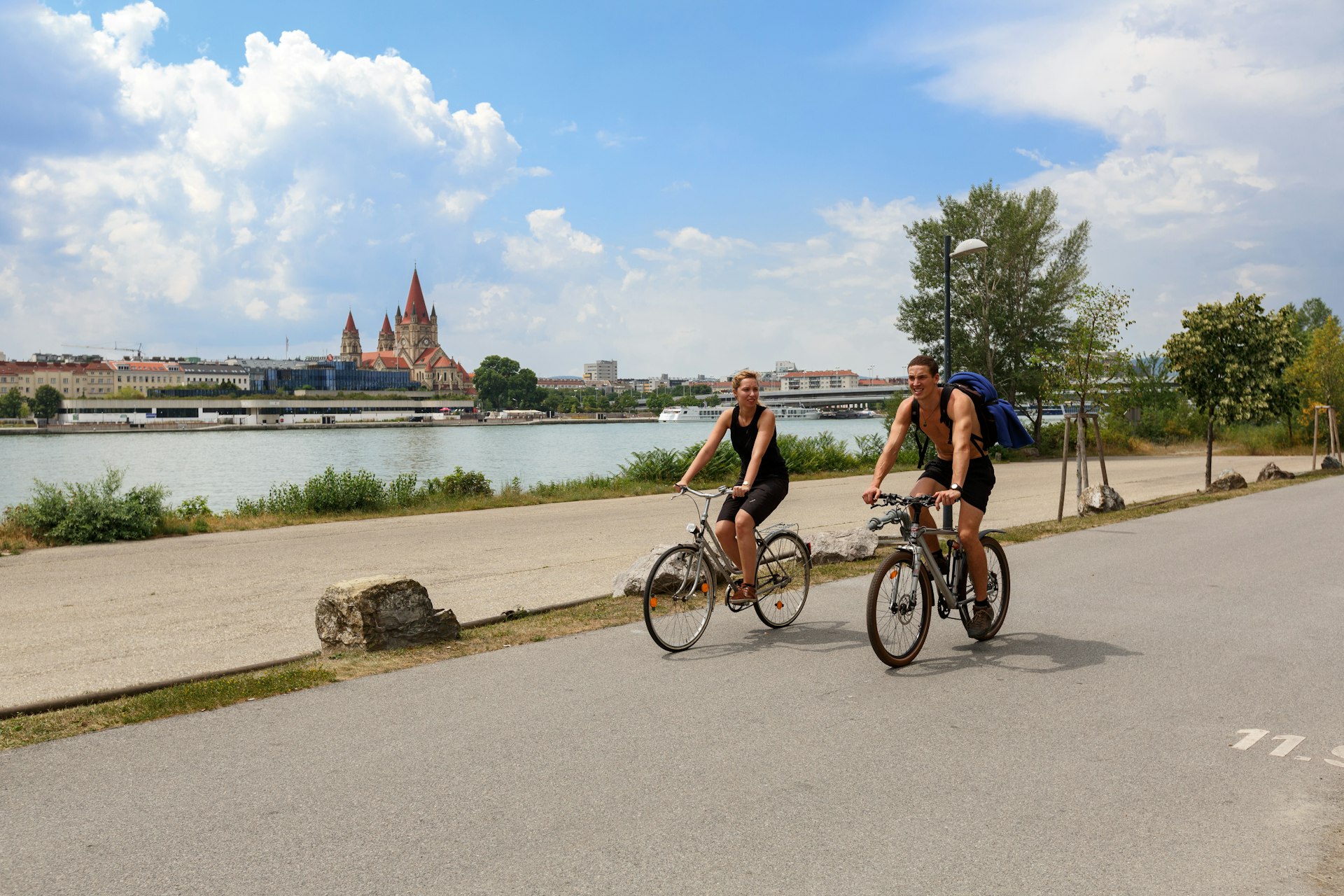
Vienna by bicycle
Ample green space and the expansive banks of the Danube make Vienna a delight to discover on two wheels. The city is traversed by 870 miles (1400km) of designated, well-marked cycle paths, some passing through little-trafficked areas. The city is geared up for long-distance cyclists, too, as a major stop-off on the Danube Cycle Path , which unfolds over 746 miles (1200km) from Donaueschingen in Germany to Budapest.
You can carry your bike (or e-bike) free of charge on carriages marked with a bike symbol on the S-Bahn and U-Bahn from 9am to 3pm and after 6:30pm Monday to Friday; after 9am Saturday; and all day Sunday.
Tips for exploring by bicycle: The Citybike Wien bike-share scheme comprises 120 bike stands scattered throughout the city. You can register online or with a credit card at any station; simply swipe your card in the machine and follow the multilingual instructions.
The bikes can only be locked up at a bike station (unless you use your own lock). If you fancy something with a bit more oomph, Lime ’s fleet of e-scooters is great for zipping about town. Download the app for details on rental locations and rates.
Vienna by bus
Bus connections can be handy for reaching outlying parts of town or for travllers with limited physical mobility. Buses tend to be reliable and punctual, with several very useful routes for visitors, among them 13A (Hauptbahnhof to Alser Strasse); 2A (Schwedenplatz to Schwarzenbergplatz), which covers a substantial chunk of the Innere Stadt; and 3A (Stubentor to Schottenring).
Buy tickets from the driver or a Tabakladen (tobacconist), then validate upon boarding. Most lines run from 5am to midnight, with fewer (sometimes nonexistent) services on weekends. Night buses cover much of the city and run every half-hour from 12:30am to 5am. Schwedenplatz, Schottentor and Kärntner Ring/Oper are stopping points for many night bus services; look for buses and bus stops marked with an “N.” All transport tickets are valid for Nightline services.
Accessible transportation in Vienna
Vienna scores high when it comes to accessible transport, and big plans are in place to make things increasingly barrier-free. Ramps are common, if not universal; most U-Bahn stations have wheelchair lifts and all have guiding strips for the blind. All buses these days have ramps (the driver will assist) and tilt technology, and the vast majority of trams have low-floor access for wheelchairs. Traffic lights have noise cues to indicate when pedestrians can safely cross the road.
Tourist Info Wien’s Accessible Vienna page is a useful resource for the latest accessabilty upgrades.
Transport passes in Vienna
Wiener Linien runs Vienna’s integrated transport network, with a website providing such information as timetables, fares and route planners. A single adult fare (€2.40) covers travel in the core zone in one direction on an uninterrupted journey, including line changes; children under six travel free with a fare-paying adult.
If you plan on getting around a lot by public transport, investing in a travel pass will save you a mint. The most popular options include the day ticket, valid from the start date until 1am (€5.80), and the 24-, 48- and 72-hour passes (€8, €14.10 and €17.10, respectively).
It’s worth bearing in mind that the weekly pass costs the same as the 72-hour one. The 8-day Climate Ticket (€40.80) is ideal if you’re traveling with a group of friends or family and don’t plan on using public transport every day.
Buy tickets at stations, the online ticket shop or by using the Wiener Linien app on your smartphone.
You might also like: The best museums in Vienna are a curated guide to the city's culture The best parks in Vienna: 11 glorious green escapes The best time to visit Vienna: from Christmas markets to film fests
Explore related stories

Train Travel
Mar 22, 2024 • 4 min read
Nightjet sleeper trains have a new mini cabin, perfect for solo travelers or those wanting privacy.
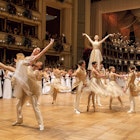
Nov 6, 2023 • 5 min read

Nov 1, 2023 • 4 min read

Nov 1, 2023 • 15 min read
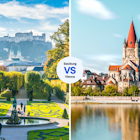
Oct 9, 2023 • 7 min read
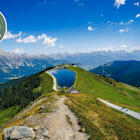
Oct 4, 2023 • 4 min read

Sep 29, 2023 • 7 min read
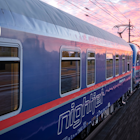
Apr 20, 2023 • 6 min read
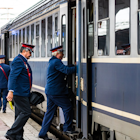
Apr 6, 2023 • 7 min read
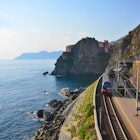
Dec 27, 2022 • 8 min read

16 Top-Rated Day Trips from Vienna
Written by Joni Sweet Updated Apr 15, 2024 We may earn a commission from affiliate links ( )
Thanks to its setting on the banks of the Danube in the northeastern foothills of the Alps, the area around Vienna offers an abundance of beautiful scenery to explore. Tall mountain peaks plunge to emerald river valleys, and you'll see quaint villages nestling against this breathtaking backdrop.
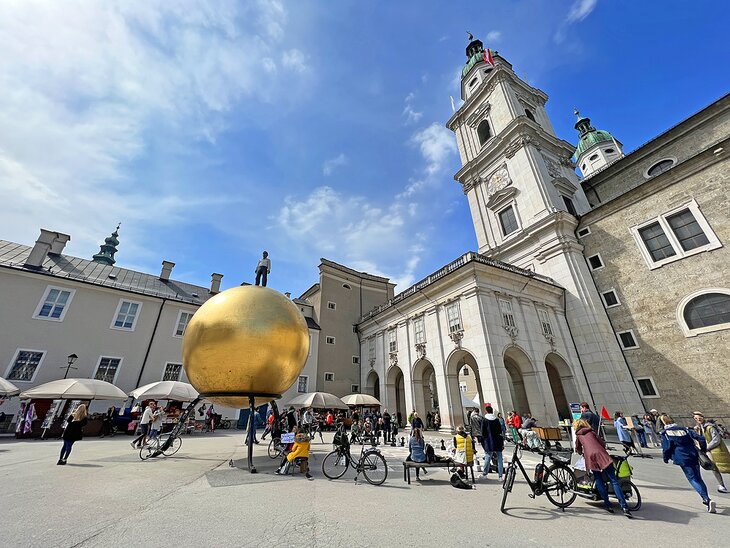
The city's central location makes it a convenient base for day trips to some of the nearby towns and villages. Here, you'll find magnificent abbeys, opulent palaces, and historic attractions. If you're willing to venture a bit farther, you could take a day trip to Budapest, Prague, Hallstatt, and Salzburg easily by train, bus, or car from Vienna.
Express trains that run through Vienna include Railjets , RegioJet , InterCity Express, EuroCity, and WESTbahn . These are great options for reaching farther-flung day trips and weekend destinations. FlixBus also offers bus transportation from five departure points in Vienna to places like Bratislava and Brno.
If you prefer driving , Austria is a safe, easy place to be behind the wheel. Roadways are well-marked with signage. All of the toll roads — which include the Autobahn freeways, Bundesstraße federal highways, and Schnellstraßen expressways — are cashless, though, so be sure to get a vignette (pre-paid toll sticker) for your windshield if your rental doesn't already have one. Austria also requires drivers to have an international driver's permit if they don't have an EU/EEA driving license.
From the beautiful Vienna Woods to snowcapped mountain peaks; from lovely old palaces to exciting day trips by boat, rail, and road, the city offers some of the best scenery in Austria right on its doorstep. Discover other rewarding places to visit with our list of the best day trips from Vienna.
1. The Wachau Valley and Melk Abbey
2. budapest, 3. salzburg, 4. hallstatt, 6. bratislava, 7. klosterneuburg abbey, 8. the vienna woods, 9. the roman town of carnuntum, 10. lainzer wildlife park and baden bei wien, 11. the village of grinzing, 12. beethoven's heiligenstadt, 13. haydn's birthplace and rohrau castle, 14. danube boat tours, 15. eisenstadt and schloss esterházy, 16. laa an der thaya, map of day trips from vienna.
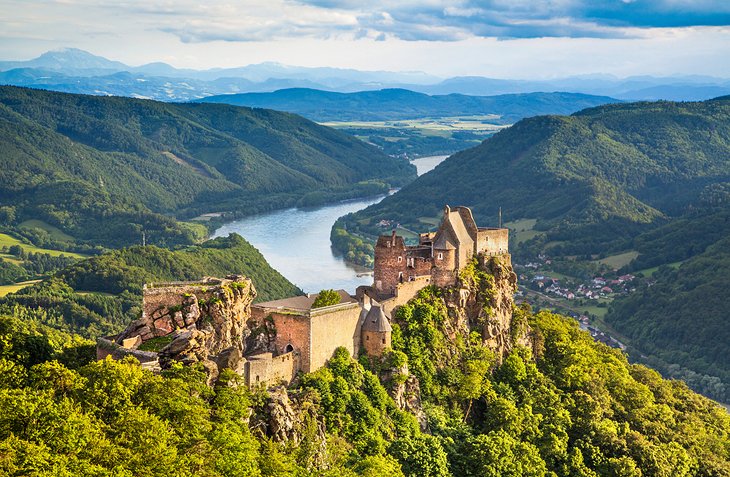
Located about 80 kilometers from Vienna , the beautiful Wachau Valley is a World Heritage Site due to its spectacular scenery and rich history and culture. It stretches for about 40 kilometers between the towns of Melk and Krems.
Driving is the easiest way to take a day trip to the Wachau Valley from Vienna. You can take the A22 motorway to Stockerau, then take the interchange to S5 until you reach the Krems exit. Keep in mind these are toll roads. Many rental cars in Austria come with a physical or digital sticker to cover the tolls, but if you've driven in from another country, you may need to buy one from a gas station or newsstand.
After that, you can take your time enjoying valley views by car on the Romantic Road of Austria , which runs along the Danube. The riverside road snakes through the valley's heart, past picturesque monasteries, grand castles, villages, and vine-draped hills, conjuring a scene from medieval times. The area is also a hot spot for foodies and is one of the most popular places to visit near Vienna.
You can take a roundabout just after Schalemmersdorf to cross the Danube and head to Melk . One of Melk's top attractions is the magnificent Benedictine Melk Abbey, perched high on a hilltop overlooking the Danube River. Highlights include its octagonal domed entrance gate; the Imperial Corridor, lined with priceless art; the museum; the frescoed Marble Hall; and the lovely gardens. The Abbey Church, with its symmetrical twin towers and impressive 18th-century ceiling paintings, is known as one of the finest Baroque churches north of the Alps.
Organized Tour: An easy way to explore the Wachau Valley, without the stress of driving and possibly missing the highlights, is the Melk Abbey and Danube Valley Day Trip . This full-day excursion begins with an air-conditioned coach ride through the beautiful Wachau Valley, while an experienced guide shares information about the history and attractions in the area. It continues with a stop at the medieval castle ruins of Burgruine Dürnstein.
In summer, the tour includes a relaxing cruise down the Danube River to Melk, where you can explore the magnificent Benedictine Melk Abbey. In winter, you can enjoy a walking tour and a hearty Austrian lunch in a local restaurant. Pickup from select hotels and entry to the abbey are also included.
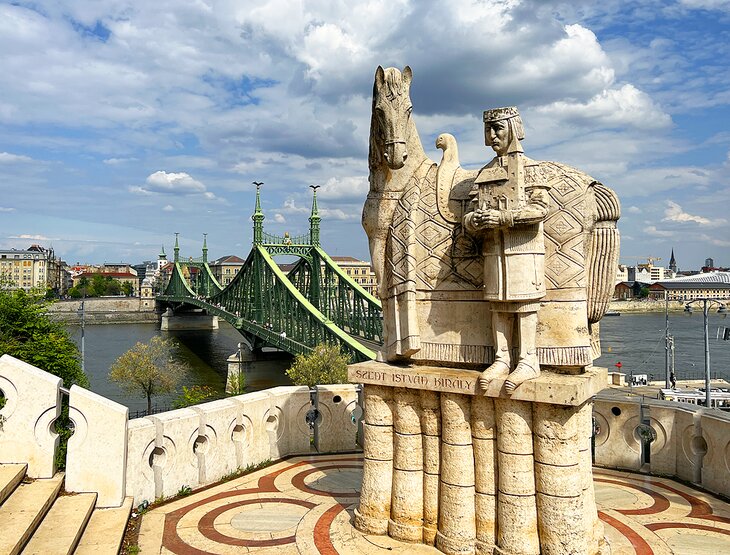
About 240 kilometers from Vienna , Budapest is affectionately known as the "Paris of the East." It sits in a beautiful location astride the Danube River and is one of the most picturesque cities in all of Europe.
Getting to Budapest is a long day trip , no matter how you travel, but it's worth it for the wealth of UNESCO World Heritage Sites, breathtaking architecture spanning styles from Baroque to Neoclassical and Art Nouveau, and the chance to soak in the city's famous therapeutic springs.
The best way to get there is on the Railjet high-speed train , which goes from Budapest to Vienna in about 2.5 hours . Regional trains are an option, but they tend to be slower and you may need to transfer several times. FlixBus also runs a direct bus route that takes just over 3 hours — but traffic could mean major delays on the road.
Driving a car yourself is another option if you want the independence of being able to stop at various destinations along the way. The M1 motorway directly connects Vienna to Budapest, so it's a straightforward drive.
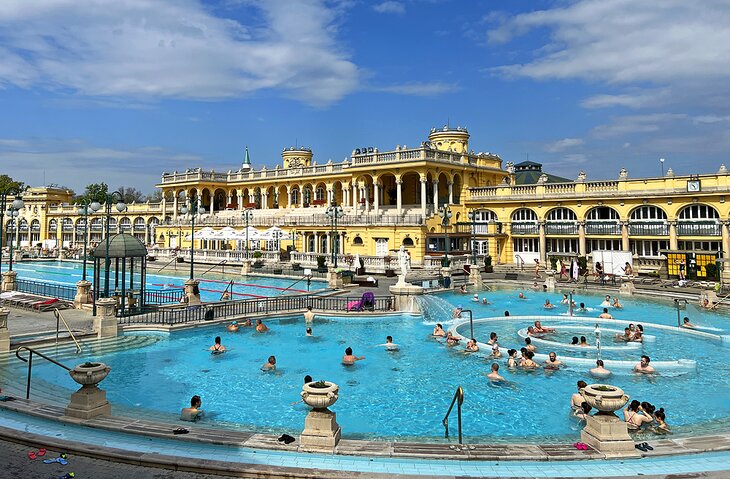
If you're feeling stiff from the drive or train ride, make a beeline to one of Budapest's famous bathhouses for a long soak. The Széchenyi Thermal Bath has a mix of outdoor pools and indoor soaking tubs of different temperatures (not to mention its Baroque Revival architecture, which feels oh so Budapest!). Gellért Spa also offers fantastic bathing facilities, each fed from deep underground springs. Its plunge pools feel deeply refreshing (followed by a hot soak, of course!) after a long day of travel. You can buy tickets online or at the entrance of either bathhouse.
Amp up your day of sightseeing by visiting multiple tourist attractions in one venue: City Woodland Park is home to an impressive line-up of museums, as well as the stunning Vajdahunyad Castle . You could spend days here exploring all the cultural jewels.
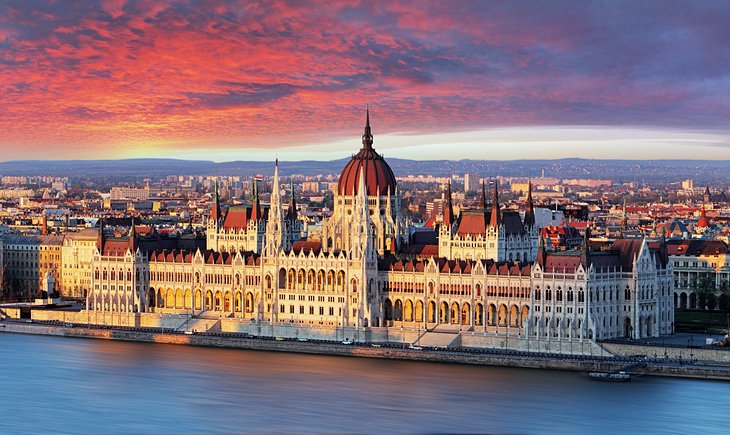
Organized Tour: Consider hopping on the Budapest Day Trip from Vienna tour and let a driver and guide take care of the navigation. The 13-hour tour takes you to many of the city's most famous landmarks. Vajdahunyad Castle, the Parliament Buildings, Heroes' Square, and the Hungarian State Opera are just some of the highlights. This full-day tour includes pickup from select hotels, a scenic drive through the Hungarian countryside, a walking tour through Buda, and a city tour on an air-conditioned coach. You'll be dropped off at the Vienna State Opera after the tour.
Given how long it takes to reach Budapest, consider upgrading your day trip to a weekend getaway from Vienna. Budapest's top attractions, including World Heritage-listed Castle Hill , home to the 18th-century Buda Castle ; the late-19th-century Fisherman's Bastion and Matthias Church ; the magnificent Parliament buildings ; and Heroes' Square will make your weekend one to remember.
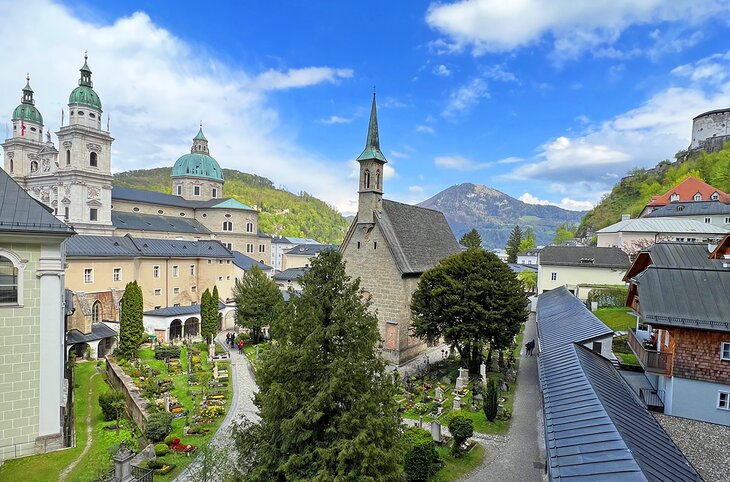
About 295 kilometers from Vienna , Salzburg is another of Europe's beauty queens. Beset with elegant buildings and surrounded by mountains, this picturesque city straddles the River Salzach and is famous as the birthplace of Mozart, as well as the setting for the film The Sound of Music .
Like other day trip destinations from Vienna, Salzburg is best reached by train or car . The WESTbahn train can get you from Wien Westbahnhof station in Vienna to Salzburg in about 2.5 hours and runs every half hour throughout much of the day. ÖBB Railjet also offers frequent high-speed trains from Vienna Hauptbahnhof to Salzburg that take 2.5 to 3 hours.
Driving is a breeze, too. Simply take the A1 from Vienna to exit 288-Salzburg. However, keep in mind that Salzburg has very limited parking, and all lots downtown are for short-term use only, so you'll have to move your car at least every three hours.
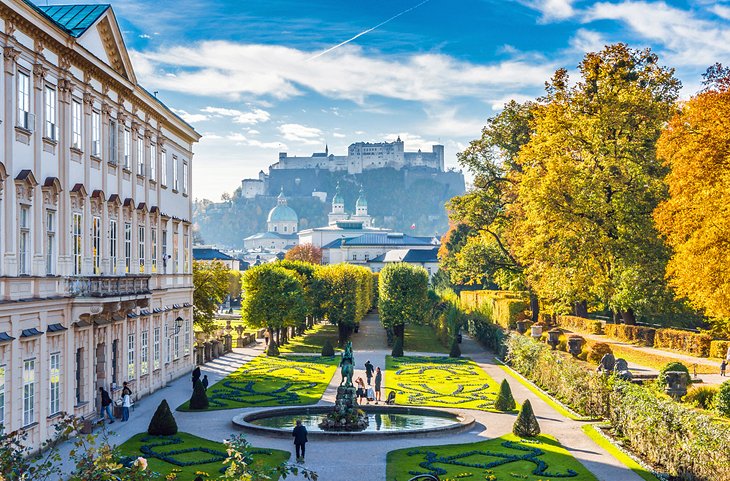
Salzburg feels like a fairytale the moment you step foot in its World Heritage-listed Old Town, with its beautiful Baroque architecture and the Salzburg Cathedral ; Hohensalzburg Castle; Mozart's Birthplace, one of the world's most popular museums; and the gorgeous Mirabell Palace and gardens, where the Von Trapp children famously frolicked. It's compact enough that you can see many of the top attractions in Salzburg on a day trip if you are on a tight schedule.
A great place to begin a walking tour of the city is from the Residenzplatz , one of the city's largest squares and home to the Residenzbrunnen , an impressive marble fountain by Italian sculptor Tommaso di Garone.
If you have a little extra time, it's worth taking the bus 10 kilometers south of the city to the Untersbergbahn (cable car). Zipping from Salzburg's lush green landscape to the rocky, snow-covered 1,805-meter-tall Geiereck summit on the 8.5-minute gondola ride felt like magic to me. Grab a coffee at the quaint cafe at the top and soak up all the glorious views. From start to finish, you can take this excursion in about 3 hours.
Organized Tour: The Salzburg Day Trip is a full-day adventure and one of the best day trips from Vienna to Salzburg. It includes plenty of photo opportunities on the spectacular drive through the Austrian Alps. You'll pass by the beautiful clear lakes and mountains of Salzkammergut as you make your way to Salzburg for a walking tour of Mozart's hometown and several major attractions.
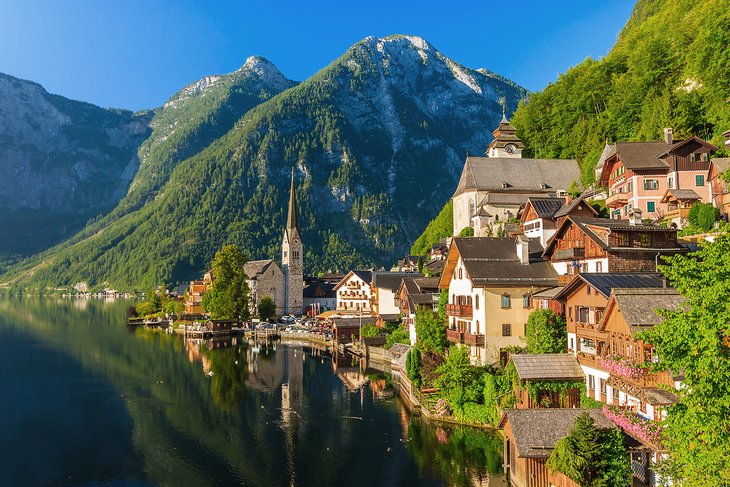
Hallstatt is quite simply one of the most picture-perfect places to visit in Austria. Cute 16th-century cottages with flower-draped balconies cluster along an achingly gorgeous lake, backed by rugged Alpine peaks. Seeming to add an exclamation point to all this beauty is the slender spire of the Evangelical Church of Hallstatt. No wonder both the village and the lake are classified as a UNESCO World Heritage site .
Hallstatt lies about 290 kilometers from Vienna in the Salzkammergut region. Unfortunately, it's not easy to reach by train or bus. The journey by public transportation is long and will require several transfers, so driving yourself is the best way to get to Hallstatt from Vienna . It takes about 3.5 hours each way depending on traffic, but it's a pretty simple route. Take the B1 to the A1 motorway and follow it for about 215 kilometers to exit 244-Regau. Then follow B145 and the Austrian Romantic Road to Hallstatt.
Going from Vienna to Hallstatt and back again on the same day is a lot of time behind the wheel, but you can relax and enjoy the scenery on an organized Hallstatt Day Trip from Vienna . Led by an expert guide, you'll take a walking tour to see Hallstatt's top attractions . In the summer, the tour includes a boat ride on Lake Hallstatt, while the winter tour includes a visit to the Hallstatt ossuary. Your camera will get a workout in this breathtakingly beautiful region.
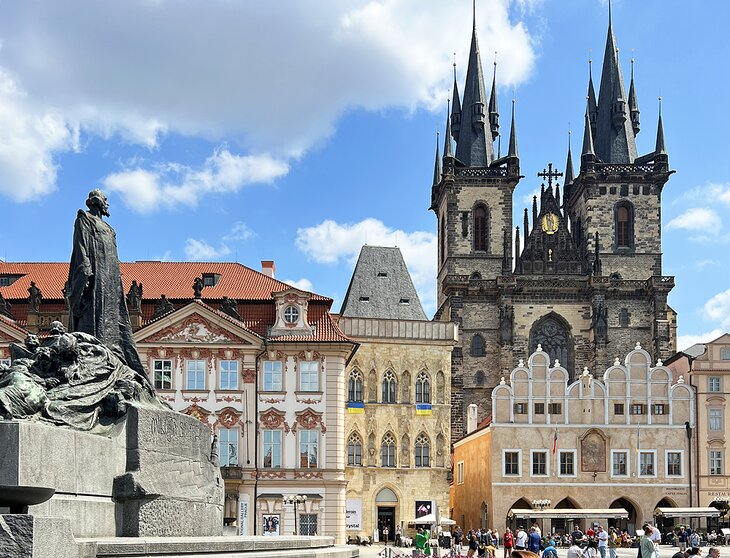
Bristling with spires and breathtaking architecture, Prague has a beautifully preserved old town, which is now a UNESCO World Heritage Site. It's about 295 kilometers from Vienna, a long day trip, but it is possible to make it there and back in a day and get a great feel for the city.
Whether you drive or take the train, the journey will take about four hours . By car, take the A5 motorway from Vienna across the border to the Czech Republic. Continue heading north until you reach Brno, then go northwest on D1/E65 to Prague. As for the train, RegioJet offers a direct route from Vienna's main train station to Prague several times each day.
The Old Town Square is a wonderful place to begin a walking tour. From here, you can visit many evocative old churches, including the famous Týn Church, and the Jewish Quarter .
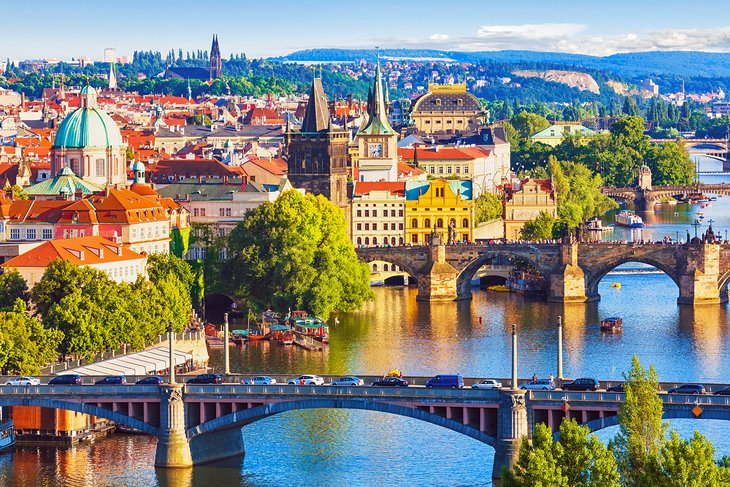
Other top things to do in Prague include visiting Prague Castle , with St. Vitus Basilica , St. George's Basilica, and the Old Royal Palace ; and exploring Wenceslas Square in Prague's New Town, which is also home to the National Museum, as well as fantastic shopping and restaurants.
Also save time for a stroll across the famous Charles Bridge and try to see a performance at the National Theatre .
If you want to take a load off after all that travel and sightseeing, head to Vysehrad Park . You can relax on the lush green lawn near the medieval castle and take in the views on the east bank of the Vltava River. Take selfies from the ledge at the South Gardens at the Prague Castle and use all the red-roofed houses as a postcard-perfect backdrop. Another fun thing to do in Prague is to pose for a photo strip at the Fotoautomat, Prague's oldest photo booth, located just outside the National Theater. It's one of less than 50 vintage analog photobooths still functioning worldwide.
To squeeze in as much as possible on a visit here, consider the Prague Day Trip from Vienna . This well-planned 14-hour tour takes you through the pretty Moravia countryside to Prague for a 2.5-hour guided city tour to see sights such as Charles Bridge, the Old Town Square, Wenceslas Square, and the National Theatre.
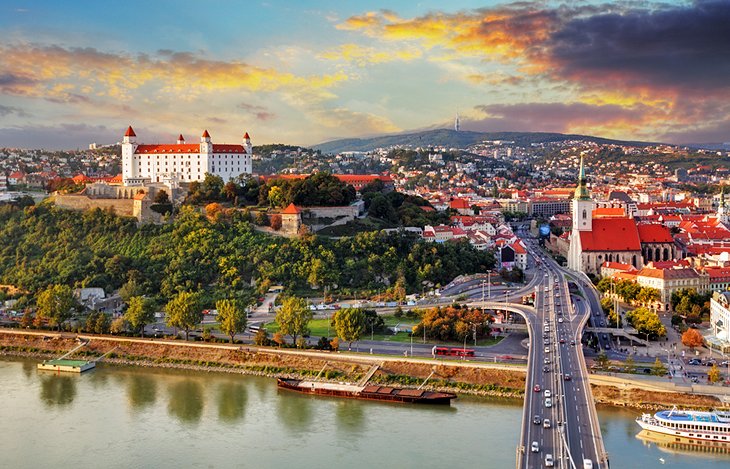
Less than 70 kilometers from Vienna , Slovakia's capital, Bratislava, is an affordable, fun, and easy day out. Old abuts new in this vibrant city, where 18th-century buildings line the streets of the old town, and Soviet-era architecture sits not far beyond. If you're looking for relatively cheap trips from Vienna, this is a great option.
Trains, which take anywhere from 60 to 80 minutes , depart from the main station in Vienna to Bratislava hlavná stanica (the central railway station in the Slovakian capital) throughout the day. Advanced reservations are not required and you can buy a ticket from the vending machine in the station.
The Danube slices through the city, and Bratislava Castle is the focal point, perched on a plateau above the river, with its stark white walls and red-tile roof.
Start your tour in the pedestrian-only 18th-century old town, where you'll find the old town hall , home to Bratislava City Museum, and Michael's Gate from the original medieval fortifications, as well as many restaurants and sidewalk cafés.
Another of Bratislava's top attractions is Grassalkovich Palace , where, the president of Slovakia resides, and if you feel like getting back to nature, hiking trails lace the surrounding Little Carpathian mountains, close to the city.
A fun way to travel from Vienna to Bratislava and explore the city without the stress of navigating your way around is the Bratislava Day Trip tour. This full-day excursion includes a comfortable coach trip to the capital, a walking tour of the old town and all its attractions, and a visit to the Rococo-style Grassalkovich Palace. End your day with a high-speed catamaran trip down the Danube on the return journey.
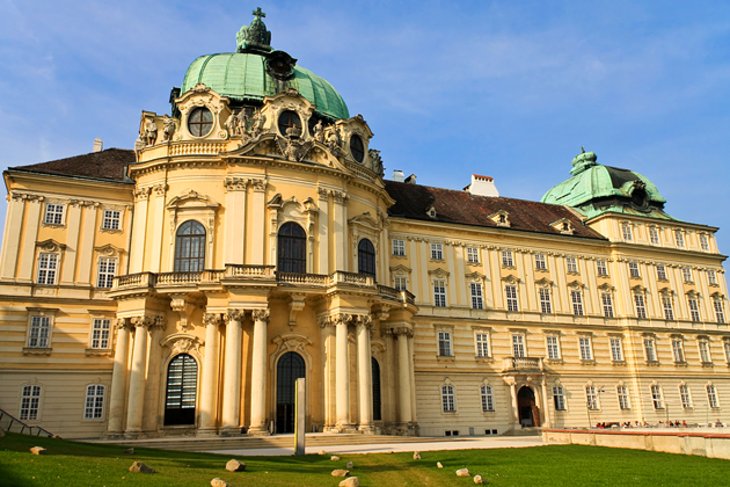
At the edge of the Vienna Woods just 14 kilometers away from Vienna , the Augustinian abbey in the small town of Klosterneuburg attracts many visitors. Perched high above the Danube, Klosterneuburg Abbey (Stiftes Klosterneuburg) was founded in the 12th century, and many newer buildings were added in the 18th and 19th centuries.
You can get there by taking the D tram from Vienna Hauptbahnhof Ost S to Franz Josefs Bahnhof S, then transferring to the S 40 train and getting off at Klosterneuburg Kierling Bahnhof. It's an 11-minute walk from the station to the abbey.
Highlights of this sprawling complex are the church, with its Romanesque and Baroque features, the Leopold Courtyard, and the monastery vaults. The famous Verduner Altar in the Leopold Chapel is especially noteworthy and consists of 45 enameled panels dating from 1181. The newer Baroque building has two copper domes, one surmounted by the German Imperial Crown, the other by the Lower Austrian Archducal Bonnet.
Other notable features include the Baroque main staircase; the Marble Hall, with its fine frescoes; the Imperial Apartment; the Tapestry Room; the Treasury; and the Monastery Museum.
Also of interest is the nearby town of Kierling , with its Kafka Memorial set up in the very room of the sanatorium where the famed writer spent his last days.
Address: Stiftsplatz 1, 3400 Klosterneuburg
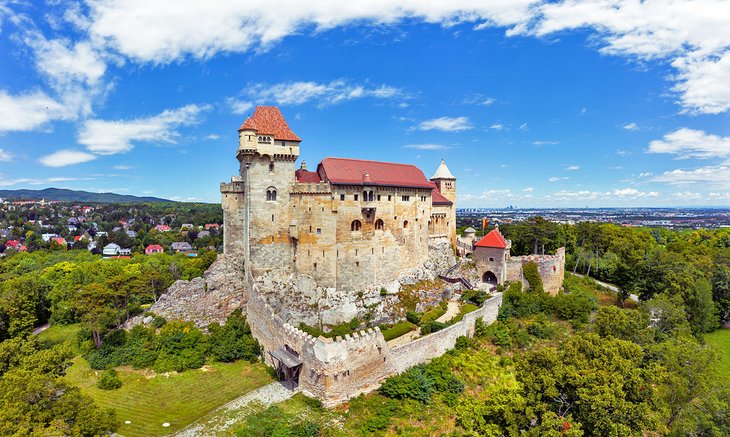
Fabled in song and a favorite getaway for the Viennese, the Vienna Woods also holds a number of interesting attractions for tourists, including a beautiful monastery, historic sites, and natural wonders.
A good place to begin is atop the 484-meter Kahlenberg . This is Vienna's own "mini-mountain," with magnificent views across the city and the Danube all the way to the Little Carpathians and the Schneeberg region.
The Baroque Kahlenberg Church (St. Josef auf dem Kahlenberg) was built on the spot where Polish Prince Sobieski beat the Turkish army besieging Vienna. The Cistercian Abbey of Heiligenkreuz , constructed in 1133, is the oldest continuously occupied Cistercian monastery in the world and one of the most beautiful medieval monasteries. Its highlights include the vaulted Romanesque nave (1187); the 13th-century ribbed vaulting; and the 13th-century choir, considered a masterpiece of Austrian Gothic.
Also in the Vienna Woods is Mayerling , a former imperial hunting lodge. Here, in 1889 the only son of Emperor Franz Joseph and the Empress Elizabeth, Crown Prince Rudolph, was found dead with his mistress Baroness Vetsera, an event that rocked the imperial court.
The largest underground lake in Europe, the Seegrotte was formed when a former gypsum mine was flooded, and you can take a boat ride through its subterranean caverns and passages.
A good way to combine many of these sights is on the Vienna Woods and Mayerling Half Day Trip , which includes guided visits to the Abbey of Heiligenkreuz and Mayerling hunting lodge; a guided walk through the city of Baden; and a scenic ride through the Vienna Woods, past the fairy-tale Liechtenstein Castle .
Address: Kahlenberg, 1190 Wien
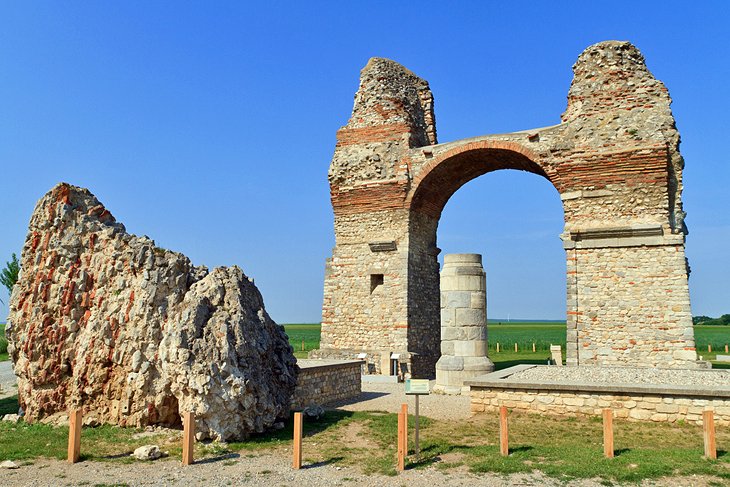
Fields, meadows, vines, and woodland are the distinctive features of the pretty March-Donauland region to the east of Vienna. It was here that many famous battles were fought, including one against the Romans and, centuries later, against the Hungarians, the Turks, and the French under Napoleon.
The region was perhaps most important to the Roman Empire, as witnessed in the spectacular ruins of the fortified town they built here, once home to a population of more than 50,000. Now part of a superb historic attraction, Archaeological Park Carnuntum is a reconstruction of the key buildings from the 1st-century town, including a city mansion, a citizen's house, and Roman baths, as well as a semi-reconstructed practice arena of a gladiator school that was discovered in 2011. The park offers fun events and programs for the whole family.
It's about 42 kilometers away from Vienna and can be reached by train. Take the S7 from Wien Rennweg for 53 minutes to Petronell-Carnuntum Bahnhof, then walk 15 minutes (or take a taxi) to the archeological park.
Address: Hauptstrasse 1a, 2404 Petronell-Carnuntum
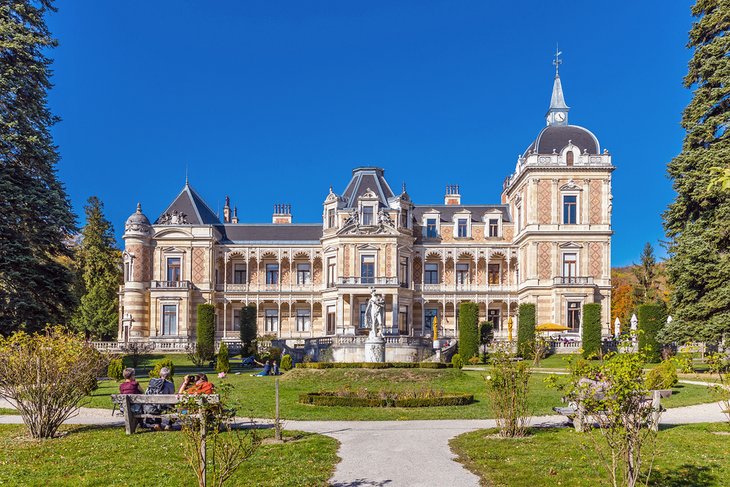
Just 26 kilometers from Vienna , the Lainzer Wildlife Park (Lainzer Tiergarten) occupies 24 square kilometers of the Vienna Woods. Famous as a place of relaxation and escape from the big city, it's a haven for old oak and beech trees (some more than 350 years old), as well as wildlife such as deer and boar. Once the hunting reserve of Emperor Joseph II, it was fenced off with a 24-kilometer-long stonewall in 1787 on the orders of Empress Maria Theresa.
Opened to the public in 1921, this important conservation area includes more than 80 kilometers of footpaths and the 14-meter-high Hubertuswarte observation tower on the Kaltbründlberg.
Another tourist attraction on the edge of the Vienna Woods is Baden bei Wien , a spa town famous for its curative waters (the Romans called the town Aquae). Today, nearly 2,000 years later, the town's sulfur springs still spew out six-and-a-half million liters of therapeutic warm water every day.
Address: Hietzing-West, 1130 Wien
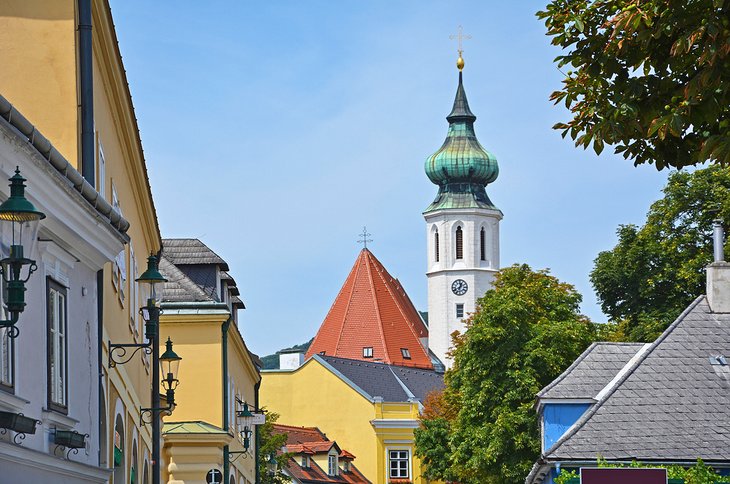
Just 17 kilometers northeast of Vienna , the pretty little village of Grinzing was first mentioned in 1114. Destroyed numerous times by war, the current structures in the village date predominantly from the 19th century, and its wooded setting, quaint gardens, and winding streets, make it a fun place to explore.
Grinzing is also unique in that local laws allow individuals to purchase tiny plots of land where vines may be grown. It's also well known for its many typical Austrian restaurants (Heuriger), famous for indicating whether they're open by placing branches of spruce over their entrances. The area is also popular among hikers, especially for the trails around the nearby Kahlenberg and Leopoldsberg hills.
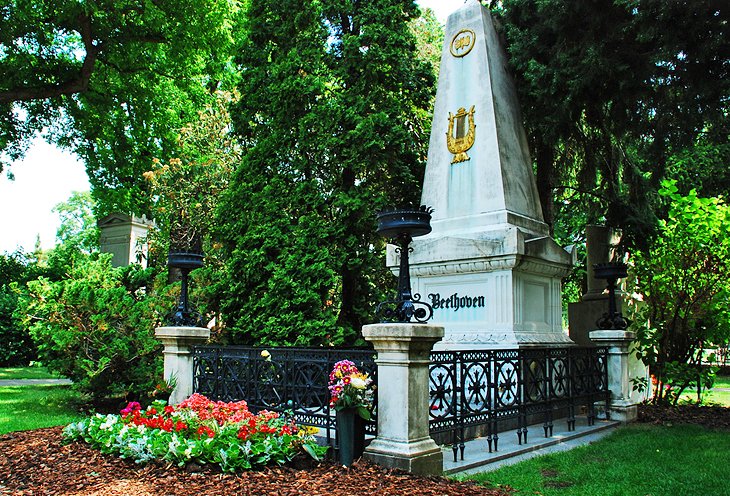
The oldest of the "Viennese villages" on the city's outskirts, Heiligenstadt was incorporated into the district of Döbling in 1892 and is famous for its quiet, narrow winding streets, especially around the historic homes of Probusgasse and Armbrustergasse. It's located about 9 kilometers from central Vienna .
Be sure to roam around St. Jacob's Church on the Pfarrplatz, built in Romanesque style on Roman foundations.
Heiligenstadt's most important claim to fame, however, was the fact it was visited several times by Ludwig von Beethoven, including in the autumn of 1802 while working on his Second Symphony. It was here, at 6 Probusgasse, that he wrote his Heiligenstadt Testament, a letter to his brothers in which he bemoans his increasing deafness (and which he never sent). The home is now a museum - the Beethoven Wohnung Heiligenstadt - dedicated to this period in the composer's life. (Later a resident of Vienna, Beethoven is buried in the Zentralfriedhof , the city's largest cemetery.)
Address: Probusgasse 6, 1190 Vienna
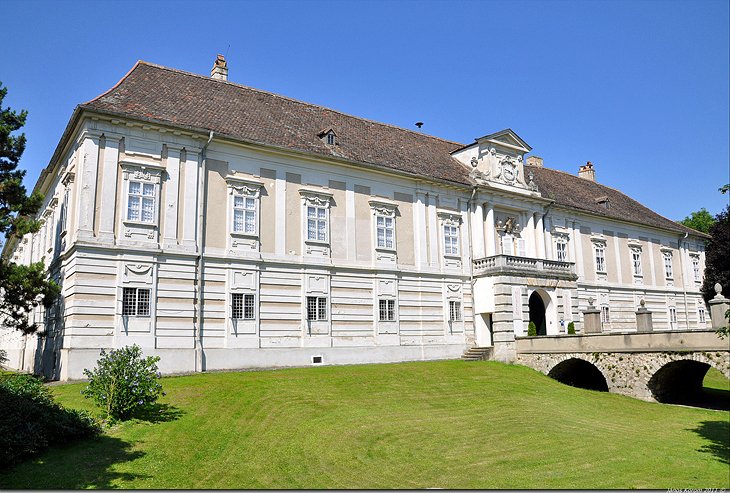
Famous as the birthplace of composer Joseph Haydn in 1732, a trip to Rohrau — just 46 kilometers east of Vienna — is a pleasant way to spend a day. A museum dedicated to the great composer is now housed in the small thatched farmhouse where he was born, and boasts numerous fascinating exhibits and artifacts relating to his life.
Also open is the actual room in which he was born, refurbished as it would have been at the time. Another highlight of a visit to Rohrau is the castle that once belonged to Count von Harrach. This splendid attraction is now a fine arts museum possessing the Count's vast collection of paintings - all told, more than 200 paintings are held here, including works by Rubens and Van Dyck.
Address: Schloss Rohrau 1, 2471 Rohrau
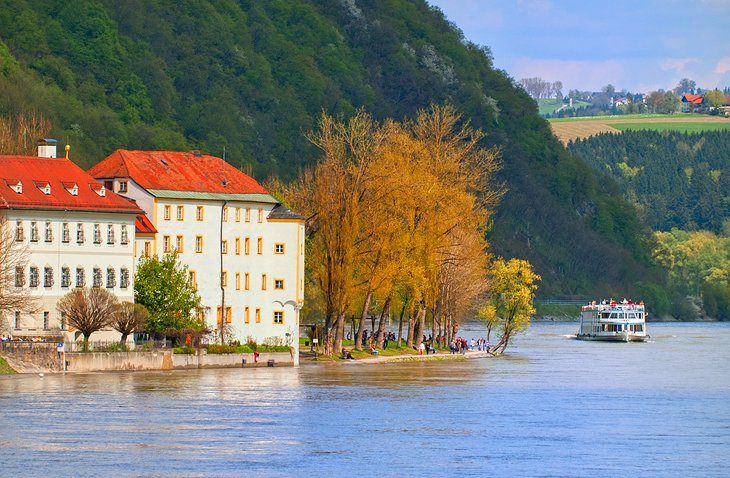
A trip along the Danube by boat, through the Danube Valley, offers you the chance to see some of the most beautiful scenery around Vienna. Destinations include cities such as Budapest and Bratislava (up to four days round-trip), or simply a short one- or two-hour jaunt.
In the other direction (upstream) the Danube leads to the Wachau Valley or to Melk with its famous abbey. A variety of fun themed cruises are also available, from fine dining to classic ballroom dancing in the evenings. Alternatively, visitors can hire a boat taxi to explore Vienna from the water.
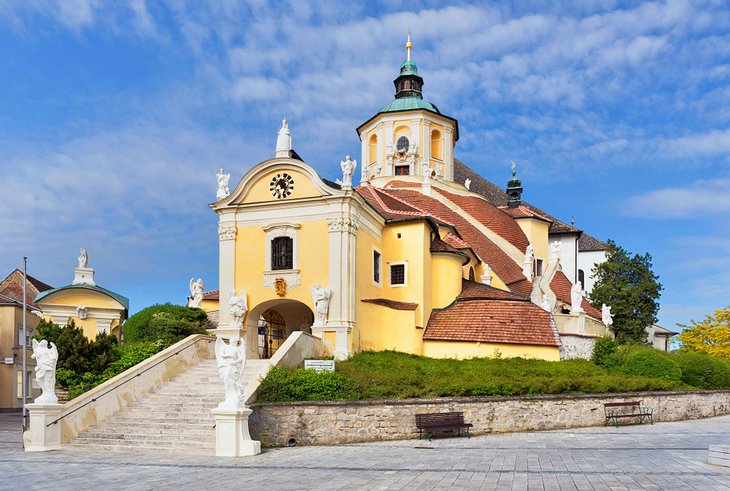
About 62 kilometers south of Vienna , picturesque Eisenstadt is famous for its connection to one of Austria's greatest composers: Joseph Haydn. Haydn lived here for many years, and today his house serves as a museum celebrating his life and times (he was buried in the Bergkirche above the town). Bus 200 or the REX 64 train can get you there in less than an hour and 15 minutes from Vienna.
Be sure to explore the lovely Old Town , also known as Freistadt (Free Town), traversed by three long streets opening off the main square: Hauptstrasse, Pfarrgasse, and Haydngasse. It's here you'll find the 17th-century Town Hall (Rathaus).
Afterwards, head to Schloss Esterházy , the former palace of Prince Esterházy. Originally a medieval stronghold, it was rebuilt in Baroque style in 1672, with its stunning rear façade remodeled in neoclassical style between 1797 and 1805. Highlights of a visit include the exquisite Haydn Room, with its colorful frescoes and busts (English language guided tours are available).
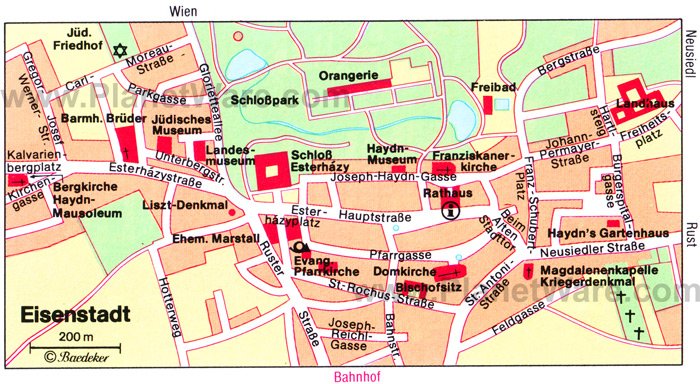
Laa an der Thaya lies about 68 kilometers north of Vienna on the Czech frontier . Highlights of a visit include the remains of the town's medieval walls and the massive moated 13th-century castle - Laa Castle - with its well-preserved battlements and towers, and fine panoramic views.
Try to visit the Old Town Hall (Altes Rathaus), home of the Südmährermuseum Thayaland , an informative local history museum with displays of artifacts and traditional clothing.
Other notable highlights include the 13th-century Gothic parish church of St. Vitus, with its High Altar dating from 1740, and the Plague and Trinity columns from 1680.

More on Austria
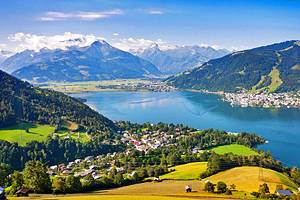
A First Timer’s Guide to Visiting Vienna, Austria
Disclaimer: This article includes affiliate links to the products we earnestly love and recommend, meaning at no extra cost to you, we might make a teeny-weeny commission if you click on the link and decide to buy something. The money will be used to sustain this little cozy blog we call our virtual home.
On the hunt for the ultimate resource for your Vienna adventure? Look no further! This guide is packed with all the essentials you’ll need for a memorable stay in Austria’s capital. If you’re visiting Vienna for the first time and want to know everything to navigate it better, we’ve got you covered with insider tips and must-knows. Let’s make your Vienna journey truly unforgettable!
Visiting Vienna Travel Guide
From its rich cultural heritage to its mind-blowing art scene to its stunning architecture to UNESCO-listed Viennese Coffee House Culture and not to mention, iconic traditional food – Vienna has oodles to offer to its visitors . It truly stands out as one of Austria’s most enchanting destinations .
With an endless number of interesting museums, galleries, and cultural institutions like Kunsthistorisches Museum, Albertina, Leopold Museum, Belvedere Palace, and so on, Vienna is also one of the best cities for arts and culture. It’s here, you’ll find the masterpieces of famous artists like Gustav Klimt, Egon Schiele, and Oskar Kokoschka.
Now we can’t talk about Vienna without mentioning its timeworn tradition of classical music. Known as the “City of Music”, famous composers like Mozart, Beethoven, and Strauss called it home.
Vienna beautifully manages to keep its classical music tradition alive. You can attend spellbinding concerts at historical musical venues around the city, such as the Vienna State Opera, the Vienna Philharmonic, and the Musikverein.
The fans of architecture will appreciate the city for its unique and elegant architecture that blends Gothic, Baroque, and Art Nouveau styles.
Also, there are umpteen historic restaurants, coffeehouses, and wine taverns around the city for you to bask in the world-famous Viennese coffee culture , wine culture, and traditional cuisine.
And just as importantly, If and when you need a peaceful respite from the city, there’s no dearth of lush green spaces to relax and unwind. The best part is that most of the beautiful parks, gardens, and nature reserves in Vienna such as the Schönbrunn Palace Gardens, the Stadtpark, and the Vienna Woods are free!
Where is Vienna in Austria?
The largest city and the capital of Austria, Vienna sits gracefully along the banks of the Danube River.
Situated at the core of Central Europe , Vienna is frequently dubbed the “City of Music” due to its rich musical heritage. Additionally, its title as the “City of Dreams” pays homage to its most renowned resident, Sigmund Freud, the pioneer of psychoanalysis.
Things to Know Before Visiting Vienna, Austria
The exploration becomes all the more easy with all the practical information under your belt. Here are the essentials you need for planning a trip to Vienna:
How Long Should You Spend in Vienna
Deciding how long to spend in Vienna really depends on what you want to get out of your visit. If it’s your first time and you’re keen on hitting all the iconic sights like St. Stephen’s Cathedral, Hofburg Palace, and the Vienna State Opera, then a minimum of three to four days is recommended.
With three or four days in Vienna, you can get the vibe of the city and can tick off the major tourist attractions. With mannerly planning, you might be able to squeeze in some of the lesser-known wonders too.
But let’s be real, Vienna has layers, and to truly peel them back—a week would let you dive deeper. You’ll have time to explore the artsy districts, indulge in Viennese coffee culture, and maybe even catch a live classical music performance.
Trust me, Vienna is the sort of city that reveals itself slowly; the longer you stay, the more hidden gems you’ll discover.
Best Time to Visit Vienna

Vienna is beautiful no matter the season. It’s truly a year-round destination. As such there’s no best time to visit Vienna – Every season has its own charms and quirks!
To put it in other words, the best time to visit Vienna depends totally on your personal preferences and what you want to do and see in the city.
If you’re looking for warm weather and outdoor activities, June through September is the best time to plan.
If you want to experience Vienna’s festive mood and Christmas cheer , you should plan around December. Winter is also a good time for a peaceful city break.
Wine lovers can plan during the wine harvest season that peaks in September and October. It’s also the beautiful time of the year when autumn foliage envelops the city’s parks.
The spring months of March and April bring milder temperatures and vibrant spring blooms.
Overall, the best time to visit Vienna would be during the shoulder seasons of spring (April to May) and fall (September to October). During these months, the weather is pleasant and the crowds are fewer. Additionally, you can expect to grab good deals on accommodation, flights, and tours.
How to Get to Vienna
Vienna being one of the most popular cities across the world is easy to get to with several transportation options available.
With a well-served International Airport, there are plentiful airlines, direct and indirect, flying to Vienna from various cities across the world.
If you are coming from one of the neighboring European cities like Budapest, Prague, Munich, Bratislava, or Zagreb, Vienna has a robust inter-country rail network system. It has several train stations, with the main one being the Wien Hauptbahnhof or Vienna Central Station. You can check the timetables, and ticket prices, and book your tickets online using Trainline or Rail Europe.
If you prefer a bus journey, there are several bus companies offering services to Vienna from other European cities. Vienna International Bus Terminal handles tons of international bus connections. Flixbus comes in handy when you want to book bus tickets online.
And did you know, you can travel to Vienna by boat or ferry if you are coming from Bratislava, Slovakia?
And then comes our favorite way to travel between European countries – by rental car. Nothing competes for the freedom it brings. Consider Discover Cars for cheap and the best car rental hire in Europe.
How to Get to the City from the Airport
With a distance of about 18 km, there are several transportation options available to travel between Vienna International Airport and Vienna city center.
The fastest way to get to the city center from the airport is by riding the City Airport Train (CAT) from the airport terminal. This non-stop train runs every 30 minutes and takes a little over 15 minutes from the airport to Wien-Mitte Station.
S-Bahn is also a great option and affordable too. The S7 line runs between the airport and the city center, with trains departing every 30 minutes wherein a 25-minute journey stops at different stations in the city center, including Wien Mitte and Wien Praterstern. You can choose to take a drop at the nearest to your hotel.
You can opt to board an Airport Bus. Vienna Airport Lines operates quite a few bus routes that connect the airport to different parts of the city. The most convenient one is bus 1187 which runs every 30 minutes and takes 20 minutes to reach Wien Hauptbahnhof, the main train station in Vienna.
The easiest yet most expensive way to get to the city center is by hiring a taxi or ride-hailing services like Uber and Bolt. It takes about 20-30 minutes to reach, depending on traffic.
For first-timers, pre-booking an airport transfer is a convenient and hassle-free option. At €36, including full meet-and-greet support and a local, English-speaking driver, it’s fairly priced.
How to Get Around Vienna

Vienna enjoys an extensive public transportation network that makes getting around the city almost effortless and affordable.
The public transportation system includes buses, trams, and underground trains (U-Bahn). Covering the length and breadth of the city, Vienna U-Bahn or Subway is an exceptionally efficient and cost-effective way to move around Vienna.
You can purchase a Vienna Card online to get unlimited public transport use for 24, 48, or 72 hours.
Walking can be a great way to explore the city’s historic centre, the cultural heart of Vienna as nearly all the top attractions are within walking distance.
With a good number of bike paths, Vienna makes for a great bike-friendly city. You can rent a bike from one of the many bike rental companies like Citybike Wien and explore the city’s hidden gems on bikes.
For attractions that are out a bit, taxis and other ride-hailing services like Uber and Bolt be more expensive, however, be efficacious.
I highly recommend downloading a mobility app called WienMobil from Wiener Linien – no matter how you are traveling around Vienna – by public transport, by bike, by taxi, or on foot – this app literally brings the entire city to your fingertips.
Where to Stay in Vienna
Innere Stadt aka the First District, the historic old town and the heart of the city’s cultural and iconic tourist attractions like St. Stephen’s Cathedral, the Hofburg Palace, and the Vienna State Opera is the best neighborhood to stay in Vienna for the first-timers.
Also, it’s here where you’ll find most of the famous restaurants and cafes.
The neighborhood is pedestrian-friendly so it’s easy to explore on foot. Plus, being the center of the city, it’s also well-connected to the efficient public transportation system of Vienna, so you can easily get to the other parts of the city.
From budget-friendly hotels to mid-range accommodations to luxurious properties to charming boutique hotels – there are plenty of accommodation options in Innere Stadt for every budget and style.
Here are my recommendations for accommodations in Innere Stadt:
Budget travelers will love Palais Elegance Wien , a lovely hotel that offers comfortable rooms, studios, and apartments with modern designs and most importantly, a central location. Each accommodation comes with city views.
A dependable mid-range option in Innere Stadt, Hotel König von Ungarn is the oldest hotel in Vienna. Founded in 1746, the hotel raves exclusively designed and decorated rooms and promises a traditional Viennese ambiance. A lucky find for culture lovers!
Hotel Sacher Wien is Vienna’s premier hotel and is in a class of its own when it comes to luxury. Talking about the location, It’s just opposite the iconic Vienna State Opera – as good as it gets. It offers individually decorated rooms and world-class service.
Next door to the Innere Stadt, MuseumsQuartier in the 7th district (Neubau) of Vienna is a beautiful art center in Vienna and my favorite place to stay in Vienna. It has an artsy vibe and an incredible cultural scene. You can book a stay at the 25hours Hotel at MuseumsQuartier for a unique experience.
Just about a 5-minute walk from MuseumQuartier, in a charming neighborhood of Spittelberg is Hotel Altstadt Vienna , another favorite. Set in a renovated historic building, it’s a gorgeous boutique hotel with an elegant and cozy vibe.
What to do in Vienna

Vienna, a charming city where classical music, art, and coffee culture thrive.
First and foremost, immerse yourself in the city’s musical heritage. Attend a soul-stirring performance at the Vienna State Opera or the Musikverein.
For those with a penchant for imperial grandeur, the palatial splendors of Schönbrunn Palace and Belvedere Palace beckon.
As you wander, don’t miss the chance to savor a cup of traditional Viennese coffee in one of the city’s iconic coffeehouses. It’s not just a beverage here; it’s an experience, especially when paired with a slice of the world-famous Sachertorte.
The MuseumsQuartier is a haven for art lovers, with contemporary art spaces nestled alongside historic museums.
Embrace the rhythm of Vienna by attending one of its grand balls. Even if you’ve got two left feet, the magic of the evening is bound to sweep you off them.
A bustling market of Naschmarkt is where you can find the variety of flavors from around the world, everything from local cheeses to exotic spices.
And for those who need a touch of nature, the Vienna Woods offer the perfect escape—a tranquil haven where the city’s hustle and bustle seem a world away.
Lastly, Sipping wine at a Viennese Heurigen is an experience that goes beyond mere tasting—it’s a cultural deep dive.
As you wander into one of these rustic wine taverns, often family-owned and situated amidst vineyards, mostly sprinkled throughout Vienna’s outskirts such as Grinzing, Neustift am Walde, and Nussdorf, you’ll feel a sense of timelessness. Here, the wine flows from barrels, not bottles, and it’s as local as it gets, usually produced from grapes grown on the surrounding hills.
We have a detailed post about the best things to do in Vienna for you.
Day Trips from Vienna
As I said, Vienna is a great base to explore the nearby Austrian gems, Here are our top 6-day trips from Vienna suggestions: 1. Wachau Valley 2. Hallstatt 3. Grossglockner 4. Bratislava 5. Salzburg 6. Budapest
Here’s a detailed post about the best day trips from Vienna for you.
What and Where to Eat in Vienna

From traditional to modern, sweet to savory, there’s something for every palate in Vienna.
Indulge in Sachertorte , a chocolate cake that’s a Viennese classic, at its birthplace, Hotel Sacher .
For savory delights, Wiener Schnitzel is a must-try, especially at Figlmüller aka the Home of the Schnitzel, and no trip to Vienna is complete without sampling their iconic Apfelstrudel .
If you’re a fan of sausages, don’t miss the Käsekrainer , a cheese-filled sausage.
Eiernockerl are comforting Austrian dumplings, a simple yet satisfying blend of eggs, flour, and a pinch of salt. For dessert, don’t miss Kaiserschmarrn , a delectable shredded pancake that epitomizes Austrian sweet indulgence.
Palatschinken , Austrian pancakes, are perfect for those with a sweet tooth, and for a quick snack, Pretzels are readily available at street corners.
For those who want to dine like a local, check out Gasthaus Pöschl for traditional Austrian fare. Plachutta Wollzeile is the go-to spot for the best Tafelspitz (boiled beef) in town. Vegetarians shouldn’t miss Deli Bluem , a cozy spot serving plant-based delights.
When it comes to quick bites, Trzesniewski offers a range of open-faced sandwiches that are perfect for on-the-go snacking.
If you’re an aficionado of all things sweet, head straight to Demel . Known for its dazzling display of cakes, tortes, and pastries, Demel is a dessert lover’s paradise.
For coffee aficionados, the cafes to put on your radar are Cafe Central , Cafe Sacher , Cafe Sperl , and Cafe Schwarzenberg , Cafe Landtmann , Cafe Frauenhuber , and Hawelka . Each offers a unique blend of history, coffee, and delectable pastries.
For those traveling with family, Zum Schwarzen Kameel offers a versatile menu that pleases both young and old. For dessert, Xocolat serves up a variety of handmade chocolates that are sure to be a hit with the kids.
And there you have it—your ultimate guide to making the most of Vienna. If you find yourself pondering over any details or in need of extra insights, don’t hesitate to hit us up in the comments. We’re all about making your Austrian escapade nothing short of fabulous.
Save this Travel Guide to Vienna to Pinterest

Anjali Chawla
Leave a Comment Cancel reply
© 2024 Travel Melodies. All Rights Reserved.
As an Amazon Associate, we earn from qualifying purchases.
Vienna Travel Guide
Book your individual trip , stress-free with local travel experts
- roughguides.com
- Travel guide
- Local Experts
- Travel Advice
Accommodation
Plan your tailor-made trip with a local expert
Book securely with money-back guarantee
Travel stress-free with local assistance and 24/7 support
Most people visit VIENNA (Wien) with a vivid image in their minds: a romantic place, full of imperial nostalgia, opera houses and exquisite cakes. Even so, the city can overwhelm with its eclectic feast of architectural styles, from High Baroque through the monumental imperial projects of the late nineteenth century, to the decorative Jugendstil (Art Nouveau) style of the early twentieth, used to great effect on several of the city’s splendid U-Bahn stations.
The Belvedere
Drinking and nightlife, entertainment, the hofburg, kärntnerstrasse and graben, the kunsthistorisches museum, the museumsquartier, the ring and rathausplatz, the secession, stephansdom, vienna’s heurigen.
Vienna became an important centre in the tenth century, then in 1278 the city fell to Rudolf of Habsburg, but didn’t become the imperial residence until 1683. The great aristocratic families flooded in to build palaces in a frenzy of construction that gave Vienna its Baroque character. By the end of the Habsburg era the city had become a breeding ground for the ideological passions of the age, and the ghosts of Freud, Klimt and Schiele are now some of the city’s biggest tourist draws.
WHAT TO SEE AND DO
Central Vienna is surprisingly compact, with the historical centre, or Innere Stadt, just 1km wide. The most important sights are concentrated here and along the Ringstrasse – the series of traffic- and tram-clogged boulevards that form a ring road around the centre. Efficient public transport allows you to cross the city in less than thirty minutes, making even peripheral sights, such as the monumental imperial palace at Schönbrunn , easily accessible. However, for all the grand palaces and museums, a trip to Vienna would not be complete without spending a leisurely afternoon over a creamy coffee and a piece of cake in one of the grand, shabby-glamorous coffeehouses for which the city is famous.
Tailor-made travel itineraries for Austria, created by local experts
_listing_1640546826392.jpeg)
15 days / from 6206 USD
Capitals of Europe - Berlin, Prague, Vienna and more
This trip is ideal for all city & culture lovers: the Reichstag in Berlin, the castle in Prague, historical Cesky Krumlov, St Stephen's Cathedral in Vienna, the fortress above Salzburg and Schloss Neuschwanstein near Munich - these are just some of the highlights of this incredible roundup trip.
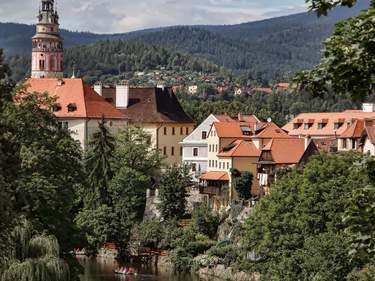
11 days / from 4173 USD
Castles across Austria and Czechia
Austria and Czechia are home to some of the world's most beautiful architecture and culture gems, such as Schloss Schönbrunn in Vienna, Prague castle, the fortress above Salzburg and many more. Finish your tour with a visit to Schloss Neuschwanstein before flying out of Munich.
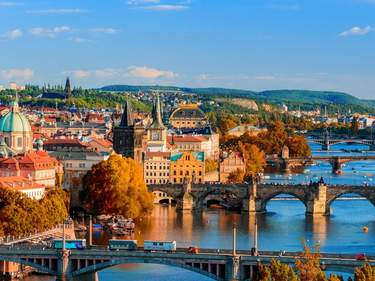
11 days / from 3478 USD
Exclusive trip to Prague and Austria
Explore the main highlights of Central Europe: fascinating Prague & historical Cesky Krumlov, the highlights of Vienna, Salzburg and Innsbruck in Austria and then further on to Germany - get in the Disney spirit at Schloss Neuschwanstein.
For cheaper accommodation booking ahead is essential in summer. Several hostels are near the Westbahnhof, which is an easy few stops into the centre.
South of the Ringstrasse, the Belvedere (daily 10am–6pm; Oberes €14, combined ticket €20; tram #D from the opera house) is one of Vienna’s finest palace complexes. Two magnificent Baroque mansions face each other across a sloping formal garden. The loftier of the two, the Oberes Belvedere, has the best concentration of paintings by Klimt in the city, including The Kiss, while the Unteres Belvedere and Orangerie show temporary exhibitions.
For a bar crawl or live music the string of clubs under the railway arches around U Thaliastr, Josefstädterstr. and Alser str. are a good bet, while in summer beach bars line the Donaukanal.
The local listings magazine Falter ( w www.falter.at ) has comprehensive details of the week’s cultural programme. The tourist office also publishes the free monthly Programm .

Hofburg palace on St. Michael square (Michaelerplatz), Vienna, Austria © Mistervlad/Shutterstock
A block southeast of Graben is the immense, highly ornate Hofburg palace , housing many of Vienna’s key imperial sights. Skip the rather dull Kaiserappartements in favour of the more impressive Schatzkammer (Mon & Wed–Sun 9am–5.30pm; €12), where you’ll see some of the finest medieval craftsmanship and jewellery in Europe, including relics of the Holy Roman Empire and the Habsburg crown jewels. The Hofburg is also home to two of Vienna’s most enduring tourist images: singing boys and prancing horses. Steps beside the Schatzkammer lead up to the Hofmusik Kapelle (Mon & Tues 10am–2pm, Fri 11am–1pm; free), where the Vienna Boys’ Choir sings Mass (mid-Sept to June Sun 9.15am; t 01 533 99 27): you can obtain free, standing tickets from 8.30am (otherwise €10–36; book in advance).
On the north side of the Hofburg, the imperial stables are home to the white horses of the Spanish Riding School , known for their extraordinary, intricate performances. There are three main ways to see them: book a performance well in advance (mid-Feb to mid-June & mid-Aug to Dec, usually Sat & Sun at 11am, occasionally Fri & eves; standing from €25, seats from €50); attend a morning exercise session (10am–noon: April–June, Sept & Oct Tues–Fri; Nov–March & Aug Tues–Sat; tickets for exercise session and tours from Michaelerplatz visitor centre Tues–Sun 9am–4pm; €15); or join a guided tour
of the school and stables (March to mid-June & Aug to mid-Dec daily, otherwise 5–6 days per week; tours 2pm, 3pm & 4pm; tour €18; combined tour and training session €31). Alternatively, if you just want to take a peek at the horses, look into the stables (Stallburg) from the glass windows on Reitschulgasse.
Finally, at the Hofburg’s southeastern tip, the Albertina (daily 10am–6pm, Wed till 9pm; €12.90) houses one of the world’s largest graphic art collections, with works by Raphael, Rembrandt, Dürer and Michelangelo.
Though one of Vienna’s prettiest little squares, Judenplatz , northwest of Stephansdom, is dominated by a deliberately bleak concrete Holocaust Memorial by British sculptor Rachel Whiteread. The square marks the site of the medieval Jewish ghetto and you can view the foundations of a fourteenth-century synagogue at the excellent Museum Judenplatz at no. 8 (Mon–Thurs & Sun 10am–6pm, Fri 10am-5pm; €10), which brings something of medieval Jewish Vienna to life. The ticket includes entrance to the intriguing Jüdisches Museum of Jewish tradition and culture, at Dorotheergasse 11 to the south of Stephansplatz (Mon–Fri & Sun 10am–6pm).

Stephansplatz, Vienna © Shutterstock
From Stephansplatz, pedestrianized Kärntnerstrasse runs south past street entertainers and shops to the illustrious Staatsoper , opened in 1869 in the first phase of the Ringstrasse’s development. A more unusual tribute to the city’s musical genius is the state-of-the-art Haus der Musik , Seilerstätte 30, (daily 10am–10pm; €13), a hugely enjoyable museum of sound.
Running west of Stephansplatz is the more upscale Graben, featuring an extremely ornate plague column ( Pestsäule ), built to commemorate the 1679 plague.
Of all Vienna’s museums, the Kunsthistorisches Museum on Burgring still outshines them all (June–Aug daily 10am–6pm, Thurs till 9pm; Sept–May Tues–Sun 10am–6pm, Thurs till 9pm; €15). It’s one of the world’s greatest collections of Old Masters – comparable with the Hermitage or Louvre. Highlight is an unrivalled collection of sixteenth-century paintings by Brueghel the Elder, while the Peter Paul Rubens collection is also very strong and works by Vermeer and Caravaggio are worth seeking out. A number of Greek and Roman antiquities add breadth and variety. Set aside several hours at least: there is also an excellent café.
On the Ring’s eastern section, beyond Stubenring, is the enjoyable MAK (Tues 10am–10pm, Wed–Sun 10am–6pm; €9.90, free Tues 6–10pm), an applied arts museum whose eclectic collection spans the Romanesque period to the twentieth century and includes an unrivalled Wiener Werkstätte collection.
Southwest of the Ring is Vienna’s MuseumsQuartier, a collection of museums and galleries in the old imperial stables, where the original buildings are enhanced by a couple of striking contemporary additions. Stylish outdoor seating, plenty of good cafés and an interesting calendar of events make the area a focus for Vienna’s cultural life. The best museum here is the Leopold Museum (Mon, Wed & Fri–Sun 10am–6pm, Thurs 10am–9pm; €13), with fine work by Klimt and the largest collection in the world of works by Egon Schiele.
The Ring, the large boulevard that encircles the Innere Stadt, along with its attendant monumental civic buildings, was created to replace the town’s fortifications, demolished in 1857, many of these buildings now house museums. On the western section is the showpiece Rathausplatz , a square framed by four monumental public buildings: the Rathaus (City Hall), the Burgtheater, Parliament and the Universität – all completed in the 1880s.
The biggest attraction in the city suburbs is the imperial summer palace of Schönbrunn (U4 to Schönbrunn), designed by Fischer von Erlach on the model of residences like Versailles. To visit the palace rooms or Prunkräume (daily: April–June, Sept & Oct 8.30am–5pm; July & Aug 8.30am–6pm; Nov–March 8.30am–4.30pm) there’s a choice of two tours: the “Imperial Tour” (€13.30), which takes in 22 state rooms, and the “Grand Tour” (€16.40 with audioguide, €19.40 with tour guide), which includes forty rooms. The shorter tour misses out the best rooms – such as the Millions Room, a rosewood-panelled chamber covered from floor to ceiling with wildly irregular Rococo cartouches, each holding a Persian miniature watercolour. The palace gets unbearably overcrowded at the height of summer, with lengthy queues, so buy tickets in advance online. The splendid Schlosspark (daily 6.30am–dusk; free) is dotted with attractions, including the Gloriette – a hilltop colonnaded monument, now a café and terrace with splendid views (terrace daily: mid-March to June, Sept & Oct 9am–6pm; July & Aug 9am–7pm; late Oct to early Nov 9am–4pm; €3.60), fountains, a maze and labyrinth (same hours as Gloriette; €5.20) and Vienna’s excellent Tiergarten or zoo (daily: Jan, Nov & Dec 9am–4.30pm; Feb 9am–5pm; March & Oct 9am–5.30pm; April–Sept 9am–6.30pm; €18.50).

Schönbrunn, Vienna © Shutterstock
The eccentric, eye-catching building crowned with a “golden cabbage” by Karlsplatz is the Secession building (Tues–Sun 10am–6pm; €9.50), built in 1898 as the headquarters of the Secessionist movement, whose aim was to break with the Viennese establishment and champion new ideas of art and aesthetics. Designed by Joseph Maria Olbrech, the gallery was decorated by several luminaries of the group, including their first president Gustav Klimt. It still puts on contemporary exhibits today, with Klimt’s Beethoven Frieze downstairs the only permanent artwork.
Mariahilferstr. is best for high-street clothes shops and the big chains, though Neubaugasse, nearby, is more eclectic.
The obvious place to begin exploration is Stephansplatz , the pedestrianized central square dominated by the hoary Gothic Stephansdom (Mon–Sat 6am–10pm, Sun 7am–10pm, except during services; free, but entry fees to most sections, combined ticket €17.90). It’s worth paying to explore the interior more fully, with the highlights of the main section (English tours Mon-Sat 10.30am; €5.50) the Wiener Neustädter Altar, a late Gothic masterpiece, and the tomb of the Holy Roman Emperor Friedrich III. The catacombs (tours every 15–30min, Mon–Sat 10–11.30am & 1.30–4.30pm, Sun 1.30–4.30pm; €5.50) contain the entrails of illustrious Habsburgs housed in bronze caskets. Stellar views reward those climbing the 137m-high (343 steps) south spire; (daily 9am–5.30pm; €4.50). Lower, but with a lift, is the north tower (same hours; €5.50). The warren of alleyways north and east of Stephansdom preserves something of the medieval character of the city, although the architecture reflects centuries of continuous rebuilding.
To sample Austrian wines on a scenic excursion, visit one of the wine-producing villages on Vienna’s outskirts. To the north of the Danube, Stammersdorf (tram #31 from Schottenring; 36min) is surrounded by vineyards and filled with traditional, family-run Heurigen (wine taverns).
Wienhof Wieninger 21 Stammersdorferstr A great place to start, with a pleasant garden, good-value meals (from around €8) and an excellent selection of whites available by the glass (from €1.55). Mid-March to April Fri 3pm–midnight, Sat & Sun noon–midnight, May to mid-Dec Thurs & Fri 3pm–midnight, Sat & Sun noon–midnight.
Discover more places in Austria

- Travel Guide Morocco
- Travel Guide Namibia
- Travel Guide South Africa
- Travel Guide China
- Travel Guide India
- Travel Guide Indonesia
- Travel Guide Japan
- Travel Guide Laos
- Travel Guide Malaysia
- Travel Guide Myanmar (Burma)
- Travel Guide Nepal
- Travel Guide Philippines
- Travel Guide Singapore
- Travel Guide South Korea
- Travel Guide Sri Lanka
- Travel Guide Taiwan
- Travel Guide Thailand
- Travel Guide Australia
- Travel Guide Fiji
- Travel Guide New Zealand
- Travel Guide Belize
- Costa Rica Travel Guide
- Travel Guide Cuba
- Travel Guide Guatemala
- Travel Guide Honduras
- Travel Guide Jamaica
- Travel Guide Nicaragua
- Travel Guide Panama
- Travel Guide Puerto Rico
- Travel Guide Trinidad and Tobago
- Travel Guide Albania
- Travel Guide Austria
- Travel Guide Belgium
- Travel Guide Bosnia-Herzegovina
- Travel Guide Bulgaria
- Travel Guide Cyprus
- Travel Guide Czechia (Czech Republic)
- Travel Guide Denmark
- Travel Guide England
- Travel Guide Estonia
- Travel Guide Finland
- Travel Guide France
- Travel Guide Germany
- Travel Guide Greece
- Travel Guide Hungary
- Iceland Travel Guide
The Rough Guides to Austria and related travel guides
In-depth, easy-to-use travel guides filled with expert advice.

Find even more inspiration here

Planning your own trip? Prepare for your trip
Use Rough Guides' trusted partners for great rates
written by Rough Guides Editors
updated 26.04.2021
Ready to travel and discover Austria?
Get support from our local experts for stress-free planning & worry-free travels.
- Where to stay
- Travel advice
Nomadic Matt's Travel Site
Travel Better, Cheaper, Longer
Vienna Travel Guide
Last Updated: August 9, 2023
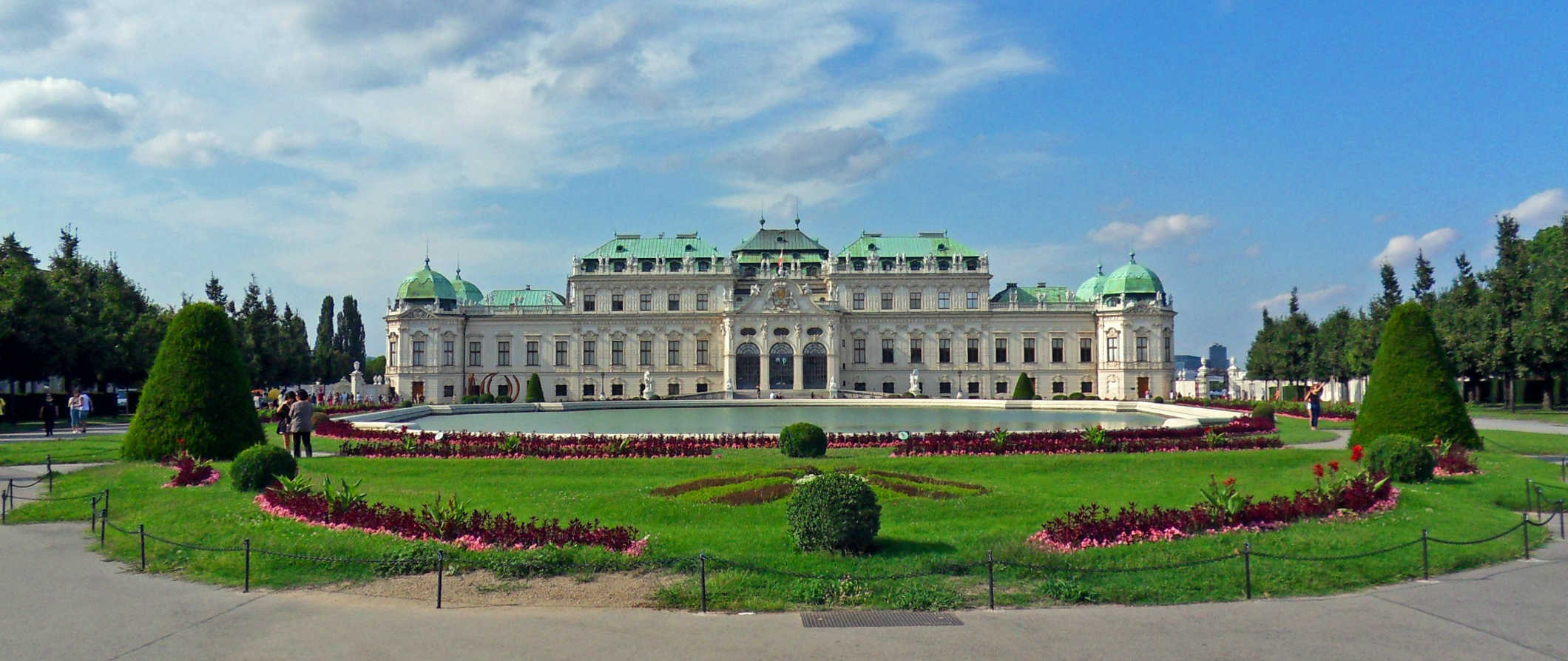
Vienna. Home to schnitzel, Freud, Mozart, the Habsburgs, opera, art, coffee shops, and so much more.
Over the decade I have been visiting this city, I’ve watched Vienna change from a stiff capital city to a cool, hip, foodie, and arty paradise. (Ok, it’s always been an arty paradise and maybe the “stiff capital” was just my incorrect first impression.)
Since my first visit, I’ve come to appreciate the city and all it has to offer. Vienna has countless museums, palaces, markets, restaurants, quirky art exhibits, delicious food halls, neighbors a wonderful wine region, and is a quick train trip to Bratislava .
There’s a lot to do in Vienna and you can easily spend weeks trying to see it all. In fact, there’s so much to do here that I advise you to spend an extra day here. If you think three days is enough, spend four. If you’re here for four, spend five.
No matter how long you plan to be in the city, this Vienna travel guide can help you plan the perfect trip — and save money along the way!
Table of Contents
- Things to See and Do
- Typical Costs
- Suggested Budget
- Money-Saving Tips
- Where to Stay
- How to Get Around
- How to Stay Safe
- Best Places to Book Your Trip
- Related Blogs on Vienna
Click Here for City Guides
Top 5 things to see and do in vienna.
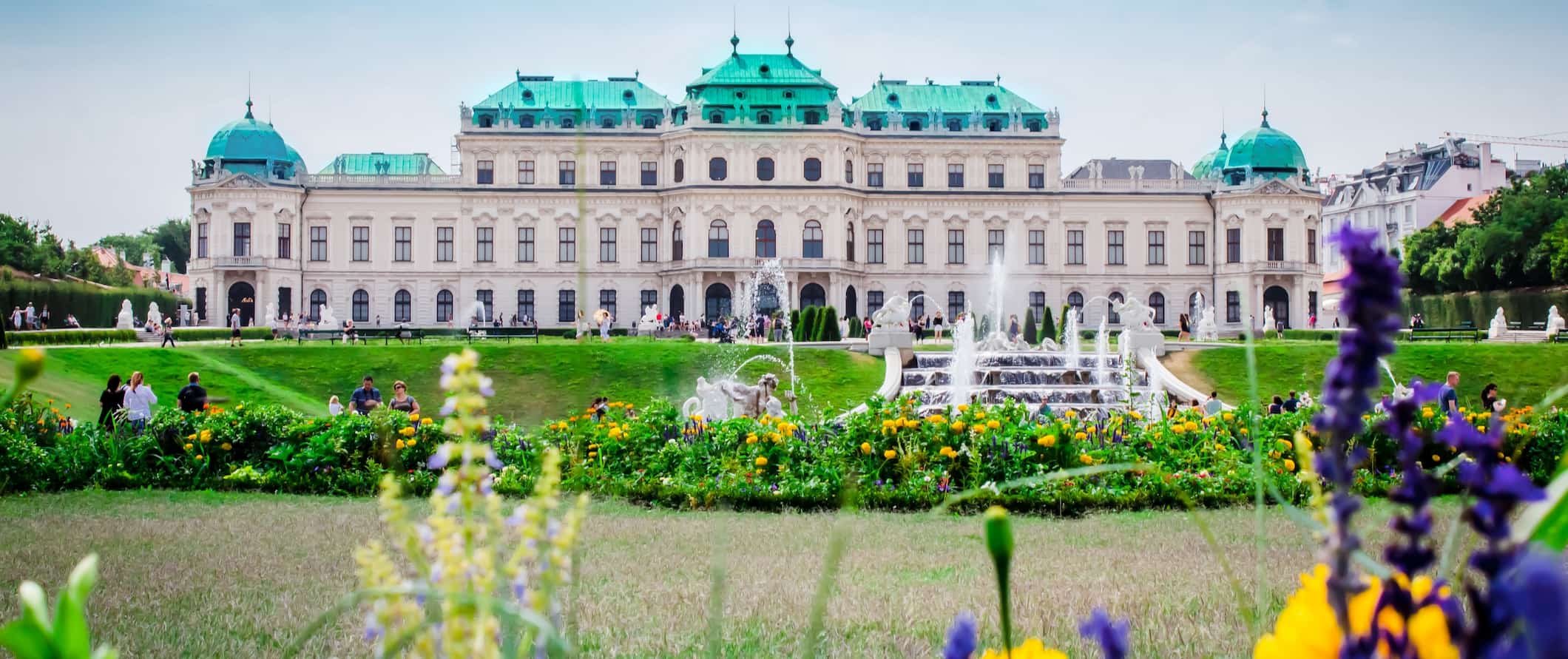
1. See Belvedere Palace
The Belvedere is home to an incredible art collection with works by Renoir, Monet, and Van Gogh, among others. It also has a large portrait collection. The Palace has a permanent collection at the Upper Belvedere while special exhibitions are held at the Lower Belvedere (contemporary art is located at the Belvedere 21, which is nearby). The free grounds feature beautiful fountains, gravel walkways, ponds, statues, plants, and flowers. Admission is 16 EUR and guided tours can be booked in advance for a flat rate fee of 90 EUR for up to 20 people. Belvedere 21 is closed on Mondays but has late night opening on Thursdays.
2. Visit Schonbrunn Palace
This 1,441-room palace is a UNESCO World Heritage Site and started off as a hunting lodge before becoming the summer residence of the Habsburgs, one of the most prominent dynasties in European history, during the 1700s. It’s now one of Vienna’s top attractions. The interior is incredibly ornate with paintings, woodwork, chandeliers, and elaborate decorations. You can explore 22 rooms with the Imperial Tour (18 EUR) or 40 rooms with the Grand Tour (22 EUR). You could easily fill a whole day here.
3. Explore the Hofburg Imperial Palace
One of the biggest palace complexes in the world, the Hofburg is the official residence of the President of Austria. Previously, it was the principal palace of the Habsburg dynasty for more than 7 centuries. There are several exhibits here, including the Sisi exhibit (which highlights the life of Empress Elisabeth) and the royal apartments themselves. The famous Vienna Boys Choir performs at High Mass at the Gothic Imperial Chapel every Sunday. The Sisi costs 16 EUR and includes admission to the Sisi Museum, the Imperial Apartments, and the Imperial Silver Collection. Free audio guides & printed descriptions are available.
4. Visit the Mozart Museum
Though Mozart lived at a handful of different addresses in Vienna, this is the only apartment that has survived. He lived here from 1784-1787. Spread over 3 floors, you can learn about his life, family, music, friends, and listen to his work. The exhibit on the first floor, consisting of four large rooms, two small rooms and a kitchen, is where Mozart and his family actually lived although you have to use your imagination as there is not much left of original furniture and not much is known about how the rooms looked or what they were used for. There’s a variety of paintings, artifacts, letters, and memorabilia from his life as well. Admission is 12 EUR.
5. Do a Wine Tour
Other things to see and do in vienna, 1. see st. stephen’s cathedral.
Stephansdom is a 12th-century Romanesque and Gothic cathedral in Vienna, noted for its colorful roof. The cathedral has been destroyed and rebuilt over the years, with the current version of the cathedral largely initiated by Duke Rudolf IV (1339–1365). Its most recent reconstruction took place just after World War II. You can take a tour of the cathedral, the catacombs, and climb the north and south towers (which offer excellent views of the city). Admission is 20 EUR, guided tours are 3.50 EUR and audio guides are 6 EUR. Catacomb tours are 6 EUR and going up the towers costs 5.50 EUR for the South Tower and 6 EUR for the North Tower.
2. Go to the Naschmarkt
This is Vienna’s largest open-air food market. It’s been operating for hundreds of years and has more than 100 stalls with a variety of international restaurants, street stalls, and grocers. It’s a little touristy (don’t go food shopping here) but it has a cool vibe and, on a warm sunny day, it’s nice to sit out with a meal and a glass of wine. Despite its fame, there are still a lot of locals here. Be sure to hit up Umarfisch for seafood and wine. On Saturdays, there’s a flea market here too.
3. See the art in the Museumsquartier
Once the imperial stables, the Museumsquartier is home to all kinds of art and cultural institutions and events. Three museums worth checking out in the MQ are the Leopold Museum for Art Nouveau and Expressionism; Kunsthalle Wien, an exhibition center with rotating exhibitions; and the Museum of Modern Art, which has the largest collection of modern art in central Europe. A pass to all three museums is 27.50 EUR. The Museumsquartier is also home to a number of festivals throughout the year (including open-air concerts and a fashion week). A variety of tours are run on some Saturdays including a backstage tour offering the chance to see behind the studio doors of the guest artists.
4. Visit the House of Music
This is a small but fascinating museum that features four floors of exhibits on some of the world’s most well-known Austrian composers, including Mozart, Schubert, Strauss, and Schoenberg. You can view manuscripts and artifacts, and there’s also a virtual stage where you can conduct your own symphony. It’s fun, interactive, and educational. Admission is 16 EUR.
5. See a classical performance
Austria has contributed its fair share of composers to the world, so it’s no surprise that you can find plenty of opportunities to indulge in the classics here. Just going to one of the many theaters and concert halls in Vienna is an experience in and of itself as the buildings are so historic and beautifully decorated. If you’ve ever considered taking in an opera, symphony, or ballet (the Vienna State Ballet is one of the best in the world), this is the place to do it. Prices vary depending on the performance but expect to pay at least 40 EUR for standard tickets. For opera, I recommend buying last-minute standing-room tickets for 4-18 EUR the day of a show. The 435 tickets usually go on sale 80 minutes before it starts (you can line up earlier than that, but they don’t start selling until right before the show). It’s first come, first served and you can only buy one ticket per person but it’s the cheapest way to see a performance!
6. Visit the Museum of Art History
This is the largest art museum in the country, with works from ancient Egypt and Greece through to the 18th century. There are over 700,000 items in the collections so it’s worth taking the time to explore (especially if you’re a history buff like me). Opened in 1891, the primary collection originally belonged to the Habsburgs, which includes tons of portraits and armor. Admission is 18 EUR.
7. Hang out in the Jewish Square
For centuries, Vienna was home to a sizable Jewish population. Then the Nazis came. This area of town features two important museums: the Vienna Jewish Museum, which details the role Viennese Jews played in the development of city life; and the Medieval Synagogue (Misrachi-Haus), which highlights the history of Jewish life in Vienna. Admission is 12 EUR and includes entry to both sites within four days of issue. There is also the sobering Holocaust memorial nearby, designed by British artist Rachel Whiteread.
8. Walk the Ring Road
This historic loop is brimming with beautiful architecture. It’s here where you can find the Parliament building, City Hall, both the Museum of Fine Art and the National History Museum, as well as the State Opera. It’s a relaxing (and free) way to spend some time soaking up the city and admiring its history.
9. Visit the Freud Museum
Sigmund Freud, the famous founder of psychoanalysis, lived in this apartment-turned-museum from 1891-1938. The museum was opened in 1971 with the help of Anna Freud (his youngest daughter) and is home to the original furniture, Freud’s private collection of antiques, and first editions of his works. There are also films from his private life. It’s small and only takes about an hour to visit. Admission is 14 EUR.
10. Visit the Albertina
The Albertina is one of the best museums in the city (which says a lot because this is a city of museums). It’s housed in one of the private residence wings of the Imperial Palace. It’s most famous for its print collection, which is comprised of over one million prints and 60,000 drawings. However, they have a lot of temporary exhibits that rotate through here too, which I found to be the highlight (I saw an excellent one on Raphael, the famous Italian Renaissance painter). Admission to the Albertina and the Albertina Modern costs 2.90 EUR.
11. Visit the National History Museum
Home to a detailed anthropology exhibit, as well as a planetarium and prehistoric exhibit, the National History Museum is worth the time if you’re a museum buff. Their collection boasts over 100,000 items, including a huge collection of meteorites. It’s also home to the 25,000-year-old Venus of Willendorf statue, which was discovered in Austria. There’s also a planetarium that offers shows in German and English (the live shows are only available in German). Admission is 14 EUR.
12. Day trip to Bratislava
Slovakia’s capital of Bratislava makes for a great day trip from Vienna. Located just one hour away, you can easily head there for a day to explore its charming medieval center, see its several castles, drink at the historic beer halls, and stroll along the Danube. Bratislava is a relatively small capital so it’s easy to get around on foot. Trains depart regularly from Vienna for as little as 11 EUR, while Flixbus runs a regular bus service with tickets starting at around 6 EUR.
13. Explore Vienna Woods
This beautiful woodland (known as Wienerwald) is located on the outskirts of the city and is filled with a lot of hiking paths. It’s located around 30 kilometers (19 miles) from the city, extremely popular with locals (few tourists get out there). If you don’t have a vehicle, you can take public transportation or try the ride-sharing service BlaBlaCar. It’s a nice place to relax with a book, stroll, and enjoy the laid-back pace of life.
Vienna Travel Costs
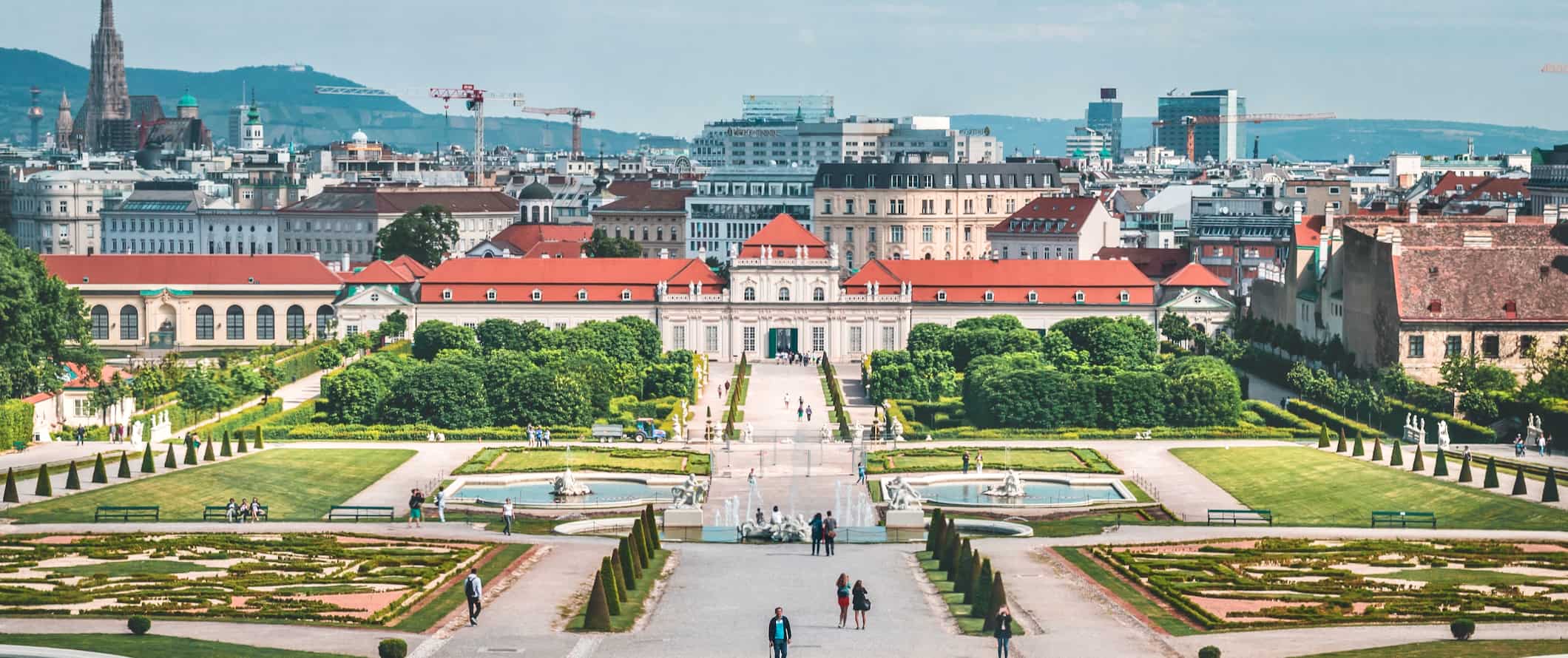
For anyone traveling with a tent, camping is available outside the city. Camping in Vienna starts around 8 EUR per night in the low season for a single tent site without electricity and around 22 EUR in the peak season (July-August).
Budget hotel prices – Two-star budget hotels start around 40 EUR per night for a double or twin but often cost closer to 60-80 EUR. This usually includes free Wi-Fi and basic amenities (TV, coffee maker) but rarely free breakfast.
Airbnb is another budget-friendly option here, with private rooms starting around 50 EUR per night. For an entire home or apartment, expect to pay at least 65 EUR per night (though prices average around 90 EUR).
Food – Austrian cuisine is a hearty, meat-oriented one, with a focus on meat, soups, stews, and pastries. The country’s food has been influenced by its neighbors in Central Europe, as well as from the expansion of the Austro-Hungarian Empire (1867–1918). Popular dishes include rindsuppe (beef soup), smoked meat with sauerkraut, wiener schnitzel (traditionally made from veal), strudel, and tafelspitz (beef boiled in broth). Breakfast usually involves bread or rolls with cold cuts, jam, or cheese.
A typical inexpensive restaurant meal costs around 15 EUR. Expect to pay at least 35 EUR for a three-course meal at a mid-range restaurant.
If you’re on a budget, stick to eating at the local markets where you can find a great selection of traditional Austrian food (like schnitzel, goulash, sausages, and potatoes) as well as Asian, Greek, and Middle Eastern dishes for around 8-16 EUR.
Fast food like McDonald’s or Burger King costs around 9 EUR for a combo meal. A large pizza should cost less than 20 EUR while Chinese food is 9-15 EUR for a main dish. Sandwiches and salads cost between 7-9 EUR.
A beer at the bar costs around 4.25 EUR while a latte/cappuccino costs 3.80 EUR. Bottled water is 2 EUR.
If you are planning to cook your own food, a week’s worth of groceries costs around 30-50 EUR for basic staples like rice, pasta, vegetables, and some meat. Hofer and Penny Markt are two of the cheaper supermarket options for groceries. For more organic options (or if you have dietary restrictions), shop at Spar.
For tasty open-faced sandwiches, check out Piotrowski. And if you’re vegan or vegetarian, head to The LaLa (healthy eats and tasty baked goods) or Swing Kitchen (fast food/burgers).
Backpacking Vienna Suggested Budgets
On a backpacker budget of 65 EUR per day, you can stay in a hostel dorm, cook all of your meals, visit a few museums, take a free walking tour, limit your drinking, and take local transportation to get around. If you plan on drinking, add 5-10 EUR to your budget per day.
On a mid-range budget of about 170 EUR, you can stay in an Airbnb or private hostel room, eat out for most meals, have a few drinks at the bar, see more museums and palaces, a day trip to Bratislava, and take the occasional taxi to get around.
On a “luxury” budget of 300 EUR per day, you can stay in a hotel, eat out for all your meals, drink out at the bar as much as you’d like, rent a car or take taxis to get around, and do private guided tours. This is just the ground floor for luxury though. The sky is the limit!
You can use the chart below to get some idea of how much you need to budget daily, depending on your travel style. Prices are in EUR.
Vienna Travel Guide: Money-Saving Tips
Vienna can be an expensive city if you don’t watch your budget. Accommodation, coffees, museums, and eating out can add up quickly. Here are some tips to help you save money when you visit Vienna:
- Take a free walking tour – Vienna offers a handful of free walking tours which are great ways to get familiar with the city and the culture. Good Tours , Anna Loves Vienna , Vienna Greeters , and The Original Free Vienna Walking Tour are all great options. Just be sure to tip your guide!
- Cook your own meals – If you want to save money on your food budget, stay in a hostel or Airbnb with a kitchen. Buying your own groceries may not be as glamorous as eating out, but it saves you money!
- Stay with a local – Staying with a local via Couchsurfing (or similar sharing economy sites) is a great way to save money. It’s also a great way to meet a knowledgeable local who can help you better understand the city and its people.
- Skip the fast train into Vienna – Unless you are in a rush to get downtown, skip the City Airport Train. It’s 11 EUR compared to the regular train (which is 4.30 EUR). The time difference is negligible, and that extra 6.70 EUR could be better spent on a cold beer!
- Get a Vienna PASS – With the Vienna PASS you get entry to over 60 attractions, museums, and monuments throughout the city. It costs 76 EUR for a one-day pass but if you’re planning to visit several of Vienna’s most popular museums/galleries then getting the pass could save you a fair amount of money especially as it has an option for public transportation too! If you’d rather not spend that much, some of the museums (that also belong to Vienna Pass) have also developed their own ticket packages.
Where to Stay in Vienna
Vienna has plenty of fun, social hostels. Here are my favorites ones to stay at:
- Wombats City Hostel
- The MEININGER Hotel
- JO&JOE
- Westend City Hostel
How to Get Around Vienna
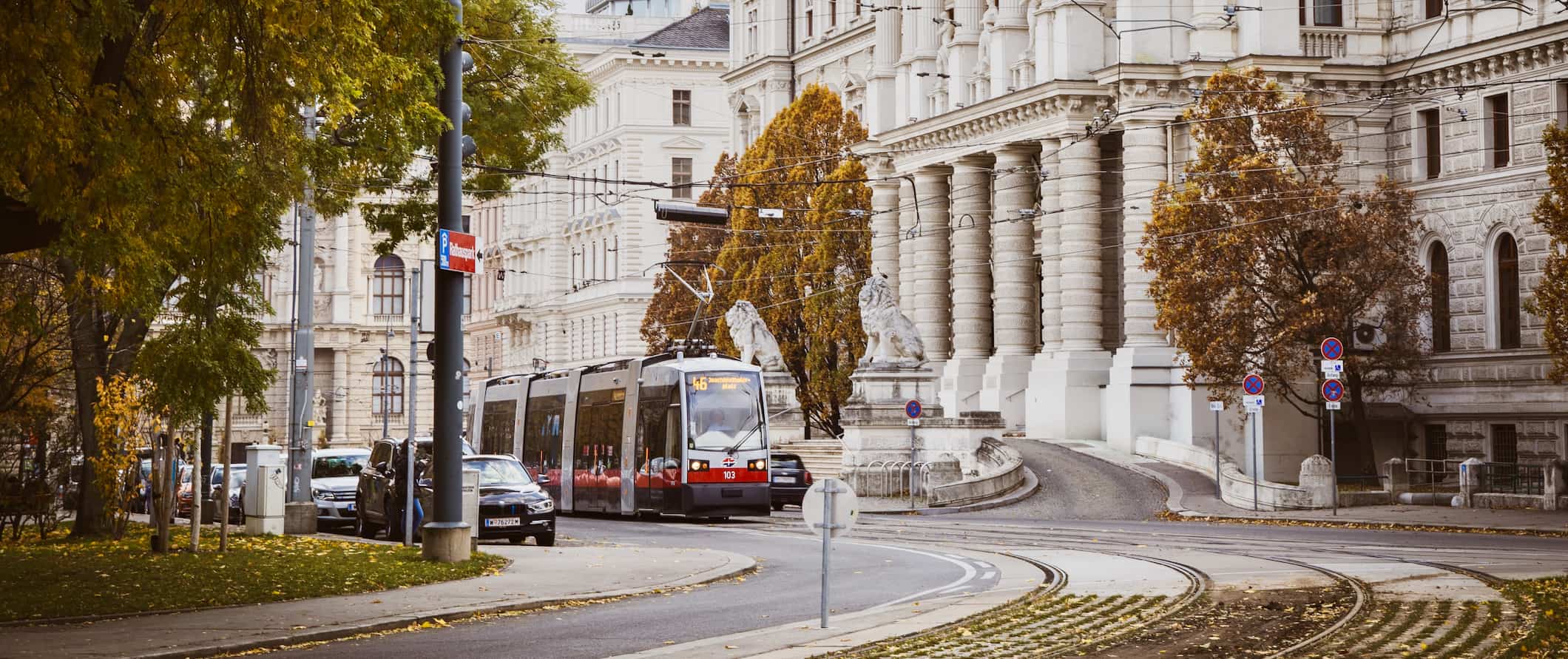
Public transport – Public transport in Vienna is safe, fast, and efficient. There are four main forms of public transport: bus (Autobus), local train (S-Bahn), tram (Straßenbahn), and subway (U-Bahn). Public transportation in Vienna works on an honor system. This can be confusing at first as there are no formal ticket checks or barriers at stations making it appear that public transport is free. Public transport is not free. You need to buy a ticket at the machines within the stations. If you get caught by one of the undercover ticket inspectors they charge you a hefty fine.
A single ticket is 2.40 EUR (zone 1 only), a 24-hour pass is 8 EUR, a 48-hour pass is 14.10 EUR, and a 72-hour pass is 17.10 EUR. The weekly pass (valid from Monday to Monday) is also 17.10 EUR.
If you’re flying into Vienna, the direct airport train is only 16 minutes to downtown and costs 11 EUR (19 EUR return). If you’re not in a hurry, however, take the regular train instead. It is only 4.30 EUR.
Taxis – Taxis should be avoided if you’re on a budget as they can add up fast. Fares start at 4 EUR and go up by 1.70 EUR per kilometer. Uber is also available here and is cheaper than a taxi so use it instead.
Bicycle – If you want to explore the city by bike you can find rentals for under 10 EUR per day via ListnRide . It matches you with a local renting their bike for cheap.
Car Rental – You don’t need to rent a car to get around Vienna. Most areas are walkable and public transportation is efficient. However, if you want to rent a car to get out of the city, expect to pay at least 35 EUR per day. Make sure to have an International Driving Permit (IDP) — you need one for any car rental.
When to Go to Vienna
There’s no wrong time to visit Vienna. The summer months (June-August) offer the best weather. However, this is the peak season for tourists so things are busier. During July and August, many local residents leave the city for what they call Sommerpause (Summer break) meaning many small local businesses close. Expect daily highs around 25°C (77°F)
Winter is from December to March. It gets cold, with temperatures dropping as low as -15°C (5°F). That said, November and December are considered to be the most magical months in the city because of the Christmas markets. The city looks gorgeous covered in snow!
Personally, I think the best time to visit Vienna is the shoulder season (April-June and September-October). It’s still warm during this time but there aren’t as many other tourists and prices aren’t as high as in the summer.
How to Stay Safe in Vienna
Vienna is a very safe city. That said, pick-pocketing can still occur in large crowds or on crowded public transportation. The 1st District (where you can find many of the city’s historic landmarks) and the 4th District (Karlsplatz/Karlskirche) are the main areas to be vigilant.
Be on the lookout for fake event tickets being sold on the street. This can be easily avoided by only booking tickets directly from the venue.
Also be cautious of people posing as plain-clothes police officers asking to see your passport. This has become common in the main tourist areas and in public transport stations. When you produce your passport, they take it and accuse you of a minor crime and demand you pay a fine. If you refuse, they can get aggressive and while you are distracted an accomplice picks your pockets.
While these scams are rare, it’s better to be safe than sorry. You can read about more common travel scams here so you know what to look out for.
Solo female travelers should generally feel safe here. However, the standard precautions apply (never leave your drink unattended at the bar, never walk home alone intoxicated, etc.). Look for specific tips on solo female blogs as they’ll have more tips from experience than I can provide.
If you experience an emergency, dial 112 for assistance.
When in doubt, always trust your instincts. If a taxi driver seems shady, get out. If your hotel or accommodation is seedier than you thought, go somewhere else. Make copies of your personal documents, including your passport and ID, in case of an emergency.
The most important piece of advice I can offer is to purchase good travel insurance. Travel insurance protects you against illness, injury, theft, and cancellations. It’s comprehensive protection in case anything goes wrong. I never go on a trip without it as I’ve had to use it many times in the past. You can use the widget below to find the policy right for you:
Vienna Travel Guide: The Best Booking Resources
These are my favorite companies to use when I travel. They consistently have the best deals, offer world-class customer service and great value, and overall, are better than their competitors. They are the companies I use the most and are always the starting point in my search for travel deals.
- Skyscanner – Skyscanner is my favorite flight search engine. They search small websites and budget airlines that larger search sites tend to miss. They are hands down the number one place to start.
- Hostelworld – This is the best hostel accommodation site out there with the largest inventory, best search interface, and widest availability.
- Booking.com – The best all around booking site that constantly provides the cheapest and lowest rates. They have the widest selection of budget accommodation. In all my tests, they’ve always had the cheapest rates out of all the booking websites.
- HostelPass – This new card gives you up to 20% off hostels throughout Europe. It’s a great way to save money. They’re constantly adding new hostels too. I’ve always wanted something like this and glad it finallt exists.
- Get Your Guide – Get Your Guide is a huge online marketplace for tours and excursions. They have tons of tour options available in cities all around the world, including everything from cooking classes, walking tours, street art lessons, and more!
- The Man in Seat 61 – This website is the ultimate guide to train travel anywhere in the world. They have the most comprehensive information on routes, times, prices, and train conditions. If you are planning a long train journey or some epic train trip, consult this site.
- Rome2Rio – This website allows you to see how to get from point A to point B the best and cheapest way possible. It will give you all the bus, train, plane, or boat routes that can get you there as well as how much they cost.
- FlixBus – Flixbus has routes between 20 European countries with prices starting as low 5 EUR! Their buses include WiFi, electrical outlets, a free checked bag.
- SafetyWing – Safety Wing offers convenient and affordable plans tailored to digital nomads and long-term travelers. They have cheap monthly plans, great customer service, and an easy-to-use claims process that makes it perfect for those on the road.
- LifeStraw – My go-to company for reusable water bottles with built-in filters so you can ensure your drinking water is always clean and safe.
- Unbound Merino – They make lightweight, durable, easy-to-clean travel clothing.
- Top Travel Credit Cards – Points are the best way to cut down travel expenses. Here’s my favorite point earning credit cards so you can get free travel!
Vienna Travel Guide: Related Articles
Want more info? Check out all the articles I’ve written on backpacking/traveling Europe and continue planning your trip:

The 6 Best Hotels in Copenhagen

The 6 Best Hotels in Florence

The 7 Best Hotels in Madrid

The 6 Best Hotels in Vienna

The Best Walking Tours in Barcelona

How to Be a Digital Nomad in Europe
Get my best stuff sent straight to you, pin it on pinterest.
- Where To Stay
- Transportation
- Booking Resources
- Related Blogs

Planning a Trip to Vienna! Best Vienna Holiday Itinerary
Last Updated on March 30, 2024 by gregor
This guide streamlines your Vienna trip, featuring top attractions, unique activities and much-loved eateries. Intended for first-time visitors, we provide practical tips and suggested itineraries for 1-4 day stays in Vienna. Get ready to discover and savour the historic and vibrant city of Vienna!
If you are looking for a great holiday destination, Vienna (Austria) is the perfect destination for your next vacation. Enjoy iconic attractions like the Hofburg Palace , Empress Sisi Museum , and Schönbrunn Palace as you explore Vienna’s rich history and culture. Indulge in local delicacies while taking in the breathtaking views of Vienna’s historic cityscape. Whether you’re a first-time visitor or a returning traveler, this guide will help you plan an unforgettable trip to Vienna!
Here are the TOP 10 Reasons why you must visit Vienna.
Planning your First Trip to Vienna – What to do in Vienna – Best Vienna Itinerary
When is the best time to visit vienna.
If you're keen on delving into Vienna's cultural wealth, consider visiting during the spring months of March to June, or autumn, September and October. It's a great time to explore the city’s historical sites and museums. For those who prefer the lively city attractions or relishing in Vienna's dynamic nightlife, summer is the ideal season. For instance, picnic in Prater Park or enjoy open-air concerts during warm June to August days. But remember, the best time to visit really depends on the experiences you crave most in Vienna. So, plan your trip accordingly and you're bound to have an unforgettable time!
See also the detailed review: WHEN IS THE BEST TIME TO VISIT VIENNA, AUSTRIA
How Long Should You Stay In Vienna?
Visiting Vienna can be a great experience, and it can take you anywhere from three to five days to get the most out of your trip.
When someone tells me that they’re going to spend just 1-2 days in Vienna I feel like they’re most likely not going to love it. I mean, it’s possible to have a great time but if you do it right and prioritize what you want to see. During such a short visit most tourists head to see St. Stephen’s Cathedral, Hofburg Palace, Schönbrunn, and some other tourist attractions, and therefore experience crowds, long lines, and not the real local Vienna.
Take your pick and spend some time actually enjoying these things instead of rushing through everything.
Here are some valuable Vienna Itineraries for visiting Vienna
HOW MANY DAYS DO YOU NEED TO VISIT VIENNA?
- Best of Vienna in 4 hours – Layover in Vienna
- The Perfect 1-Day Vienna Itinerary
- The Perfect 2-Days Vienna Itinerary
- The Perfect 3-Days Vienna Itinerary
- 4 DAYS IN VIENNA – BEST VIENNA TRAVEL ITINERARY
What you need to know before traveling to Vienna Austria
Before any trip, it is always good to have some essential information. Check out these tips to be prepared for your trip to Vienna:
- Currency: Euro(€)
- Language: German
- Voltage: 230V
- Power sockets: Type F
As seen above, Austria uses the Euro therefore, if you need to change currency, be aware of the exchange rates.
The official language in Austria is German , and even though most people can communicate in English, it is always useful to learn a few words or phrases. Some of them are danke, meaning thank you, and bitte, meaning you’re welcome or please.
- Another useful tip is that in Austria, the standard voltage is 230V while the power sockets are Type F, so be sure to have the right travel adaptor.
Austria’s entry requirements
Austria is part of the European Union (EU) and the Schengen area .
Non-EU travelers can only stay in the Schengen region for up to 90 days within 180 days. You will need a valid passport for at least 3 months after the date you intend to leave the EU country and it must be issued within the last 10 years .
Check if you need to apply for a Schengen visa from an Austrian consulate or embassy and apply for a visa before you leave your home country.
How To Travel To Vienna: Arriving By Plane
Vienna International Airport, the city's primary terminal, regularly welcomes flights from major airports worldwide. Depending on your point of departure and travel time, fares are typically reasonable. Upon touchdown, you'll find numerous public transport services at your disposal. Most international flights land at Vienna International Airport, which is mere minutes from the city centre. Buses, trains, and taxis are readily available, offering fast, cost-friendly routes and frequent services. Your exciting Viennese adventure commences immediately upon arrival, thanks to the airport's seamlessly integrated transportation network!
Just touched down at Vienna Airport and pondering the best way to reach the city centre? In our section "How to Travel to Vienna by Plane", or the new subsection "Transfers from Vienna Airport to City Center", we highlight various modes of transportation at your disposal. Here, you will find the most reasonable options, including taxis, buses, trains to shuttles, which offer a means of transport from the airport to the city centre. We have collected all viable choices for you. Additionally, for those interested in the most common, fastest, or cheapest medium, we've included a brief overview. You can find more details, such as fares and schedules, by following the related links. Stay tuned for a smooth transition to the next tier of information.
BEST WAYS TO GET FROM VIENNA AIRPORT TO THE CITY CENTER
How to get around Vienna
Metro in Vienna (U-Bahn) is very easy and safe to use. It might be slightly intimidating at first due to the huge amount of different lines, but once you figure it out you’ll use it all the time.
Keep your Vienna metro ticket until you’ve exited the metro system at your final destination because the police might be checking your tickets inside the station.
VIENNA’S PUBLIC TRANSPORTATION SYSTEM – GETTING AROUND IN VIENNA
Where to buy a Public Transportation ticket in Vienna
- there are ticket machines at most underground stations
- points of advance sale
- Tobacconists also sell tickets
- Onboard the tram at an increased rate of EUR 2.60 per ticket
- Buy tickets online: Wiener Linien Online Shop
On many Metro lines, the doors to the train do not open unless you press a button or lift a handle. Remember it if you don’t want to miss your station or look funny.
Where to Stay in Vienna
Options for accommodations in vienna.
Vienna is a beautiful city, and there are many options for accommodations. Visitors can choose from a variety of hotels, hostels, and apartments. Hotels range from budget-friendly to luxury, with a wide selection of amenities such as swimming pools and spas. Hostels provide an affordable option for travelers on a budget and often have shared rooms and communal areas.
For longer stays, apartments offer more space and privacy than hotel rooms at comparable prices.
Additionally, Airbnb provides unique listings in Vienna that allow visitors to experience the city like a local. No matter what kind of accommodation you’re looking for, Vienna has something that will suit your needs.
BEST LUXURY BOUTIQUE HOTELS IN VIENNA
Tips for finding the best deals on hotels/hostels/Airbnb’s in Vienna
Finding the best accommodation deals in Vienna can be easier with the right strategies:
- Compare Prices : Always check different websites for the same accommodation to ensure you’re getting the best deal.
- Look for Discounts : Keep an eye out for special offers or discounts, which can sometimes be found on booking sites or directly from the accommodation provider.
- Consider Longer Stays : For extended visits, renting an entire apartment could be more economical and offer added space and privacy compared to a hotel room.
- Travel in Low Season : Booking during off-peak times can lead to significant savings, as many places lower their prices.
- Research Thoroughly : Read reviews from past guests and use comparison websites to scope out the best deals available.
By following these tips, securing a great deal on your stay in Vienna can be straightforward and rewarding!
What areas of Vienna are best for tourists to stay in
- City Center (Innenstadt, 1st District) : Heart of Vienna’s attractions, including Stephansdom Cathedral and Hofburg Palace. This area boasts easy access to public transport, dining, and shopping, making it a top pick for first-time visitors.
- Mariahilf (6th District) : Celebrated for its lively nightlife, Mariahilf is a haven for those who enjoy evenings out, with an abundance of bars, clubs, pubs, and cafés.
- Landstrasse (3rd District) and Wieden (4th District) : These districts offer cultural attractions such as Karlskirche (St. Charles Cathedral), appealing to those interested in Vienna’s rich cultural tapestry.
- Neubau (7th District) : A shopper’s paradise, Neubau is known for its bustling shopping streets, perfect for those looking to indulge in retail therapy.
No matter where you choose to stay in Vienna, each district offers a unique experience that contributes to a memorable visit.
Best Things to Do and See in Vienna
Must-see tourist attractions and must-do activities in vienna.
Vienna is a beautiful city full of must-see attractions and exciting activities. Take a stroll through the city center’s romantic cobblestone streets to take in the stunning Baroque architecture, such as the centuries-old Schönbrunn Palace.
Enjoy Vienna’s unique old-world charm by taking a ride on one of its iconic horse-drawn carriages , or explore the modern art galleries and boutiques housed inside the historic Ringstrasse.
For a more cultural experience , you can visit Vienna’s famous museums or spend an afternoon at one of its beautiful parks and gardens.
THE BEST 12 MUSEUMS YOU NEED TO VISIT IN VIENNA, AUSTRIA TRAVEL GUIDE (UPDATE 2023)
Famous Viennese Coffee Houses and Viennese Food
Of course, no trip to Vienna would be complete without sampling some of its famous Viennese cafés and restaurants – you’ll find plenty of delicious local dishes to try.
VIENNA FOOD GUIDE – TRADITIONAL VIENNESE FOOD YOU MUST EAT IN VIENNA, AUSTRIA
BEST COFFEEHOUSES IN THE CITY CENTER OF VIENNA, AUSTRIA
Outdoor activities in Vienna
Additionally, there are plenty of outdoor activities to enjoy in Vienna, from cycling along its riverside paths to sailing on the Danube Canal. With so much to see and do, Vienna is sure to provide an unforgettable holiday experience for all visitors!
Local favorites that should not be missed while visiting Vienna
Visiting Vienna can be an unforgettable experience, and there are plenty of local favorites that you should not miss. Be sure to enjoy a cup of Viennese coffee at one of the traditional Viennese cafés for a truly authentic experience.
If you’re in the mood for something sweet, try some Sachertorte – a rich chocolate cake with apricot jam and topped with creamy chocolate icing.
17 BEST DESSERTS IN VIENNA YOU MUST KNOW
The famous Wiener Schnitzel is also a must-try. This breaded veal cutlet is served with potatoes and lemon wedges, and it is the perfect comfort food.
WHERE TO EAT THE BEST WIENER SCHNITZEL IN VIENNA (RESTAURANT TIPS + PRICES!)
Be sure to spend some time strolling along the cobblestone streets of Vienna, exploring its many museums, galleries, and historical sites. Finally, end your visit with a night out at one of Vienna’s renowned classical music concerts or Opera performances – you won’t regret it!
ULTIMATE GUIDE VISITING THE VIENNA OPERA HOUSE, AUSTRIA
Day trips and excursions from Vienna that make great additions to your itinerary
Vienna is a great destination for a city break, but there are plenty of interesting day trips and excursions available to make your visit even more special. From exploring the romantic Wachau Valley , visiting Salzburg with its cobbled streets and Baroque architecture, or heading to Hinterbrühl Caves (Seegrotte) , there are lots of places to explore within a few hours of Vienna. For something more active, try cycling along the Danube path or take a cruise along the river itself. There are also plenty of outdoor activities such as hiking and mountain biking in the surrounding hills.
Whatever you decide to do, Vienna is surrounded by some amazing attractions that make great additions to any itinerary!
TOP 10 – DAY TRIPS FROM VIENNA, AUSTRIA
Best 6 City Day Trips Hallstatt, Salzburg, Prague, Budapest Bratislava, and Ljubljana
Vienna is an optimal starting point for day trips to some of the most noteworthy capitals in Europe such as Bratislava, Budapest, Prague , and Ljubljana . Additionally, it serves as an incredible base to discover more of Austria. Some of the greatest day trips from Vienna include Salzburg and Hallstatt .
BEST CITY DAY TRIPS FROM VIENNA, AUSTRIA
Where to Eat & Drink in Vienna
Traditional viennese dishes and drinks you must try while there.
When visiting Vienna, Austria, it is essential to try some of the traditional dishes and drinks that the city has to offer. A must-try dish is Wiener Schnitzel, a fried cutlet of veal served with a side of potatoes or salad. Other traditional dishes include Tafelspitz, boiled beef served with applesauce, horseradish, and root vegetables; Gulaschsuppe, a hearty beef-based soup; and Kaiserschmarrn, shredded pancakes with raisins and powdered sugar. For drinks, be sure to sample Austrian wines such as Grüner Veltliner or Blaufränkisch. If beer is more your style, you should try one of the local craft beers like Ottakringer or Ottakringer Radler. With so many delicious traditional Viennese dishes and drinks to choose from your trip will be unforgettable!
The best restaurants and bars in Vienna
Vienna is a city that offers an abundance of fantastic restaurants and bars. Whether you’re looking for traditional Austrian cuisine, world-famous Viennese coffeehouse culture, or trendy and modern bistros, Vienna has it all. For an upscale dining experience, be sure to visit Steiereck, considered one of the best restaurants in Austria. Other top picks include Plachutta Wollzeile, offering delicious Wiener Schnitzel and Tafelspitz; Figlmüller with its famous schnitzel; and Café Diglas for a delightful Kaffee und Kuchen. When it comes to bars and pubs, Zum Schwarzen Kameel stands out as one of the city’s most popular spots. With its traditional food menu, an impressive selection of beers from around the world, and lively atmosphere, it’s sure to please even the pickiest traveler.
Shopping & Other Activities in Vienna
Popular markets and shopping districts in vienna.
Vienna is an incredible city full of interesting places to shop. From the iconic Naschmarkt to the bustling Flea Market, there are plenty of spots to find unique items and explore the city’s culture.
Naschmarkt has been around since the 16th century and is a great place to find traditional Viennese food, souvenirs, and antiques. The Flea Market is held every Saturday morning in what was once Vienna’s Roman city center. Here you can find a variety of handmade jewelry and vintage clothing.
NASCHMARKT VIENNA GUIDE – MOST POPULAR VIENNESE FOOD MARKET
There are also many shopping districts located throughout Vienna where you can find designer boutiques, modern department stores, and international chains. Mariahilfer Strasse is one of the most popular, with over 600 stores ranging from high-end fashion houses to budget-friendly options. There is something for everyone in Vienna’s markets and shopping districts!
Luxury Shopping in Vienna
Vienna is an excellent destination for luxury shopping. There are numerous designer boutiques, shopping galleries and high-end department stores to explore. One of the most famous shopping areas in Vienna is the Kärntnerstrasse, which boasts a wide range of luxury brands such as Prada, Gucci, Louis Vuitton and more. The Golden Quarter is another popular area with many exclusive boutiques, art galleries and jewelry stores. You can also find a variety of international luxury brands at the Vienna International Airport Shopping Center or at one of the city’s many malls. Whether you’re looking for designer apparel, luxury accessories, or exquisite jewelry, Vienna has plenty of options to choose from when it comes to luxury shopping.
LUXURY SHOPPING IN VIENNA GUIDE (STORES, MAP AND VIDEO GUIDE)
Outdoor activities like biking, hiking, etc near Vienna
Vienna is an outdoor enthusiast’s dream, boasting a vast array of parks and natural spaces perfect for a wide range of activities. Here’s what you can look forward to:
- Vienna Woods : Just a stone’s throw from the city center, the Vienna Woods offers serene paths for biking and hiking, ideal for those looking for a peaceful escape into nature.
- Mountain Biking : For the more adventurous, the Semmering region nearby presents an extensive network of mountain biking trails, catering to various skill levels.
- Water Activities : The city’s proximity to numerous lakes and rivers means swimming, fishing, and boating are readily available for water sports lovers.
Vienna caters to all types of outdoor enthusiasts, ensuring that everyone can find the perfect activity to enjoy in the great outdoors.
TOP 5 VIENNA PICNIC SPOTS WITH A WONDERFUL VIEW
Conclusion for planning a Trip to Vienna!
Planning a trip to Vienna is an exciting process. From researching the best places to stay, the top attractions and activities, and the most delicious food and drinks, there’s something for everyone in this beautiful city. With its rich culture, history, and art, it’s no wonder why Vienna is one of Europe’s most popular tourist destinations. Whether you’re looking for a weekend getaway or have planned a longer stay, Vienna has something to offer every traveler. The key to having a successful trip is planning ahead and organizing your itinerary so that you can make the most of your visit. Make sure to research what you would like to do before arriving in Vienna to maximize your sightseeing time and experiences. With adequate planning and preparation, you are sure to enjoy all that Vienna has to offer!
Frequently Asked Questions about Planning Your Holidays in Vienna
How many days do you need for vienna.
Depending on what kind of experience you’re looking for, there are a variety of things to do in Vienna. If you’re looking for culture and history, then exploring the city’s historic landmarks is essential. Viennese architecture is renowned worldwide and many buildings will take your breath away . There are also several museums and art galleries that could keep you occupied for hours . For those who enjoy the outdoors, Vienna has some beautiful parks and gardens that make for pleasant strolls throughout the day. Shopping lovers will have plenty of options in the city center with its many shopping streets and designer stores. Finally, don’t forget about food – Vienna has some fantastic restaurants and cafés offering both traditional Viennese dishes and international cuisine. So no matter what kind of traveler you are, Vienna has something for everyone – just make sure to plan ahead so that you can fit everything into your stay.
How much does a vacation in Vienna cost?
A vacation in Vienna can be just as expensive as in any other big city, but with a little bit of planning you can make it quite affordable.
Accommodation costs vary depending on the type of hotel or apartment you choose, but you can find budget options starting around €60 per night.
Food and drink costs will depend largely on your own preferences, but there are plenty of affordable restaurants and cafés throughout the city.
Sightseeing is also relatively inexpensive compared to other European capitals, with most attractions costing less than €20 for admission.
Depending on your budget and what activities you plan to do, a vacation in Vienna could cost anywhere from €300-€1000 per person for a few days. However, with careful planning, it’s possible to enjoy Vienna without breaking the bank.
What is the best month to go to Vienna?
The best time to visit Vienna is during April, May and September.
During these months, the city is generally at its most pleasant, with temperatures comfortable enough to be able to walk around and explore all that Vienna has to offer. The days are long and sunny, and you can expect plenty of outdoor activities such as walking tours, boat trips on the Danube River or exploring the many parks in Vienna. You’ll also be able to enjoy some of the cultural events like the opera, a concert in one of Vienna’s famous music halls, or take part in one of the festivals that take place throughout the year such as Wiener Festwochen. In short, there’s something for everyone during these months.
More related Vienna Travel Blog Posts
WHAT TO BUY IN VIENNA: BEST 15 SOUVENIRS FROM VIENNA
WHEN IS THE BEST TIME TO VISIT VIENNA, AUSTRIA
THE BEST THINGS TO DO IN VIENNA WITH KIDS – FAMILY HOLIDAYS IN AUSTRIA
VIENNA SOLO TRAVELER TIPS – SOLO TRAVEL GUIDE VIENNA, AUSTRIA
THE TOP AUTHENTIC VIENNESE EXPERIENCES YOU MUST ENJOY WHEN IN VIENNA, AUSTRIA
VIENNA BUDGET TRAVEL GUIDE, FREE THINGS TO DO IN VIENNA, AUSTRIA IN 2022
15 BEST FOOD TOURS IN VIENNA, AUSTRIA – UPDATED 2022/23
Visiting Vienna, Practical Tips & Things to Do (Local Expert Advice)
Why You Should Listen to Me?
I was born and have lived in Vienna my whole life. (Not like other “Travel Bloggers & “Travel Websites” who pretend to know Vienna just for visiting 1 or 2 times). I live and work in the City Center of Vienna and have seen and tried most of the things to do in Vienna I recommend, but I have also seen several things you should definitely avoid (making a few mistakes on my way too).
I am very confident in giving you the best Vienna travel tips
17 Best Desserts in Vienna You Must Know
13 best classical concerts in vienna 2024.
Vienna Travel Guide

Courtesy of Christoph Hetzmannseder | Getty Images

Why Go To Vienna
History is at the heart of Vienna both literally and figuratively. The narrow streets of the Innere Stadt (Inner City) snake through antiquated buildings, providing an atmosphere so authentic that you almost expect a Vienna native like composer Wolfgang Amadeus Mozart or psychologist Sigmund Freud to round a cobblestone corner and greet you with " g uten tag ." Extravagant baroque palaces from the Habsburg Monarchy loom over the city, just as Mozart's classical arias pour from contemporary cafes. If it's culture you seek, you'll find it here.
But there's more to this city than just music and monarchs. Vienna is also a great place to spend some cash, with independent bookstores competing for business alongside haute couture. There are also a surprising number of attractions for young ones, including an amusement park and a top-notch zoo . And although many Viennese retire early in the night, that doesn't mean you have to; sneak out to one of the bars in the city's Bermuda Triangle neighborhood, or drop by one of the wine taverns skirting the Vienna Woods.
Find Flight and Hotel Deals
Navigate forward to interact with the calendar and select a date. Press the question mark key to get the keyboard shortcuts for changing dates.
Navigate backward to interact with the calendar and select a date. Press the question mark key to get the keyboard shortcuts for changing dates.
- # 8 in Best Winter Vacations in Europe
- # 8 in Best Cheap European Honeymoon Destinations
- # 10 in Best Christmas Vacations
See All 7 Rankings
Best of Vienna
Best hotels in vienna.
- # 1 in Hotel Sacher Wien
- # 2 in Park Hyatt Vienna
- # 3 in The Ritz-Carlton, Vienna

Best Things to Do in Vienna
- # 1 in Hofburg Palace
- # 2 in Schönbrunn Palace
- # 3 in MuseumsQuartier Wien

Popular Tours

Full Day Tour from Vienna: Wachau, Melk, Hallstatt & Salzburg
(13 reviews)
from $ 207.08

Highlights of Vienna City Center Walking Tour
(881 reviews)
from $ 79.56

Vienna Classical Concert at St. Peter’s Church
(1067 reviews)
from $ 40.33

Vienna Travel Tips
Best months to visit.
The best time to visit Vienna is from April to May or September to October. The mild weather in spring and fall brings mild crowds. Most visitors aim to enjoy the warm, sunny weather that Vienna experiences in the summer months. Between June and August, you can expect the city to fill up and room rates to skyrocket. December also sees a spike in tourism since many Europeans flock to the city for a taste of Christmas spirit served Viennese-style, but chilly temperatures can be a deterrent.
Weather in Vienna
Data sourced from the National Climatic Data Center
What You Need to Know
Don't forget your dictionary German is the official language of Austria, and while it is possible to find English speakers in touristy areas, a dictionary or phrasebook will help lower the language barrier.
Forget the car Driving in Vienna can be a nightmare thanks to narrow streets, heavy traffic and limited parking. Unless you are planning to explore the Austrian countryside, you're better off forgoing the car in favor of public transit.
Sample the street food Street vendors in Vienna are known to offer exceptional quality food. Try a Viennese sausage – you won't regret it.
How to Save Money in Vienna
Widen your hotel search Avoid properties within the Ringstrasse since they are the priciest. You'll find plenty of affordable digs scattered throughout the inner and outer suburbs.
Spring for the Vienna City Card The Vienna City Card gets you discounted entry at more than 100 sites in Vienna, plus discounts at theaters, restaurants and accommodation. Discounts are available for seven days, and cards will get you free public transport for 24, 48 or 72 hours. The Vienna City Card costs 17 to 29 euros (about $18 to $31), depending on how long you want access to public transit. For an additional amount you can add on airport transfers and/or a hop-on hop-off sightseeing tour.
Night of the Museums On the first Saturday in October, many of the city's museums open late into the night (until 1 a.m.), and one ticket (usually around 15 euros, or $16) gets you into as many of them as you can cram into your evening. Museums often put on one-off events and tours.
Culture & Customs
You will find that most Viennese tend to dress conservatively. If you are traveling on business, make sure to wear proper business attire, such as a dark-colored suit or dress. If you are dining alongside Austrians, do not begin eating until the host says " Gesegnete Mahlzeit " (bless this meal, generally abbreviated to simply " Mahlzeit ") or " Guten Appetit " (enjoy your meal). It's not polite to leave food on your plate; however, if you're full, make sure to leave your knife and fork side by side on your plate. If you are invited to dinner, don't fight for the bill. Your host expects to pay. If you are paying the bill, gratuity – normally 10% – is usually already included. However, it is polite to round the bill up or leave an extra 5% for good service.
What to Eat
Dining on delectable Viennese cuisine is one of the city's major must-dos. But vegetarians beware: Much traditional Austrian cuisine centers on meat. However you can increasingly find plenty of vegetarian dishes, and there's a vegan food festival in August. Traditional Austrian taverns (known as beisls) serve up hearty portions of Tafelspitz (boiled beef), g o ulash (a rich stew made primarily from beef and potatoes) and W iener schnitzel (deep-fried, breaded veal). If you're looking to save some coin, though, you may want to avoid the Innere Stadt neighborhood. Instead, check out the streets just beyond the city center. Over the past few years, Vienna has seen the rise of international cuisines, ranging from Asian to Italian fare. No matter where you decided to dine, carry cash: some restaurants do not accept credit cards.
When it's time for dessert, cafes cater to customers with a sweet tooth, serving wide assortments of delicious cakes and pastries like Sachertorte (Austria's most celebrated variety of chocolate cake), gugelhupf (marbled bundt cake) , Kaiserschwarrn (chunks of fluffy pancake, caramelized and served with fruit compote) and apple strudel. The Viennese are also big fans of wine – around 1,700 acres of vineyards exist within the city limits and the wine can be enjoyed in over 180 taverns as well as tasting rooms, bars and eateries – and strong beer.
Vienna is considered one of the safest capitals in Europe and it often appears highly on many best quality of life rankings. Still, travelers should use common sense and keep an eye out for petty theft. The Prater amusement park and mass transit are popular hunting grounds for pickpockets.
Getting Around Vienna
The best ways to get around Vienna are on foot and by public transportation. Many historic attractions can be found within the compact Innere Stadt and are easy to reach with just a sturdy pair of walking shoes. But if you are interested in exploring some of the more remote districts, the city's subway, bus and streetcar routes will get you where you need to go. Taxis are abundant as well. There are also several methods of public transportation connecting Vienna to the Vienna International Airport (VIE) – about 12 miles southeast of the city center – including the City Airport Train to Wien Mitte station (which takes 16 minutes and costs about 15 euros for a one-way ride) and the Railjet to Wien Hauptbahnhof (which takes just 15 minutes and costs less than 5 euros one-way). Both stations are central, though Wien Mitte is closer to the Innere Stadt .
Entry & Exit Requirements
U.S. citizens can enter the country for up to 90 days without a visa. If you plan to stay longer, you must obtain the proper visa from the Austrian Embassy prior to departure. You will need a passport that is valid for at least three months after your return, though six months is recommended. For more information concerning entry and exit requirements for Austria, visit the U.S. State Department's website .
Beautiful Vienna is full of historic churches, insightful museums and colorful markets.
Explore More of Vienna

Things To Do
Best hotels.

You might also like

# 2 in Best Eastern Europe Travel Spots

# 6 in Best Christmas Vacations

# 9 in Best Winter Vacations in Europe
If you make a purchase from our site, we may earn a commission. This does not affect the quality or independence of our editorial content.
Recommended
The 18 Best Napa Valley Wineries to Visit in 2024
Lyn Mettler|Sharael Kolberg April 23, 2024

The 25 Best Beaches on the East Coast for 2024
Timothy J. Forster|Sharael Kolberg April 19, 2024

The 50 Best Hotels in the USA 2024
Christina Maggitas February 6, 2024

The 32 Most Famous Landmarks in the World
Gwen Pratesi|Timothy J. Forster February 1, 2024

9 Top All-Inclusive Resorts in Florida for 2024
Gwen Pratesi|Amanda Norcross January 5, 2024

24 Top All-Inclusive Resorts in the U.S. for 2024
Erin Evans January 4, 2024

26 Top Adults-Only All-Inclusive Resorts for 2024
Zach Watson December 28, 2023

Solo Vacations: The 36 Best Places to Travel Alone in 2024
Lyn Mettler|Erin Vasta December 22, 2023

26 Cheap Beach Vacations for Travelers on a Budget
Kyle McCarthy|Sharael Kolberg December 4, 2023

The 50 Most Beautiful White Sand Beaches in the World
Holly Johnson December 1, 2023

- Search Please fill out this field.
- Manage Your Subscription
- Give a Gift Subscription
- Sweepstakes
- Travel Destinations A-Z
This Gorgeous European City Is Known for Its Fairy-tale Palace, Wiener Schnitzel, and Christmas Markets
:max_bytes(150000):strip_icc():format(webp)/patricia-doherty-2dd85666682c4f4fa708d02b4e4ac40e.jpg)
Best Time to Go
Things to know, how to get around, best hotels, best restaurants, things to do, best shopping, neighborhoods to know, apps to download.
Vienna (Wien in German), Austria's capital city, is rich in history, architecture, art, music, food, and wine. Located on the River Danube, Vienna dates back to a Roman era settlement. Most of the city's many Baroque buildings were created under Empress Maria Theresa (18th century) and Emperor Franz Joseph (19th century), and today they stand in contrast to modern glass and steel structures.
Beautiful buildings, walkable streets, delicious food, and lots to do both indoors and outdoors make Vienna a wonderful vacation destination. Voted one of the most livable cities in the world, Vienna's city limits include vineyards, parks, and the forested Vienna Woods (Wienerwald in German), a protected natural landscape. A dog-friendly city, Vienna permits dogs on public transportation as well as in restaurants and shops. The "coffee culture" features prominently in Viennese life, and coffee houses are places to relax, socialize, and enjoy the city's famous desserts.
Called the "City of Music," Vienna was home to classical composers Schubert, Mozart, Haydn, Strauss, Brahms, and Beethoven. Vienna is known for its Ball Season when, from November until the Tuesday before Ash Wednesday, nearly 500 balls take place—with the Viennese Waltz and elegant formal attire in full display.
Central European Time Zone (CET) UTC +1
Seasonally: Central European Summer Time (CEST) UTC +2
For mild, although sometimes chilly weather, spring and fall are pleasant times to be in Vienna. Fewer tourists make it easier to see the city's attractions, and hotel rates are lower. Summer is warm and sunny with temperatures in the high 70s and perhaps a bit more rain. It's also a lovely time there, but the city sees more visitors during the high season, reflected in hotel prices.
Christmas markets and magical decorations attract tourists in winter, despite colder temperatures. The ball season from November until February can be fun even if you're not ready to waltz onto the dance floor. Ball gowns, traditional Austrian dirndls, live music, and the festive atmosphere create memorable experiences.
So it seems that there's no wrong time to visit Vienna. Take a travel umbrella, warm clothing, and remember the well-worn adage, "There's no such thing as bad weather, only the wrong clothes."
Find flights
Currency: Euro
(Check the current exchange rate )
Language: German
Hello - Hallo Good Morning - Guten Morgen Good day - Guten Tag Good Evening - Guten Abend My name is… Ich heiße… What is your name? - Wie heißen Sie? How are you? - Wie geht's? I'm well - Mir geht's gut. How much is that? - Wie viel kostet das? Where is the bathroom? - Wo ist die Toilette? Men - Herren/Männer Women - Damen/Frauen Please - bitte Thank you - Danke
Calling Code: +43
The letter ß, unique to the German alphabet, is used in many words to replace "ss."
Snow globes, a favorite souvenir of Vienna, have been produced there for more than a hundred years by the Perzy family in their 17th district factory. They depict St. Stephen's Cathedral, landmarks, animals, cakes, and more. The snow globes, made in a variety of sizes, are favorites at Vienna's Christmas markets.
Vienna is the only world capital with wineries within its city limits. In the city's outskirts of Grinzing, visitors can hike, bike, or visit a Heuriger, a seasonal wine tavern. Most of the wineries produce white wines, mainly Grüner Veltliner, Weissburgunder, Rheinriesling , and Gemischter Satz .
Danube Island, built as part of a flood protection system, has become a major recreation center with a beach, waterpark, restaurants, and nightclubs. An annual open-air music event, Danube Island Festival ( Donauinselfest ) is held there.
Austria's national dish is Wiener Schnitzel , thin cutlets of veal, breaded and fried. It's usually served with parsley potatoes or potato salad. Veal is most commonly used, but chicken may also be prepared as schnitzel.
Sacher Torte , one of Vienna's most famous desserts, is a rich chocolate cake with a thin layer of apricot jam, covered with chocolate. It's said to have first been prepared by Franz Sacher, a 16-year old apprentice, for Prince Metternich in 1832 when the head chef was ill. National Sachertorte Day in Austria is December 5.
In addition to coffee and sweets, Vienna is known for hot dog stands where you can choose either sweet ( süss ) or spicy ( scharf ) mustard.
If you live outside the European Union and your single local Vienna shopping bill exceeds EUR 75.01, you can claim a refund of the Austrian value added tax. Ask the seller for a Global Blue Cheque and the Global Blue Envelope that includes a list of all refund offices. (Global Blue is an international payment provider for tax free shopping.) While you are buying, make sure the original invoice is stapled to the Global Blue Cheque.When you leave Austria (or the European Union), go to the customs officer at the eValidation service counter at Vienna International Airport and get your Global Blue Cheque stamped on presentation of your purchase. Then cash your refund at one of the more than 700 refund offices world wide, including at Vienna airport. Alternatively, send the Global Blue Cheque of your Vienna shopping to Global Blue and they will transfer the money to you.
Vienna's public transportation network is extensive. Buses, trains, trams, and underground lines operated by Wiener Linien make getting almost anywhere in the city quite convenient. Ticket machines are located at underground stations, tobacconists, online, and on board (with a slightly increased rate.) In addition to single tickets, passes are available for longer periods of time.
The subway is called U-Bahn; local trains are Schnellbahn or s-Bahn; the tram is the Straßenbahn, and Autobus is the bus.
Taxi stands can be found throughout Vienna.
Uber operates in Vienna for ridesharing.
From Vienna International Airport , there is bus, train, and taxi service into the city as well as Uber for ridesharing.
The Vienna City Card provides discounts on tours and attractions as well as free public transportation on most lines. CityBike Wien operates approximately 120 bike stations around Vienna, one of the most bike-friendly cities in Europe.
Grand Hotel Wien
Address: Kärntner Ring 9 1010 Vienna, Austria Phone: +43 1 51580-0 Website
This opulent hotel dating to 1870 offers luxurious furnishings, five restaurants, two bars, and the Grand Spa No.605. Their elegant rooftop terrace, open from March through October, features panoramic views along with cocktails, bar snacks, and traditional breakfasts. The hotel is centrally located near the Vienna State Opera and Kärntner Straße shopping.
Ritz-Carlton Vienna
Address: Schubertring 5-7 1010 Vienna, Austria Phone: +43 1 31188 Website
Located in downtown Vienna, the luxury hotel features 201 guest rooms including 43 suites. The historic building was once four palaces that have been connected, and modern amenities include fitness center, indoor pool, and spa. An excellent steakhouse, Italian restaurant, cocktail lounge, and seasonal Atmosphere Rooftop Bar provide a range of dining offerings.
K & K Palais Hotel
Address: Rudolfsplatz 11 1010 Vienna, Austria Phone: +43 1 53313 53 Website
This centrally located hotel is housed in the former residence of Emperor Franz Joseph. Modern air-conditioned rooms include flat-screen TV's, coffee machines, minibars, and elegant furnishings. Family-friendly amenities include playground, laundry facilities, snack bar, and available child care.
Hotel Imperial
Address: Kärntner Ring 16 1015 Vienna, Austria Phone: +43 1 501 100 Website
Built for the Duke of Wurttemberg in 1863, the palatial building offers 76 rooms and 62 suites, all elegantly furnished with authentic antiques. Conveniently located near Vienna State Opera and St. Stephen's Cathedral, the hotel is also ideal for designer shopping. Family-friendly options include babysitting service, connecting rooms, and children's menus.
Hotel Sacher Wien
Address: Philharmoniker Str. 4 1010 Vienna, Austria Phone: +43 1 514 560 Website
This classic Victorian-era hotel features 152 exquisitely furnished rooms and suites that combine tradition with modern amenities. Fine dining restaurants and cocktail lounges are available, and guests should not miss Café Sacher 's world famous Sacher-Torte. Child care is available, and the "Petit Sacher" program provides a welcome gift and special amenities for children.
Park Hyatt Vienna
Address: Am Hof 2 1010 Vienna, Austria Phone: +43 1 22740 1234 Website
Set in a 100 year old former bank, the elegant hotel features 143 spacious guest rooms including 42 suites, as well as a spa with a sauna and pool. The hotel's location in the Goldenes Quartier is convenient to shopping, museums, churches, and attractions. In keeping with the theme, The Bank Brasserie & Bar presents exceptional dining and relaxed ambiance.
Hotel Daniel Vienna
Address: Landstraßer Gürtel 5 1030 Vienna, Austria Phone: +43 1 90 131-0 Website
This centrally located hotel features 116 contemporary style rooms with modern amenities at a budget-friendly price. Their onsite bakery, restaurant, and breakfast buffet are popular with guests and locals. Pets are welcome, and bicycles are available to rent when weather permits.
Mraz & Sohn
Address: Wallensteinstraße 59 1200 Vienna, Austria Phone: +43 1 3304594 Website
This family-run fine dining restaurant has received two Michelin stars for its creative approach to Austrian and internationally-influenced cuisine. Multi-course tasting menus offer an experience that's both sophisticated and casual, with friendly, attentive service. Reservations recommended.
Address: Am Heumarkt 2A, Innere Stadtpark 1030 Vienna, Austria Phone: +43 1 71 33 168 Website
Located in Vienna's Stadtpark and set in a modern mirrored glass building, the restaurant features rural Austrian cuisine in creative presentations. Fresh seafood, produce from the terrace gardens, wild boar, and more are treated in novel ways. Choose the tasting menu or dine a la carte, and call ahead for a reservation.
Address: Burggarten 1 1010 Vienna, Austria Phone: +43 1 533 10 33 Website
Set in an 1822 greenhouse overlooking Hofburg palace gardens, the updated modern glass and steel structure is stunning, offering both indoor and outdoor dining. Breakfast, lunch, and dinner are served, and the dinner menu includes seafood, steaks, and (of course) schnitzel. Reservations are suggested.
Address: Burggasse 2 1070 Vienna, Austria Phone: +43 1 5222520194 Website
The Michelin Guide describes the restaurant's cuisine as modern Austrian which can be ordered a la carte or as a tasting menu, with wines that focus on Austria's vineyards. Indoor and outdoor tables are available, and the menu includes traditional wiener schnitzels, veal, bisque, and desserts. Located near Vienna's museums; reservations are recommended.
Address: Praterstraße 1 1020 Vienna, Austria Phone: +43 1 906168110 Website
Located on the 18th floor of the modern hotel SO/Vienna, Das Loft offers panoramic views of the city through expansive windows, while a colorful illuminated ceiling created by multimedia artist Pipilotti Risi shimmers overhead. International fare is served starting with breakfast, and innovative dishes match the decor in creativity. Cocktails and a selection of wines from Austria and around the world are available.
Café Central
Address: Ecke Herrengasse, Strauchgasse 1010 Vienna, Austria Phone: +43 1 5333763 Website
Established in 1876 and set in Palais Ferstel , a palatial Italianate mansion, Café Central attracts tourists and locals who dine on Viennese dishes, coffee specialties, and bakery items in the historic setting. Through the years famous figures like Freud and Trotsky as well as poets and writers have dined there, so a stop at Café Central should be on every visitor's itinerary.
Address: Mariahilf, city center 1060 Vienna, Austria Phone: +43 1 400005430 Website
Vienna's largest and best known food market is located on the Vienna River, with more than 120 market stands selling produce, fish, cheese, international street foods, sweets, snacks, local products, and sit-down restaurant meals. The market dates to the late 16th century, and some stalls have been there for over 100 years. On Saturdays, a flea market next door offers books, record albums, antiques, and more. Closed on Sundays.
Schönbrunn Palace
Address: Schönbrunner Schloßstraß 47 1130 Vienna, Austria Phone: +43 1 81113239 Website
This magnificent 18th-century palace is one of Vienna's top attractions for its architecture, history, and Baroque gardens. Tours take visitors through the rooms once used by Emperor Franz Joseph and Empress Maria Theresa to see the furniture, art, and sumptuous décor.
St. Stephen's Cathedral
Address: Stephansplatz 3 1010 Vienna, Austria Phone: +43 1 515523054 Website
Also called Stephansdom , the cathedral was built as a 12th-century Romanesque church, and it has been reconstructed several times as recently as post World War II, combining its original design with Baroque and Gothic architecture. Visitors can tour the 14th-century catacombs in an underground labyrinth or climb one of the towers for a view of Vienna from the roof walk.
MuseumsQuartier
Address: Museumsplatz 1 1070 Vienna, Austria Phone: +43/1/523 5881 Website
Located in central Vienna, the complex includes 60 cultural institutions covering contemporary art, history, architecture, music, fashion, theater, dance, literature, photography, street art, and children's culture. Guided tours are available, and the exterior courtyard is designed for visitors and locals to enjoy with unique furniture, cafés, and restaurants.
The Spanish Riding School
Address: Michaelerplatz 1 1010 Vienna, Austria Phone: +43 1 533 90 31-0 Website
The riding school was established with the introduction of the famous Lipizzaner horses from Spain in the 16th century. Today, a variety of tours and performances demonstrate equestrian skills and take visitors behind the scenes for exercise and training sessions.
Vienna Zoo (Tiergarten Schönbrunn)
Address: Maxingstraße 13b 1130 Vienna, Austria Phone: +43 1 87792940 Website
The world's oldest zoo dating back to the mid-18th century, the Vienna Zoo was built in the Gardens of Schönbrunn Palace. Visitors can enjoy the exhibits on their own or choose from a variety of tours that include backstage tours, themed tours focusing on a favorite animal, and morning experiences in the rainforest or aquarium followed by breakfast.
Address: Riesenradplatz 7 1020 Vienna, Austria Phone: +43 1 7280516 Website
With a history that dates back to the 18th century, the 3,200-acre amusement park was rebuilt after World War II. The Prater is home to roller coasters, old-fashioned theme park rides, the Giant Ferris Wheel, Haunted Castle, the Prater Museum, Planetarium , 5-D cinema, and more.
Address: Kohlmarkt 14 1010 Vienna, Austria Phone: +43 1 535 1717 0 Website
Vienna's oldest café and bakery is an experience as well as a place to indulge in cakes, pastries, strudels, petit fours, and coffee. The experience is the opportunity to enjoy the same recipes loved by Emperor Franz Joseph served in traditional style by Demelinerinnen , waitresses in black dresses with white lace collars. You can also watch through a glass wall as bakers work, marvel at the window display, and take home a classic sacher torte to enjoy later.
Ringstrassen-Galerien (Ringstreet Galleries)
Address: Kârntner Ring 5-7 and 9-13 1010 Vienna, Austria Phone: +43 1 51 25 181 Website
Two buildings connected by a glass bridge creates a unique atmosphere for the 16-floor mall that includes offices, luxury apartments, and restaurants as well as retail shops. Stores offer clothing, accessories, jewelry, toys, art, gifts, flowers, and more in a gorgeous setting.
Donau Zentrum (Danube Center)
Address: Wagramer Strasse 94 1220 Vienna, Austria Phone: +43 1 20347 22222 Website
This huge mall includes more than 250 stores and a multiplex cinema as well as at least 50 restaurants. Conveniently linked to the city center via metro, Austria's second largest shopping center is popular among locals and tourists.
Address: Inner City 1010 Vienna, Austria
One of the oldest and most elegant streets in Vienna, Kohlmarkt is home to jewelers and international luxury fashion brands including Cartier, Chanel, Armani, Burberry, Gucci, and more. Browse the high end shops and enjoy the grand historical architecture of the area.
Hamtil & Sôhne
Address: Herrengasse 2 1010 Vienna, Austria Phone: +43 1 532 1803 Website
This store offers unique souvenirs, gifts, lamps, and locally-made products. An interesting selection of children's toys, games, and puzzles make clever gifts.
Steffl Department Store
Address: Kârntner Straße 19 1010 Vienna, Austria Phone: +43 1 930 56 0 Website
This upscale department store features a wide variety of clothing and accessory brands including Dolce & Gabbana, Furla, Chloe, Patagonia, in a convenient location. Rest a bit after shopping at the SKY Café and enjoy views of St. Stephan's cathedral and Vienna's skyline.
Tostmann Trachten
Address: Schottengasse 3a 1010 Vienna, Austria Phone: +43 1 533 533 1 Website
This is the best place to purchase locally made traditional Austrian clothing. In business for more than 60 years, Tostmann offers dirndls for ladies and lederhosen for gentlemen. Choose from a variety of styles for adults and children.
Augarten Wien
Address: Obere Augartenstraße 1 1020 Vienna, Austria Phone: +43 1 211 24 200 Website
Europe's second oldest porcelain manufacturer and purveyor to the Habsburg court, Augarten still produces timeless objects meticulously designed and painted. Dinnerware, vases, figurines, teapots, and collectible objects are available at the shop.
Innere Stadt (1st District) is the city center where most hotels, stores, restaurants, and attractions are located. St. Stephen's Cathedral, the Vienna Opera House, Parliament, and many museums are located in this district. The Ringstrasse, once the city's fortifications and now a fashionable boulevard, circles the district.
Leopoldstadt (2nd District) , once Vienna's Jewish quarter, is now a trendy area a short subway ride from the central city. Prater Park, Vienna's amusement park, is in this district as is the modern art museum and Augarten porcelain factory.
Landstrasse (3rd District) includes Stadtpark, Schwarzenberg Palace, Belvedere Palace, and several embassies and consulates. Stadtpark features lush lawns, playgrounds, and the excellent restaurant Steirereck im Stadtpark for Austrian cuisine.
Mariahilf (6th District) features the busy Mariahilferstrasse shopping street and the Naschmarkt produce and dining market as well as theaters and pubs. Vienna's aquarium is in this district, housed in a World War II air defense tower built by Hitler's engineers.
Neubau (7th District) includes the Spittelberg quarter, a lively cultural and upcoming trendy area. Bordering the MuseumsQuartier, this neighborhood's Christmas market is a popular winter destination. The large museum complex, formerly Imperial Stables, features bars, restaurants, shops, and an appealing outdoor area that attracts locals and tourists.
Hietzing (13th District) is home to Vienna's most popular tourist attraction, Schönbrunn Palace, and the Vienna Zoo. An elegant residential area with gorgeous 18th- and 19th-century summer residences, the district includes the Klimt Villa , with an exhibition of the artist's life and work.Döbling (19th District) borders the Vienna Woods and is home to exclusive residences as well as lush woodlands, wineries, and vine covered hills. Explore wineries or stop at a wine tavern. Hiking among hilly trails is popular here as well.
The climate of Vienna is continental with cold winters and moderately warm summers. Winter is cold and gray, with an average of 21 inches of snowfall each year. Snowfall is frequent, but generally not abundant.
January is the driest and coldest month, and July is the warmest and wettest. Hurricanes do not occur in Austria, and there is a chance of tornadoes during summer. Winter, December through February, is quite cold, and the weather starts warming in late March. Spring is mild and pleasant, and summer temperatures are warm, reaching into the 80s at times. Fall is mild, an ideal time to visit Vienna.
The following are average Fahrenheit lows and highs by month. Average annual precipitation is 23.9 inches, with somewhat more rain occurring between May and August.
January 27°F - 37°F February 29°F - 42°F March 34°F - 50°F April 42°F - 61°F May 50°F - 69°F June 56°F - 75°F July 60°F - 80°F August 59°F- 79°F September 52°F - 69°F October 44°F - 58°F November 36°F - 47°F December 29°F - 38°F
Zoo Adventures Guide - Schönbrunn Zoo guide, photos, videos, animal stories iOs | Android
WienMobil Guide - route planner, real time departure information, transportation services iOs | Android
Wien.at - official city homepage for local news, events, and weather iOs | Android
Quandoo - restaurant search, booking reservations. iOs
Bike Citizens - City Bike finder, navigation, directions to available nearby bikes iOs | Android
Uber - ride sharing iOs | Android

Travel Guide
- Things to Do
- Best Hotels
- Things to See
- Best Restaurants
- Best Nightlife
- What's New
- Planning a Trip
- Neighborhoods in Brief
- Getting Around
- City Layout
- Organized Tours
- Walking Tours
- Active Pursuits
- Spectator Sports
- Suggested Itineraries
Getting Around in Vienna
By Public Transportation
Whether you want to visit the Inner City's historic buildings or the outlying Vienna Woods, Vienna Transport (Wiener Verkehrsbetriebe) can take you there. This vast transit network -- U-Bahn (subway), streetcar, or bus -- is safe, clean, and easy to use. If you plan on taking full advantage of it, pay the 1€ ($1.60) for a map that outlines the U-Bahn, buses, streetcars, and local trains (Schnellbahn, or S-Bahn). It's sold at the Vienna Public Transport Information Center (Informationdienst der Wiener Verkehrsbetriebe), which has five locations: Opernpassage (an underground passageway adjacent to the Wiener Staatsoper), Karlsplatz, Stephansplatz (near Vienna's cathedral), Westbahnhof, and Praterstern. These offices are open Monday to Friday 6:30am to 6:30pm. For information about any of these outlets, call tel. 01/790-9100.
Vienna maintains a uniform fare that applies to all forms of public transport. A ticket for the bus, subway, or tram costs 1.70€ ($2.70) if you buy it in advance at a tabac-trafiks (a store or kiosk selling tobacco products and newspapers) or 2€ ($3.20) if you buy it onboard. Smart Viennese buy their tickets in advance, usually in blocks of at least five at a time, from any of the city's thousands of tabac-trafiks or at any of the public transport centers noted above. No matter what vehicle you decide to ride within Vienna, remember that once a ticket has been stamped (validated) by either a machine or a railway attendant, it's valid for one trip in one direction, anywhere in the city, including transfers.
By U-Bahn (Subway) -- The U-Bahn is a fast way to get across town or reach the suburbs. It consists of five lines labeled U1, U2, U3, U4, and U6 (there is no U5). Karlsplatz, in the heart of the Inner City, is the most important underground station for visitors: The U4, U2, and U1 converge there. The U2 traces part of the Ring, the U4 goes to Schönbrunn, and the U1 stops in Stephansplatz. The U3 also stops in Stephansplatz and connects with the Westbahnhof. The underground runs daily from 6am to midnight.
By Tram (Streetcar) -- Riding the red-and-white trams (strassenbahn) is not only a practical way to get around but also a great way to see the city. Tram stops are well marked. Each line bears a number or letter. Lines 1 and 2 will bring you to all the major sights on the Ringstrasse. Line D skirts the outer Ring and goes to the Südbahnhof, and line 18 goes between the Westbahnhof and the Südbahnhof. Trams run daily from 6am to midnight.
By Bus -- Buses traverse Vienna in all directions, operating daily, including at night (but with more limited service then). Night buses leave every 10 to 30 minutes from Schwedenplatz, fanning out across the city. It's usually not necessary to change lines more than once. Normal tickets are valid aboard these late night buses (no extra charge). On buses you can buy tickets from the driver.
Transportation for Less -- The Vienna Card is the best ticket to use when traveling by public transportation within the city limits. It's extremely flexible and functional for tourists because it allows unlimited travel, plus various discounts at city museums, restaurants, and shops. You can purchase a Vienna Card for 19€ ($30) at tourist information offices, public transport centers, and some hotels, or order one over the phone with a credit card (tel. 01/7984400148 ).
You can also buy tickets that will save you money if you plan to ride a lot on the city's transport system. A ticket valid for unlimited rides during any 24-hour period costs 8€ ($13); an equivalent ticket valid for any 72-hour period goes for 15€ ($24).
These tickets are also available at tabac-trafiks, vending machines in underground stations, the airport's arrival hall (next to baggage claim), the Reichsbrücke (DDSG landing pier), and the Österreichisches Verkehrsbüro (travel agencies) of the two main train stations.
Taxis are easy to find within the city center, but be warned that fares can quickly add up. Taxi stands are marked by signs, or you can call tel. 01/31300, 60160, 713-7196, or 40100. The basic fare is 2.50€ ($4), plus 1.20€ ($1.90) per kilometer. There are extra charges of 1€ ($1.30) for luggage in the trunk. For night rides after 11pm, and for trips on Sunday and holidays, there is a surcharge of 1€ ($1.60). There is an additional charge of 2€ ($3.20) if ordered by phone. The fare for trips outside the Vienna area (for instance, to the airport) should be agreed upon with the driver in advance, and a 10% tip is the norm.
Vienna has more than 250km (155 miles) of marked bicycle paths within the city limits. In the summer, many Viennese leave their cars in the garage and ride bikes. You can take bicycles on specially marked U-Bahn cars for free, but only Monday through Friday from 9am to 3pm and 6:30pm to midnight, during which time you'll pay half the full-ticket price to transport a bike. On weekends in July and August, bicycles are carried free from 9am to midnight.
Rental stores abound at the Prater and along the banks of the Danube Canal, which is the favorite bike route for most Viennese. One of the best of the many sites specializing in bike rentals is Pedal Power, Ausstellungsstrasse 3 (tel. 01/729-7234; www.pedalpower.at), which is open March through October from 8am to 7pm. The Vienna Tourist Board can also supply a list of rental shops and more information about bike paths. Bike rentals begin at about 27€ ($43) per day.
Use a car only for excursions outside Vienna's city limits; don't try to drive around the city. Parking is a problem; the city is a maze of congested one-way streets; and the public transportation is too good to endure the hassle of driving.
If you do venture out by car, information on road conditions is available in English 7 days a week from 6am to 8pm from the Österreichischer Automobil-, Motorrad- und Touringclub (ÖAMTC), Schubertring 1-3, A-1010 Vienna (tel. 01/711-990 ). This auto club also maintains a 24-hour emergency road service number (tel. 120 or 0810/120-120).
Car Rentals -- It's best to reserve rental cars in advance, but you can rent a car once you're in Vienna. You'll need a passport and a driver's license that's at least 1 year old. Some minimum age restrictions may apply, so ask if you are under age 25. Avoid renting a car at the airport, where there's an extra 6% tax, in addition to the 21% value-added tax on all rentals.
Major car-rental companies include Avis, Laaer Berg Strasse 43 (tel. 01/587-62-41 ); Budget Rent-a-Car, Hilton Air Terminal (tel. 01/714-6565 ); and Hertz, Vienna Airport (tel. 01/700-732661 ).
Parking -- Curbside parking in Vienna's 1st District, site of most of the city's major monuments, is extremely limited -- almost to the point of being nonexistent. Coin-operated parking meters as they exist within North America are not common. When curbside parking is available at all, it's within one of the city's "blue zones" and is usually restricted to 90 minutes or less from 8am to 6pm. If you find an available spot within a blue zone, you'll need to display a kurzpark scheine (short-term parking voucher) on the dashboard of your car. Valid for time blocks of only 30, 60, or 90 minutes, they're sold at branch offices of Vienna Public Transport Information Center and, more conveniently, within tobacco/news shops. You'll have to write in the date and the time of your arrival before displaying the voucher on the right side of your car's dashboard. Be warned that towing of illegally parked cars is not an uncommon sight here. Frankly, it's much easier to simply pay the price that's charged by any of the city's dozens of underground parking garages and avoid the stress of looking for one of the virtually impossible-to-find curbside parking spots.
Parking garages are scattered throughout the city, and most of them charge between 3.60€ ($5.80) and 6€ ($9.60) per hour. Every hotel in Vienna is acutely aware of the location of the nearest parking garage -- if you're confused, ask. Some convenient 24-hour garages within the 1st District include Garage Am Hof (tel. 01/533-5571; www.garageamhof.at); Parkgarage Freyung, Freyung (tel. 01/535-0450 ); and Tiefgarage Kärntnerstrasse, Mahlerstrasse 8 (tel. 01/512-5206 ).
Driving & Traffic Regulations -- In general, Austria's traffic regulations do not differ much from those of other countries where you drive on the right. In Vienna, the speed limit is 50kmph (31 mph). Out of town, in areas like the Wienerwald, the limit is 130kmph (81 mph) on motorways and 100kmph (62 mph) on all other roads. Honking car horns is forbidden everywhere in the city.
Note : This information was accurate when it was published, but can change without notice. Please be sure to confirm all rates and details directly with the companies in question before planning your trip.

- All Regions
- Australia & South Pacific
- Caribbean & Atlantic
- Central & South America
- Middle East & Africa
- North America
- Washington, D.C.
- San Francisco
- New York City
- Los Angeles
- Arts & Culture
- Beach & Water Sports
- Local Experiences
- Food & Drink
- Outdoor & Adventure
- National Parks
- Winter Sports
- Travelers with Disabilities
- Family & Kids
- All Slideshows
- Hotel Deals
- Car Rentals
- Flight Alerts
- Credit Cards & Loyalty Points
- Cruise News
- Entry Requirements & Customs
- Car, Bus, Rail News
- Money & Fees
- Health, Insurance, Security
- Packing & Luggage
- -Arthur Frommer Online
- -Passportable
- Road Trip Guides
- Alaska Made Easy
- Great Vacation Ideas in the U.S.A.
- Best of the Caribbean
- Best of Mexico
- Cruise Inspiration
- Best Places to Go 2024
Airport Guide
48-Hour Itinerary
Top Things to Do
Top Museums
Naschmarkt Guide
Austrian Foods to Try
Best Restaurants
Nightlife in Vienna
Best Places to Taste Wine
Best Time to Visit
Weather & Climate
Public Transportation
Getting Around Vienna: Guide to Public Transportation
:max_bytes(150000):strip_icc():format(webp)/profilepic-CTraub-5b6ff65d46e0fb00505577c1.jpg)
Mura/Getty Images
One of Europe's most picturesque and historic capital cities, Vienna is a relative breeze to navigate. Unlike sprawling Berlin or London, the Austrian capital is a mid-tier city that you'll likely find manageable, even on a first visit. It boasts a reliable, fast, and pleasant tramway network, as well as a subway (U-Bahn) and bus network that are relatively easy for travelers to master. Still, it's a good idea to familiarize yourself with public transportation options in Vienna before your trip. In many places, information and announcements aren't readily available in English.
How to Ride the Straßenbahn
The iconic red tramways snaking through the old streets of Vienna are as much a part of the city's identity as its grand palaces and graceful cafés.
The Straßenbahn (pronounced "StrAH-sen-BAHn) comprises some 30 different tram lines criss-crossing the city and its outskirts. For that reason, you can easily rely on this mode of transport to see most major attractions in the city center. Some lines even allow you to get out to vineyards and other sites for an enjoyable day trip . Most tram lines operate daily between around 5 a.m. and 12:00 a.m.
Popular Tram Lines and Where They Go
Busy and popular tram lines that service the city center include:
- Line 1: Serves the central Burgring area, Rathausplatz (City Hall), Opera House, and the sprawling "Prater" park
- Line 2: Serves the transport hubs of Stubentor and Schwedenplatz and ends at Friedrich-Engels-Platz.
- Line 49: Serves the "Ring" area and the Volkstheater
- Line 62: Serves the Opera house and Karlsplatz
Other Practical Tips
- A safety note about trams: Pedestrians should use extreme caution around trams, which zip around the city in all directions and cannot brake. Cross busy intersections only after looking both ways first, and watch for any signals telling you to stop.
- Accessibility : Most trams in Vienna are accessible to passengers with wheelchairs, and are either equipped with ramps or have level access or "ultra low floors" at entrance points. Over the next few years, all tramways are expected to be fitted with level access for wheelchairs.
How to Ride the U-Bahn
If you intend to take the U-Bahn (subway) system, it can take a bit of practice, but you should be able to get a hang of the network quickly.
There are a total of five lines (U1, U2, U3, U4 and U6). These subway trains operate daily from around 5 a.m. to 12:15 a.m. (Monday to Friday), and through most of the night on weekends.
How to Ride the Bus
While it may prove unnecessary to get around by bus, they may occasionally be useful. This is especially the case if you want to take a day trip to a destination that extends beyond the city's tram lines (including certain vineyards, country estates, castles, etc). There are more than 100 different lines, which can feel a bit overwhelming to visitors. If you think you may need to use a bus, consult the online trip planner to simplify the process.
How and Where to Buy Tickets?
There are several ways to buy tickets for trams, U-Bahn, and buses. To decide which type will best suit your needs during your stay (single tickets or 24-hour, 48-hour, or weekly passes), visit the ticket information page . You can find information on current ticket fares, points of sale, and transportation passes on the official transport authority's website.
Ticket machines can be found at most U-Bahn underground stations; you can pay with Euros, a debit card, or a credit card. Be wary of international transaction fees if using the latter.
- Tickets are also sold at Vienna's more than 600 tobacco ( Tabak-Trafik ) shops. You'll find these all around the city center.
- You can buy tickets online in advance . A smartphone app allows you to easily purchase tickets and daily, weekly, or monthly passes from your phone. The app is available on the Android and Apple app stores.
How to Validate Tickets and Make Transfers
- Validate your tickets by inserting them into the designated validation machines in trams and buses (and at the entrance point of U-Bahn lines). You may transfer freely between trams, buses, and U-Bahn lines using the same ticket. You can do this as many times as you'd like to during a single trip; if you make a stop somewhere, you'll need to use a new ticket. Make sure you stamp your ticket upon entering the tram, bus, or subway station when you begin your trip, or you may be subject to fines.
For more details on how to navigate the city, information for visitors with limited mobility and advice on what types of tickets and passes to buy, check out the Wiener Linien transport authority's ticket guide . You can also find more info at the Vienna Tourist Board site.
Car Rentals
Renting a car generally isn't necessary if you plan to primarily stick to the city center, and you can even embark on many popular day trips—from nearby vineyards to Prague and Bratislava—by train, tram, or bus. If you do prefer to rent a car, we recommend that you avoid the city center and make sure to study local driving laws in advance.
Can I Use Public Transportation to Travel From the Airport?
From Vienna International Airport, there are several ways to get to the city center. One is via the City Airport Train , which shuttles passengers from the airport to the Wien Mitte station in central Vienna in only 16 minutes.
Travelers can also board OBB Railjet trains (operated by the Austrian national rail authority), which serves Vienna Main station (15 minutes) and Wien Miedling (around 30 minutes). Tickets can be purchased at the airport or online in advance; trains depart every half hour between approximately 6:30 a.m. and 11:00 p.m.
Finally, passengers can opt for coach transfers to Vienna city center, or take the S7 Express train.
Tips for Getting Around Vienna
- Taking taxis is generally not recommended outside of certain airport transfers late at night or very early in the morning, as traffic jams in the city center can make for long and expensive rides.
- In the warmer months (spring to summer), walking and cycling can be wonderful ways to explore the city at a more relaxed pace. The city center is generally quite manageable on foot for those who feel fit enough to attempt walking from point A to B, and you'll learn more about the city by choosing this mode of transport at least some of the time. Walking can often prove faster, too, especially if you're staying within the center-most part of the city.
- Make sure you have a good print map of Vienna or a fully charged phone equipped with Google Maps (or another reliable app for navigation).
- The city has an extensive bike path network, including around the Danube canal. In the summer, cycling can be a pleasant way to explore the city, but be extremely cautious in the city center, and especially watch out for tramways.
- Consider purchasing the Vienna City Card, which offers unlimited trips on all city public transportation lines, discounted entry to several museums and attractions, and the option of including airport transfers and guided tours. You can choose between cards that are valid for 24, 48, or 72 hours.
Getting Around Frankfurt: Guide to Public Transportation
Getting Around Paris: Guide to Public Transportation
20 Top Things to Do in Vienna, Austria
Vienna's Naschmarkt Market: The Complete Guide
Vienna Guide: Planning Your Trip
Getting Around Pittsburgh: Guide to Public Transportation
The 10 Best Places to Taste Wine in Vienna, Austria
Getting Around Munich: Guide to Public Transportation
Getting Around Salt Lake City: Guide to Public Transportation
Getting Around Mexico City: Guide to Public Transportation
Getting Around Madrid: Guide to Public Transportation
Getting Around Strasbourg: Guide to Public Transportation
Getting Around Detroit: Guide to Public Transportation
Getting Around Beijing: Guide to Public Transportation
Getting Around Marseille: Guide to Public Transportation
Berlin's Mitte Neighborhood: The Complete Guide
Getting around
Vienna's public transportation network is very well developed. You can travel quickly and reliably by subway, streetcar and bus.
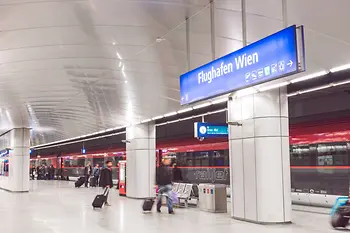
From the airport to the city center
Vienna Airport is well connected to the public transportation network and ...
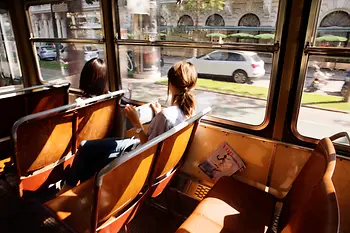
Traffic & Transport with Vienna City Card discount
With the City Airport Train or the Vienna Airport Lines to the city center, ...
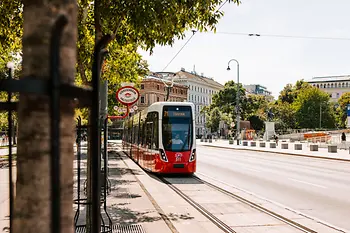
120 years of public transport in Vienna
Vienna's public transportation system is world class. Known collectively to ...
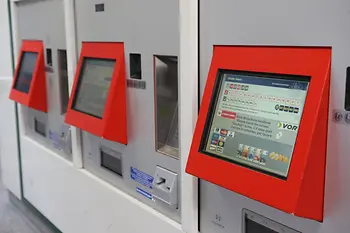
The tickets are valid in all trams, buses and subways of the Vienna ...
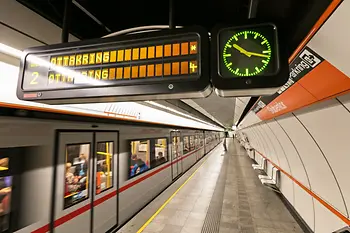
Operating hours
The Vienna Transport Authority operates nearly 20 hours per day.
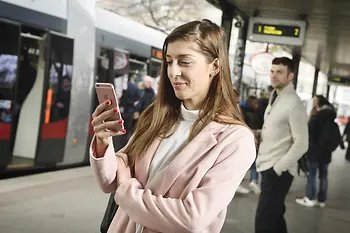
WienMobil – the app for all routes in Vienna
WienMobil is a great way for you to travel, whether by public transport, on ...

Map to download
General map showing all subway lines and express connections in Vienna to ...
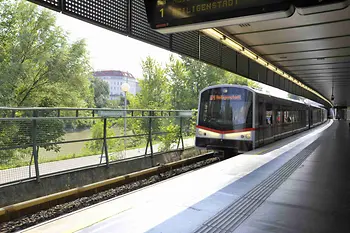
U-Bahn (Subway)
The subway system consists of five lines - U1, U2, U3, U4 and U6. The trains ...
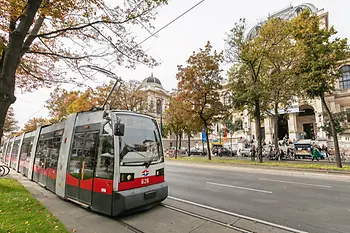
With a route length of 225 km, Vienna’s tram network is the sixth largest in ...
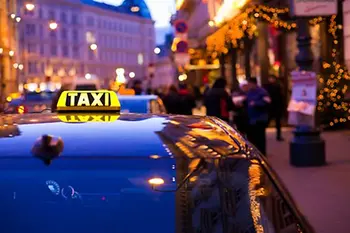
Taxis in Vienna
It's easy getting from A to B in Vienna quickly and in comfort - just call a ...
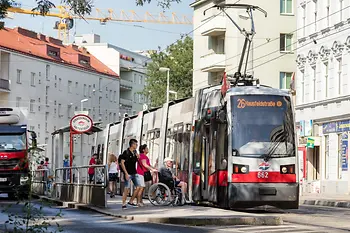
Barrier-free through Vienna
Information about public transportation in Vienna, parking, sightseeing and ...
Interactive city map of Vienna
Your destination in Vienna - and the most important features in the neighborhood: cafés, shops, museums ...
Filter results
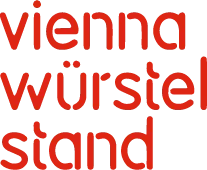
The English speaking magazine. Making the most out of Vienna and life.
- People & Stories
- Restaurants
- Breakfast & Brunch
- Bars & Clubs
- Vegan & Veggie Vienna
- This Weekend
Vienna Würstelstand Making the most out of Vienna and life. Copyright © 2021. All rights reserved.
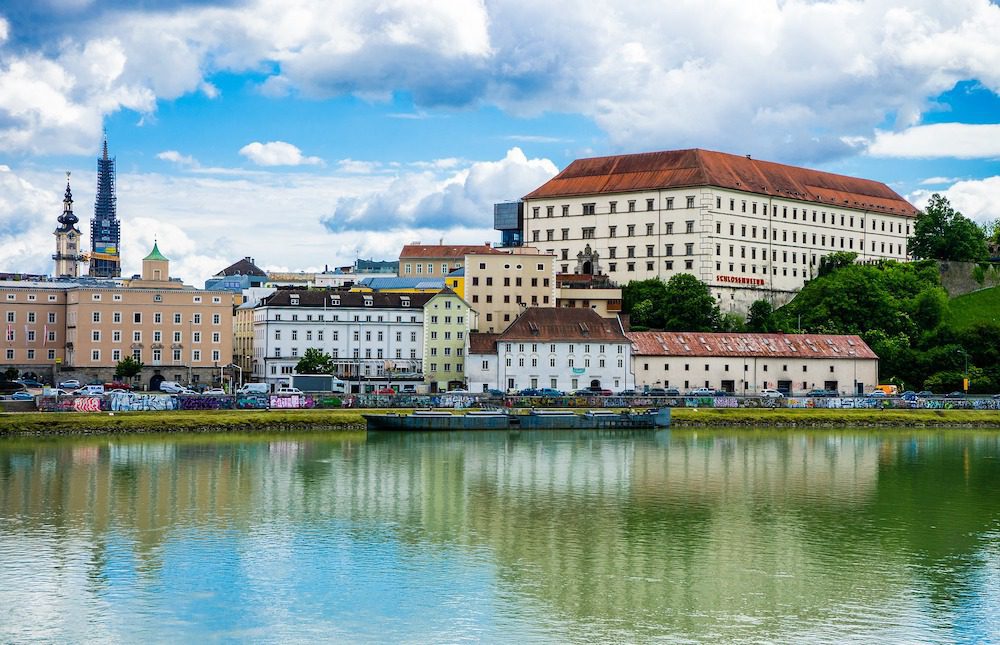
12 city trips that are easy-to-reach from Vienna by train that you absolutely must do
Can’t get enough of the city life now that traveling is possible again, why not enjoy a quick trip to some other exotic urban setting we’ve put together a list of easy-to-reach cities you can visit just by hopping on the next train. these all make for a perfect (long) weekend getaway..
Here are 12 city trips that are easy to reach from Vienna by train in less than 6 hours:
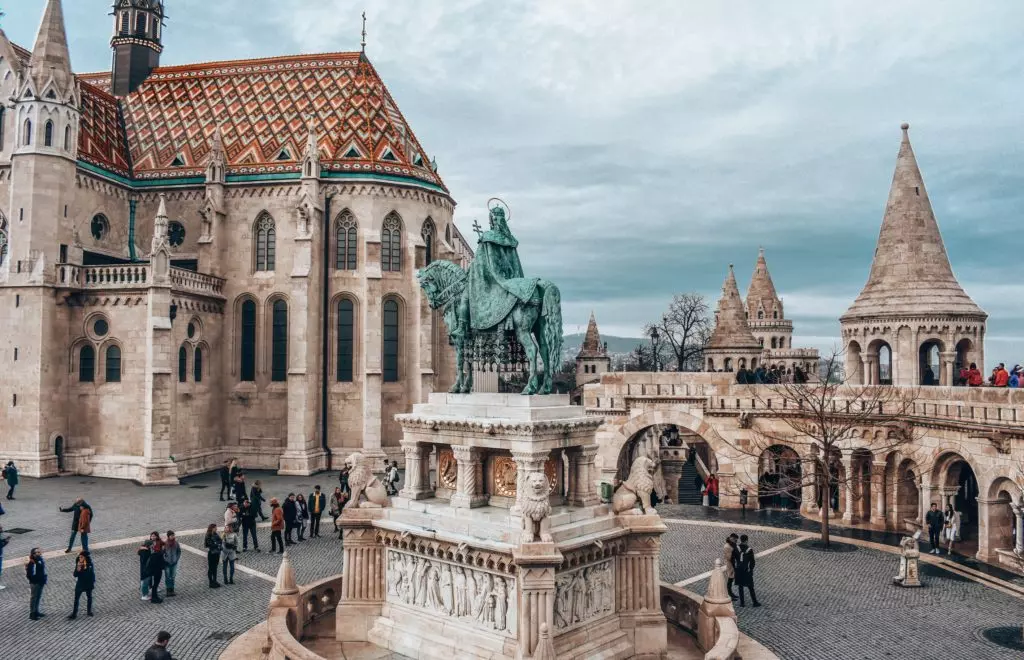
Images via Unsplash
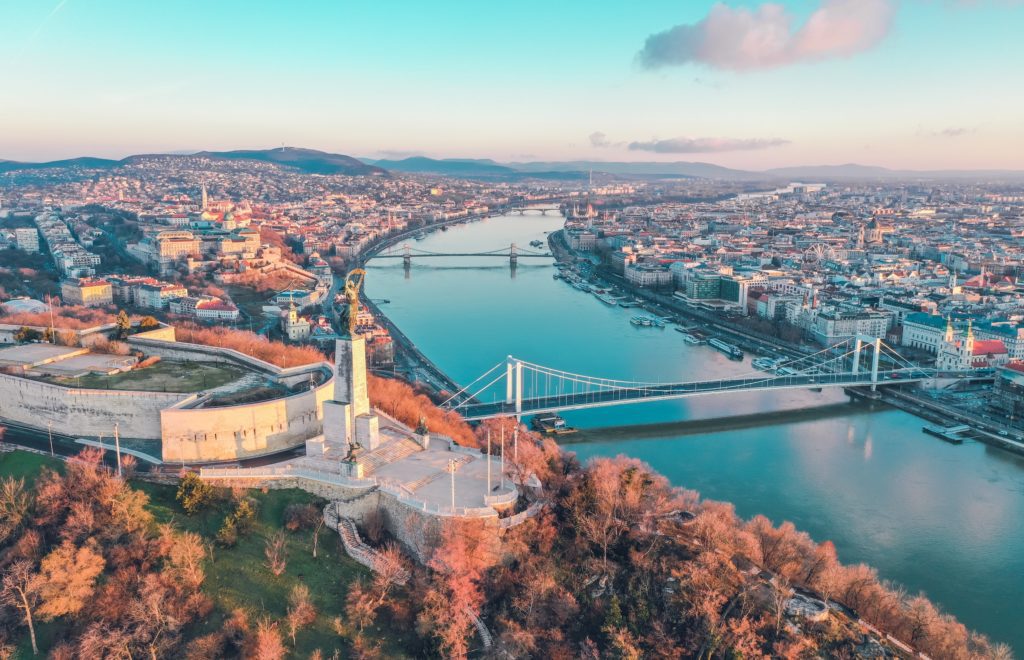
Budapest – City trips from Vienna by train
Where: Budapest, Hungary
How to get there: from Wien HBF to Budapest-Keleti (around 2h 39min)
Obvious reasons why you should travel there: the giant and beautiful gothic style parliament building, take a dip at the Instagram-famous thermal Széchenyi Baths, to sit at the Danube somewhere other than Vienna, take in the views of the city from the Fisherman’s Bastion, to try the tasty Hungarian cuisine, to enjoy the rough but grand vibe of the city
Less obvious reasons: munch on a delicious langós with various toppings at the central market hall, to take a ship as public transport instead of the metro, partake in endless games of pinball at the Flipper Muzeum, spend rainy days at a former aristocrat’s mansion that was turned into Szabo Ervin Library, to spend a night at one of the very cool hidden open air ‘ruin bars’ located in the courtyard of buildings (like Racskert , Szimpla Kert) , enjoy the view from the 360 Bar
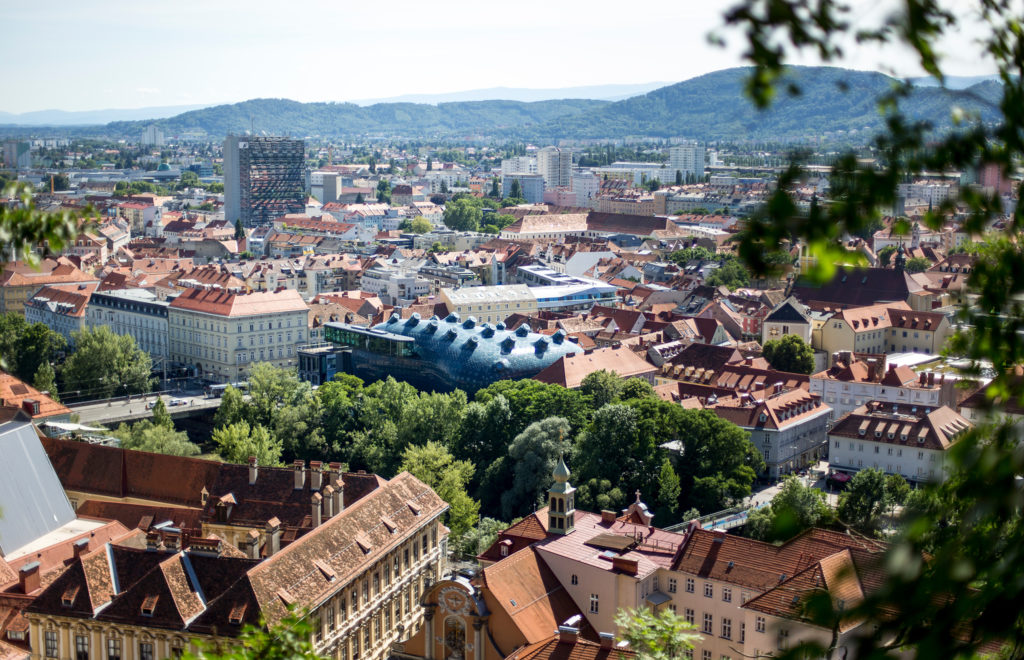
Images © Graz Tourismus - Tom Lamm © Graz Tourismus - Harry Schiffer
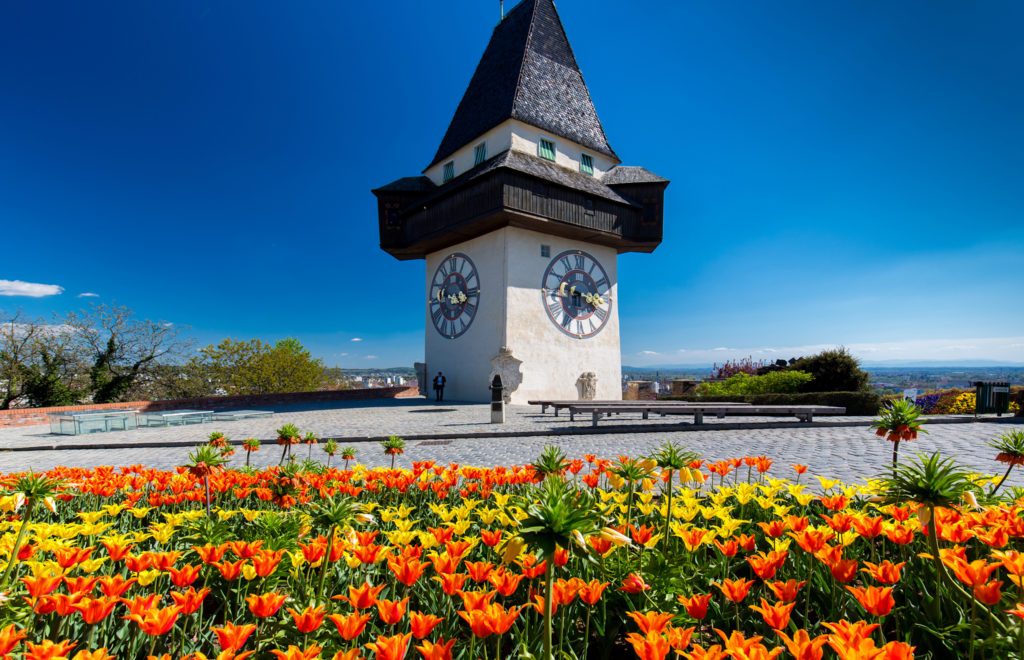
Graz – City trips from Vienna by train
Where: Graz, Austria
How to get there: from Wien HBF to Graz HBF (around 2h 35min)
Obvious reasons you should travel there: catch some scenic views from the Schlossberg and the clock tower, visit an artificial island on the river Mur that looks like a giant shell, admire the beautiful buildings in the old town, take hundreds of pics in front of the outlandish art-museum Kunsthaus Graz that looks like a human heart
Less obvious reasons: build-your-own lunch at one of many Bausatz Lokale in the city, walk through Schlossbergtunnel, take in some modern art in a religious building at church St. Andrä, slide down the largest underground slide in the world at ‘The Slide,’ eat your way through the daily market, Kaiser-Josef-Platz Market
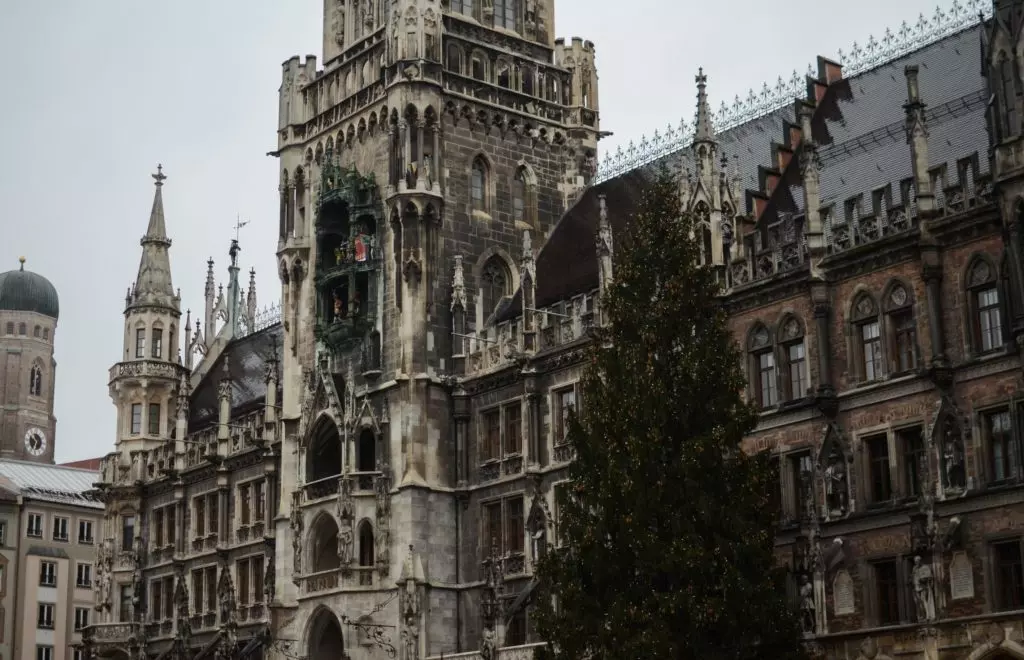
Munich – City trips from Vienna by train
Where: Munich, Germany
How to get there: from Wien HBF to Munich HBF (around 4h)
Obvious reasons you should travel there: to drink beer in the beer gardens (obvious, right?), visit the Hofbräuhaus , to eat Weißwurst for breakfast with a Wheat beer in a place where both is socially acceptable, to check out the town hall at Marienplatz aka. the city’s most favourite postcard-building, to explore the multiple periods of art in the Neue Pinakothek, to experience a car-lover’s dream in the BMW Museum, Munich’s former Olympics Venue at Olympiapark, spend time shopping and walking around the so-called ‘bohemian neighbourhood’ of the city, Schwabing
Less obvious reasons: see the devil’s footprint at Munich’s Frauenkirche, walk a hidden stairway that leads to nowhere called ‘Umschreibung’, the pavement memorial of the nazi-opposing student group White Rose, to explore the nearby alps on nature day trips out of the city, to indulge in some heavy and hearty Bavarian cuisine, to watch (or join in yourself) the people surfing on the one wave in a stream known as the Eisbachwelle, go for a walk in West Park or the English Gardens, spends some thinking time in the NS-Dokumentationzentrum , go for a swim in the Müller´sches Volksbad
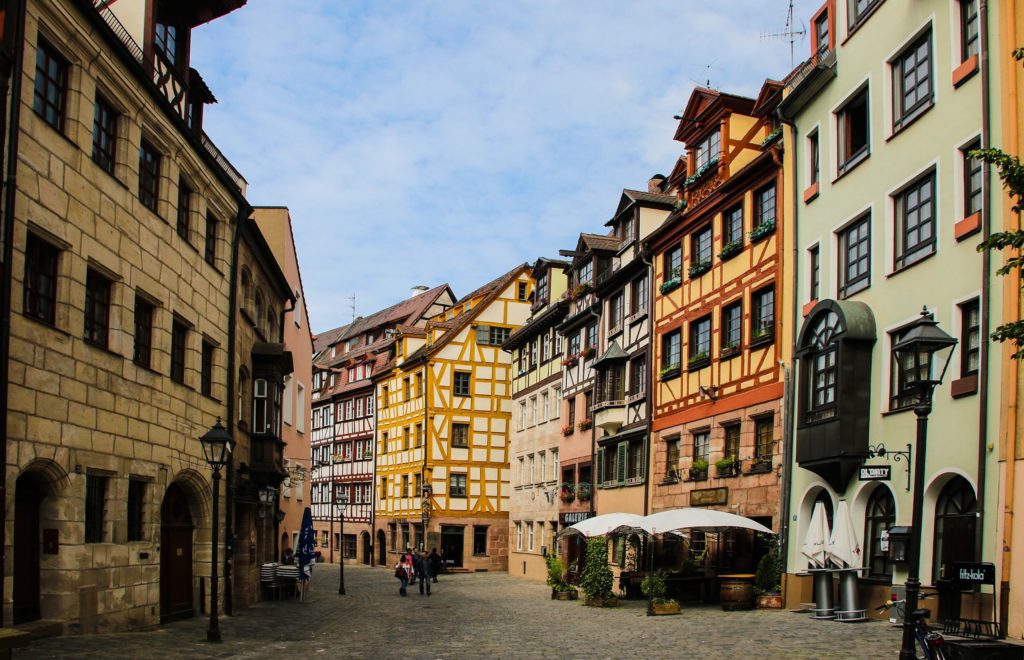
Images via Pixabay
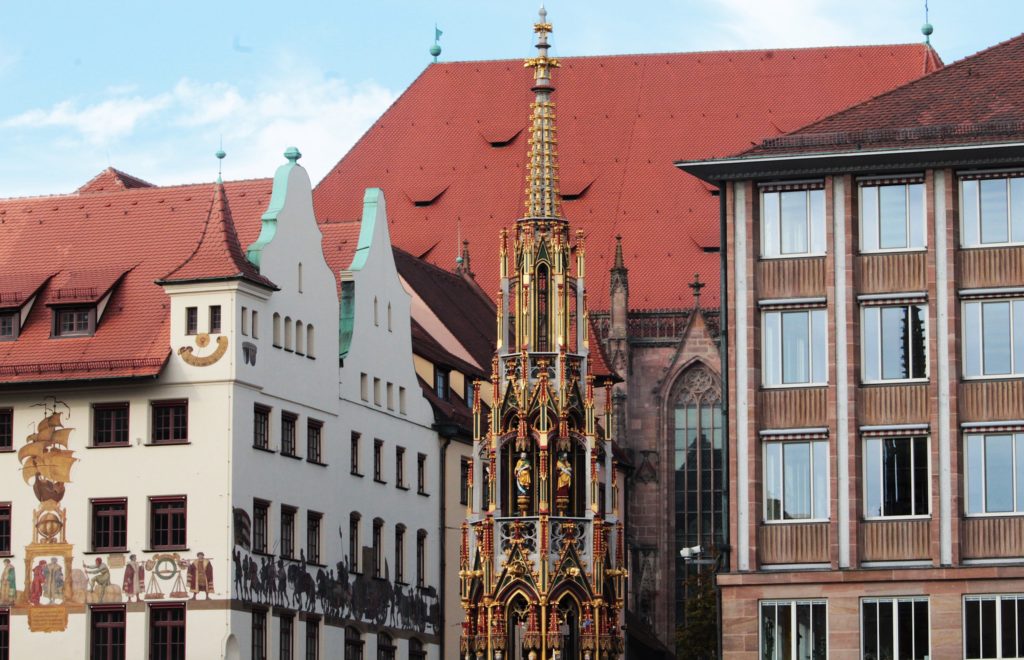
Nürnberg – City trips from Vienna by train
Where: NÜRNBERG in GERMANY
How to get there: from Wien HBF to Nuremberg HBF (around 4h 14min)
Obvious reasons why you should travel there: to explore the castle of Nuremberg, beautifully arranged fresh fruits and vegetables in the Hauptmarkt, see where renaissance-painter Albrecht Dürer lived and did his work
Less obvious reasons: Bratwurst at the last real “Bratwurstküche”, to let your inner kid loose in the Toy Museum, a medieval Holy-Spirit-Hospital turned restaurant, a rather grim interpretation of married life in the form of the fountain-sculpture Ehekarussel, the home of the city’s former executioner and some surprisingly beautiful views out his windows
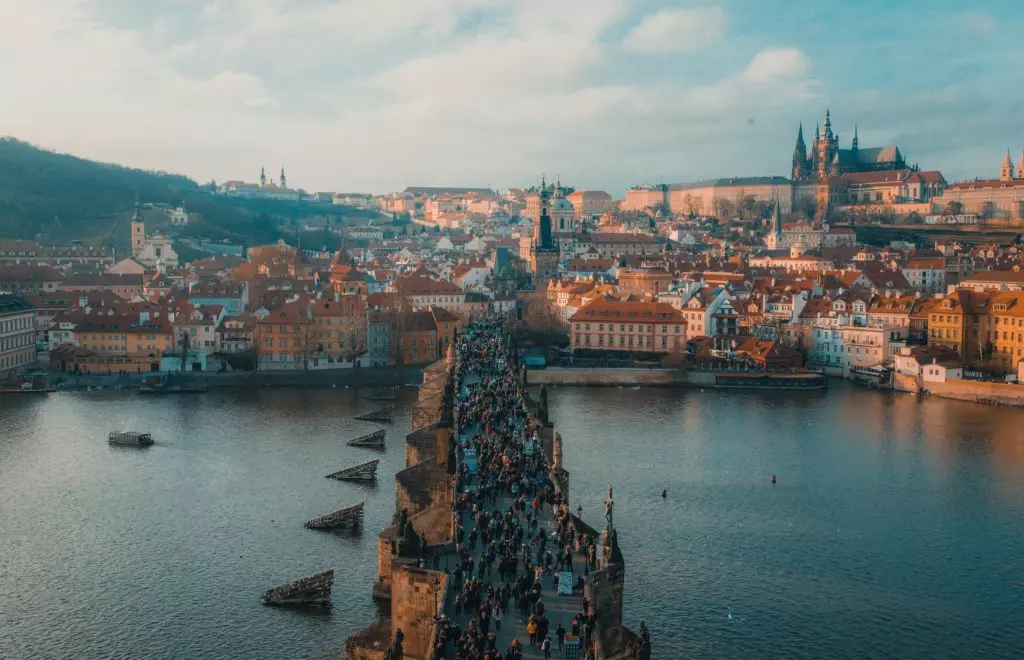
Prague – City trips from Vienna by train
Where: Prague, Czech Republic
How to get there: from Wien HBF to Praha hl.n. (around 4h)
Obvious reasons why you should travel there: to marvel at the astronomical clock in the main square , for strolls across the Charles Bridge, to take a scenic route to the Prague Castle, for some very affordable Bohemian cuisine and local beer, for the buzzing nightlife (including the likes of Chapeau Rouge , Roxy , Hemingway Bar ), to enjoy the romance of its medieval streets
Less obvious reasons: ice-cream filled chimney cake, a huge graffiti wall in honor of John Lennon, to dance the night away in the five-story club, Karlovy Lazne , for pickled cheese, relaxing at the Beer Spa (just please don’t drink the bath water)
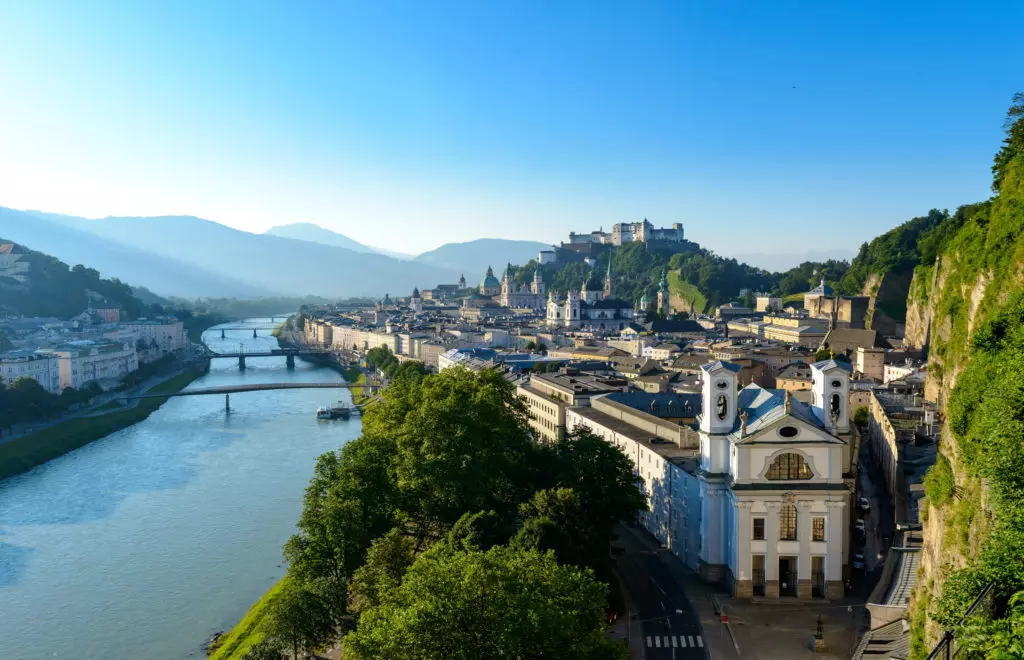
Blick über die Salzburger Altstadt vom Mönchsberg Images: © Tourismus Salzburg, Fotos: Breitegger Günter
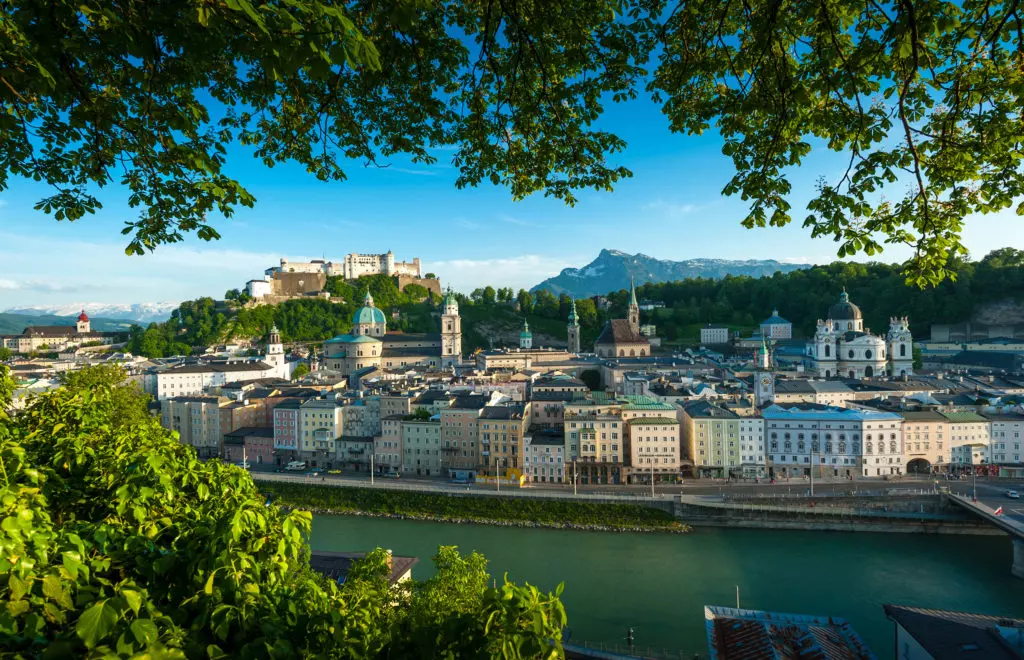
Sehenswürdigkeiten Salzburg, Blick vom Kapuzinerberg auf die Salzburger Altstadt und auf die Festung Hohensalzburg, Untersberg im Hintergrund
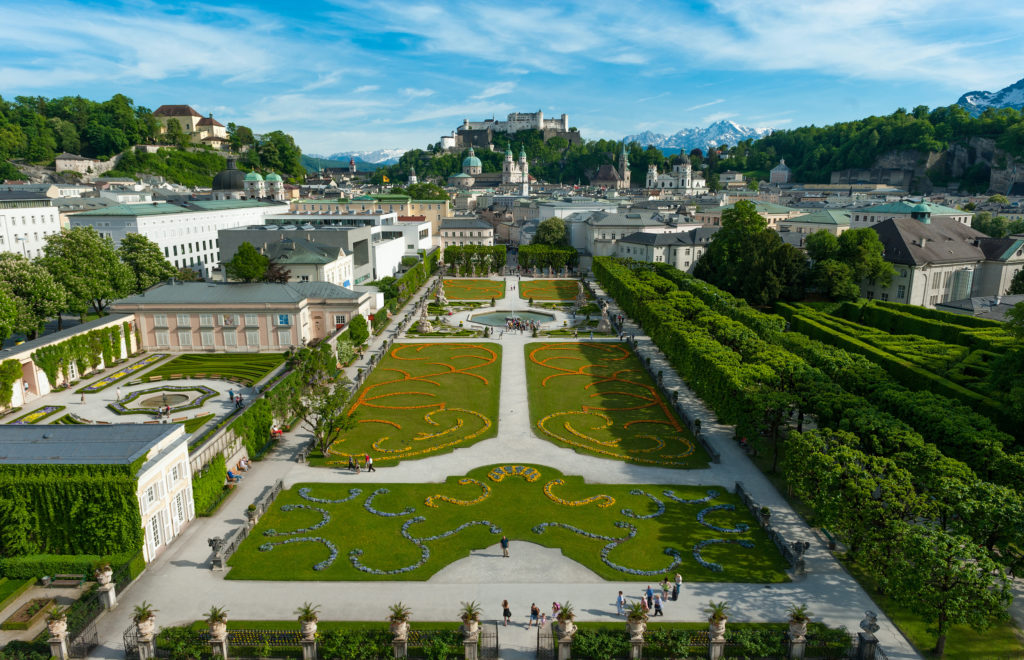
Sehenswürdigkeiten Salzburg, Blick über den Mirabellgarten auf die Salzburger Altstadt
Salzburg – City trips from Vienna by train
Where: Salzburg, Austria
How to get there: from Wien HBF to Salzburg HBF (around 2h 30min)
Obvious reasons why you should travel there: to binge on the original Mozartkugel chocolates to satisfy your sweet tooth, to check if the hills are actually alive with the sound of music, frolicking in a flower field between scenic mountain views, baroque architecture, to visit classical music’s most famous Wunderkind W.A. Mozart house, to catch impeccable views of the old town from the Kapuzinerberg, to explore the blissful nature surrounding the city, to climb up to the fortress and see the city from above, wandering through the narrow streets of the old town, do a kitschy skip in the idyllic setting of the Mirabell gardens
Less obvious reasons: beer with the locals at Augustiner Bräu , visit the stone dwarfs at the Zwerglgarten, five human-sized gherkins (unfortunately not edible), visit the Eagle’s Nest
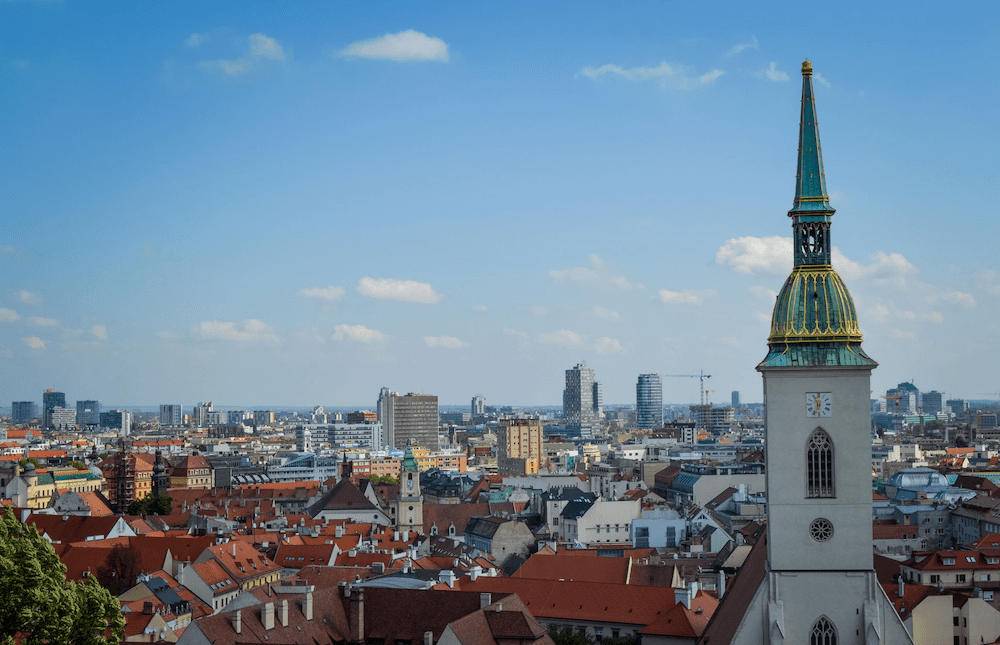
Images: © Vienna Würstelstand
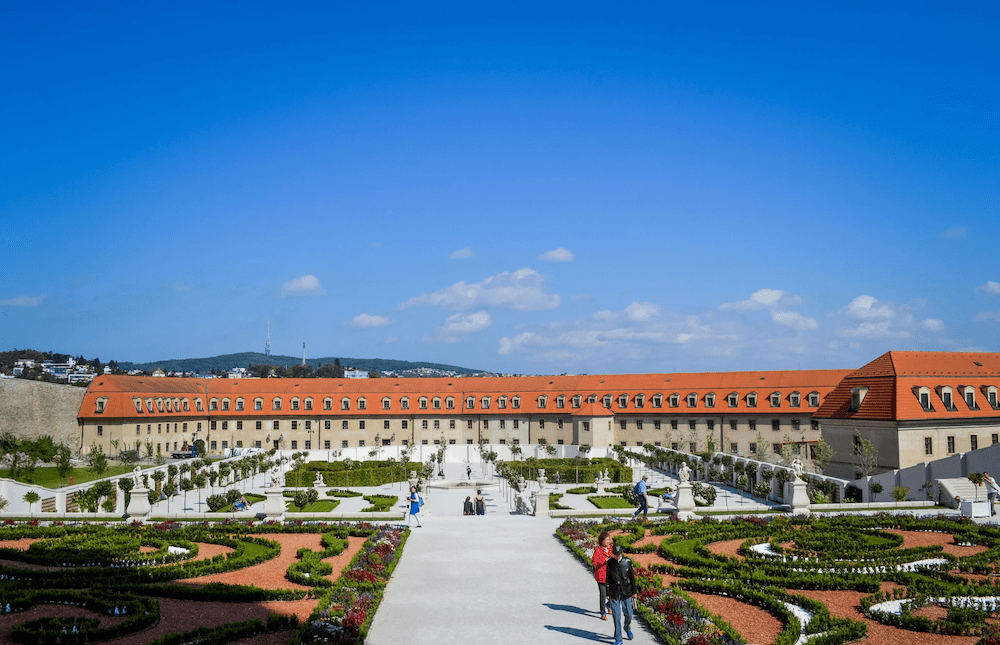
Bratislava – City trips from Vienna by train
Where: Bratislava, Slovakia
How to get there: from Wien HBF to Bratislava (around 1h 7min)
Obvious reasons you should travel there: it’s just a stone throw away from Vienna, cheap booze resulting in fun nights out, to check out the UFO bridge and enjoy the view up high in the Flying Saucer , the charming streets and squares to wander through
Less obvious reasons: enjoy Middle Europe’s renowned and very affordable cuisine, find out how closely connected the city is to Vienna, to go on a hunt throughout the city to find ALL the hidden human-sized bronze statues, listen to some music in an upside down pyramid or in a granary, lounge on the ‘Magio Beach’ on the Danube riverside, to get messy with the amazing racks of ribs in Meštiansky pivovar
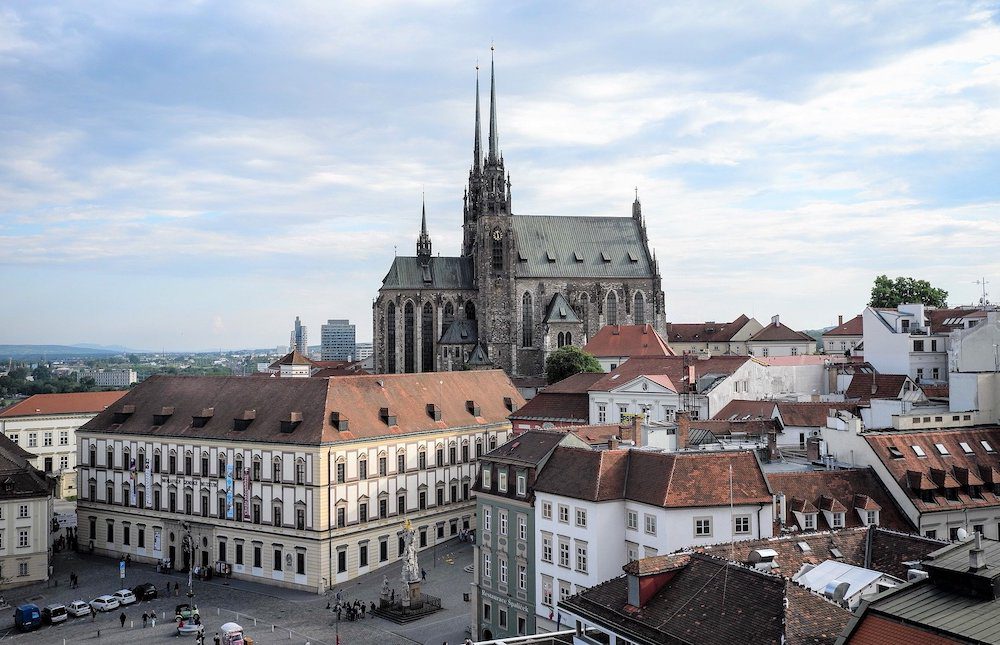
Images: via Pixabay & Vienna Würstelstand
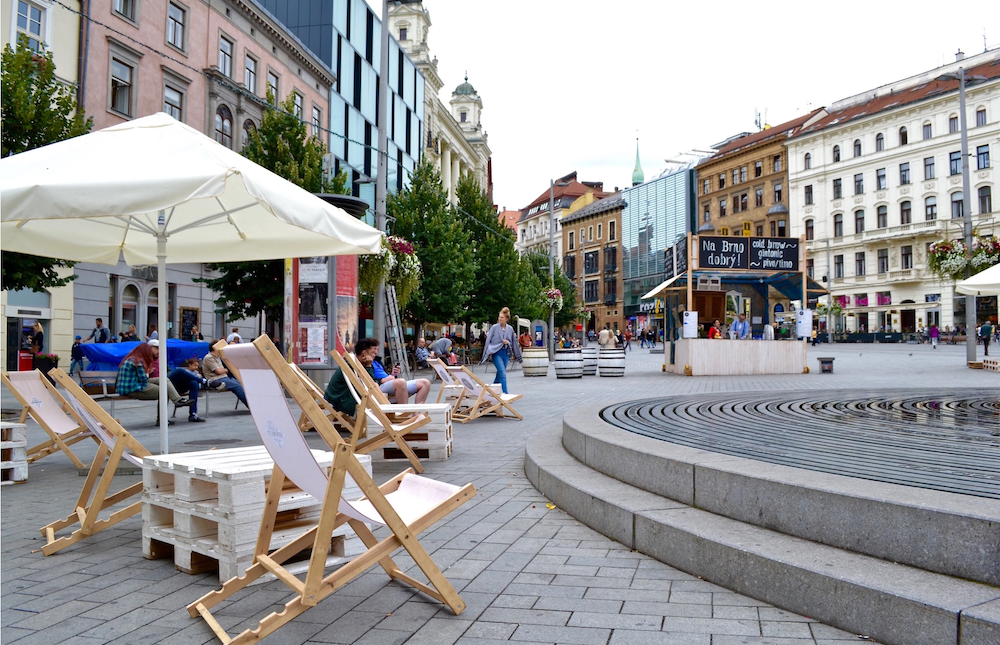
Brno – City trips from Vienna by train
Where: Brno, Czech Republic
How to get there: from Wien HBF to Brno main train station (around 2h 11min)
Obvious reasons you should travel there: it’s very easy to reach from Wien, the cheap beer, the heartwarming bohemian comfort food, the mix of gorgeous Modernist and Medieval architecture
Less obvious reasons: it’s undiscovered by tourists, there’s plenty of Instagram-worthy buildings and spots to take pictures at, to climb the highest church tower and have a grand view over the city, to enjoy a vibrant city during summer, to experience the hip cafe scene
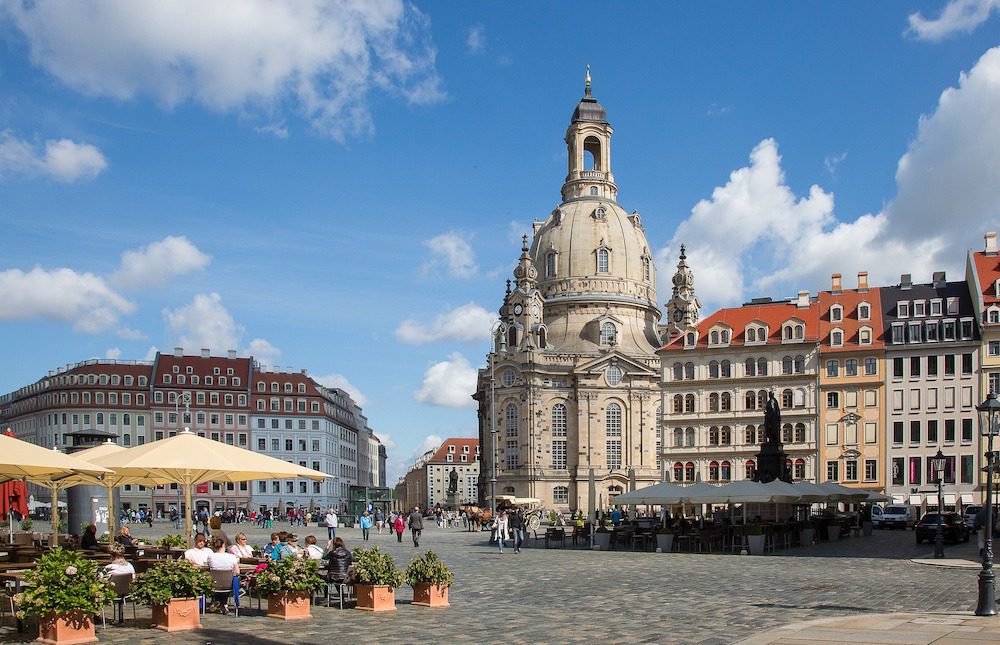
Dresden – City trips from Vienna by train
Where: Dresden, Germany
How to get there: from Wien HBF to Dresden (6h 40min)
Obvious reasons you should travel there: to visit one of the trendiest city’s to visit at the moment in Germany, to taste some quality German beer, to check out a historically important city that’s been rebuilt from scratch, to check out the halls of magnificent masterpieces by the old masters in the Gemäldegalerie Alte Meister , visit the architecturally unique, Semperoper , to marvel at the plentiful architectural gems
Less obvious reasons: to really check out why it’s known as a living and breathing book of German history, to taste a glass of fine wine from the surrounding wine-growing region, to take a long stroll and check out the alternative scene of the city that tries its best to match Berlin’s vibe (and it’s doing a damn good job), for some serious bar-hopping
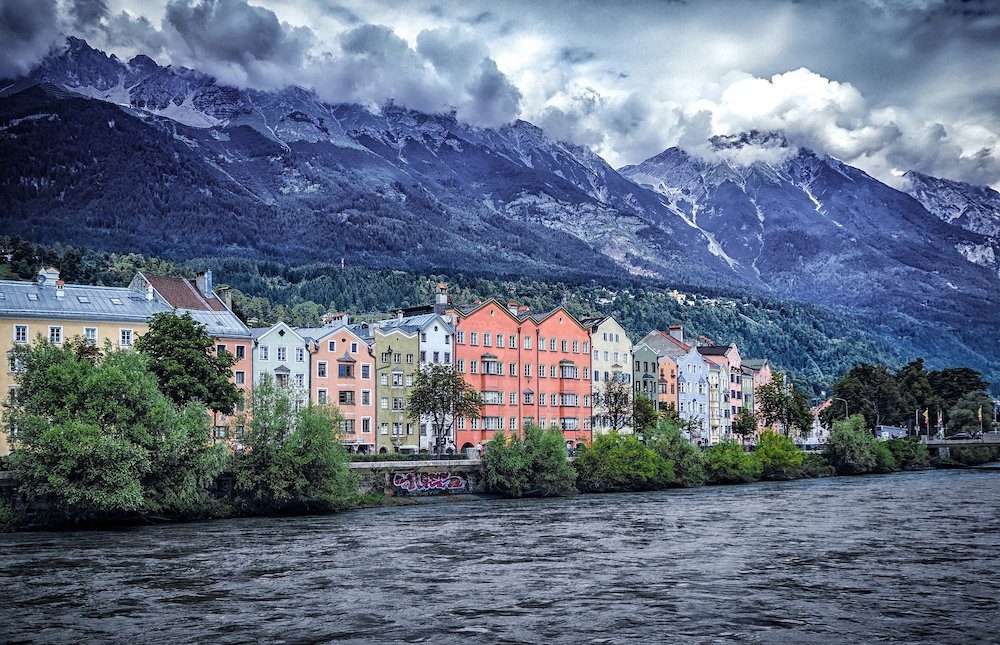
Images © Pixabay © Vienna Würstelstand
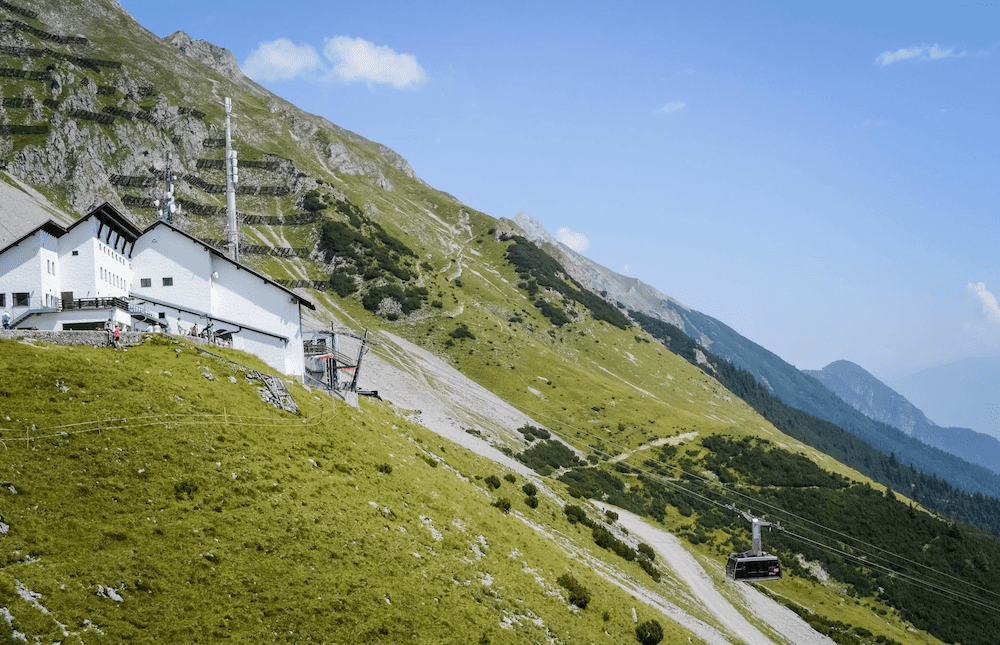
Innsbruck – City trips from Vienna by train
Where: Innsbruck, Austria
How to get there: from Wien HBF to Innsbruck (4h 14min)
Obvious reasons you should travel there: to visit the Goldene Dachl and the Bergisel Ski Jump stadium , to get that priceless Alpine feeling, to experience some epic hikes around the city
Less obvious reasons: to take the Hungerburgbahn funicular railway and the Hafelekar cable car all the way up the 2,556 metres mountain for the breathtaking views over the region, to rent a bike and explore the city and its surroundings, to check out the hip café and foodie scene in the old town, to see Innsbruck’s version of their own unique Ampelpärchen aka. Ampelskier
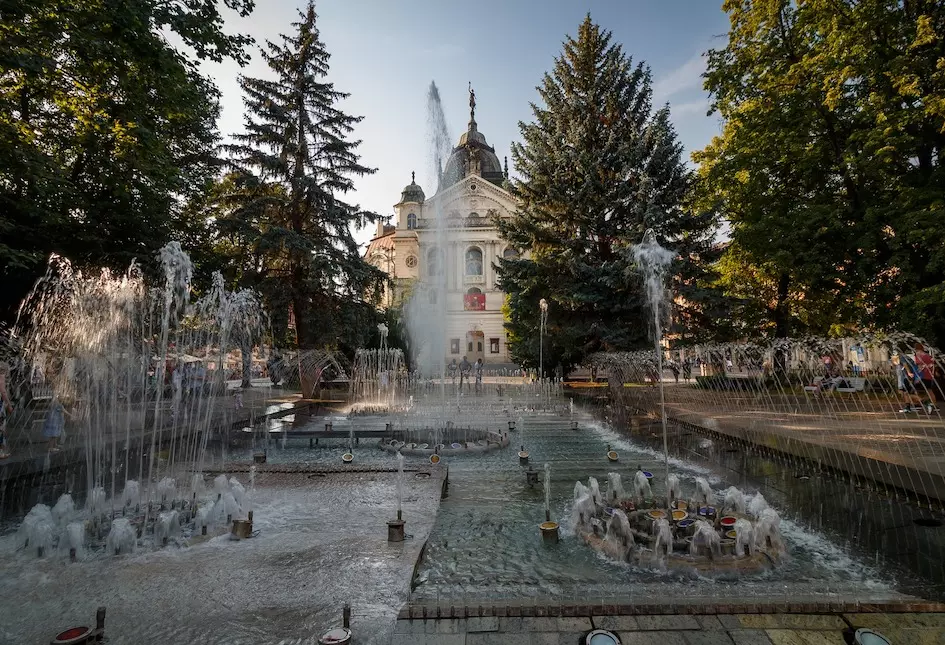
Images via Pixabay & Unsplash
Košice – City trips from Vienna by train
Where: Košice, Slovakia
How to get there: from Wien HBF to Košice (around 6h)
Obvious reasons you should travel there: to check out a former European Capital of Culture and enjoy some Central European charm
Less obvious reasons: to eat your way through town and try some Lokše (thin pancakes), or Bryndzové halušky (dumplings with sheep cheese – the national dish), to admire the historic buildings of the old town, to check out the nearby Spiš Castle which is the largest castle site in Central Europe

Linz – City trips from Vienna by train
Where: Linz, Upper Austria
How to get there: from Wien HBF, or Wien WBF to Linz HBF (1h 14min)
Obvious reasons why you should travel there: to check out the rich cultural scene, take the steep Pöstlingberg tram up the Pöstlingberg for the great view over the city, the stunning old town
Less obvious reasons: to eat the famous Linzertorte, to check out the Hip Hop capital of Austria, to check out the local club and somewhat underground party locations such as KAPU , Stadtwerkstatt , Exxtrablatt or Solaris , to enjoy the summer breeze next to the Danube in summer, to eat and dance at the cafés/bar/art and cultural space mix on the ship that is the Salonschiff Fräulein Florentine , check out the Ars Electronica Center
Get content that you love in your inbox!
Newsletter List All our lovely Würstels
You agree that your personal data (as described in the Data Privacy) will be processed to send newsletters. You can revoke this consent at any time by clicking on the unsubscribe link in the newsletter.
We’re committed to your privacy. We will use the information you provide to us to contact you about our relevant content and services in the form of a newsletter. For more information, check out our Privacy Policy .
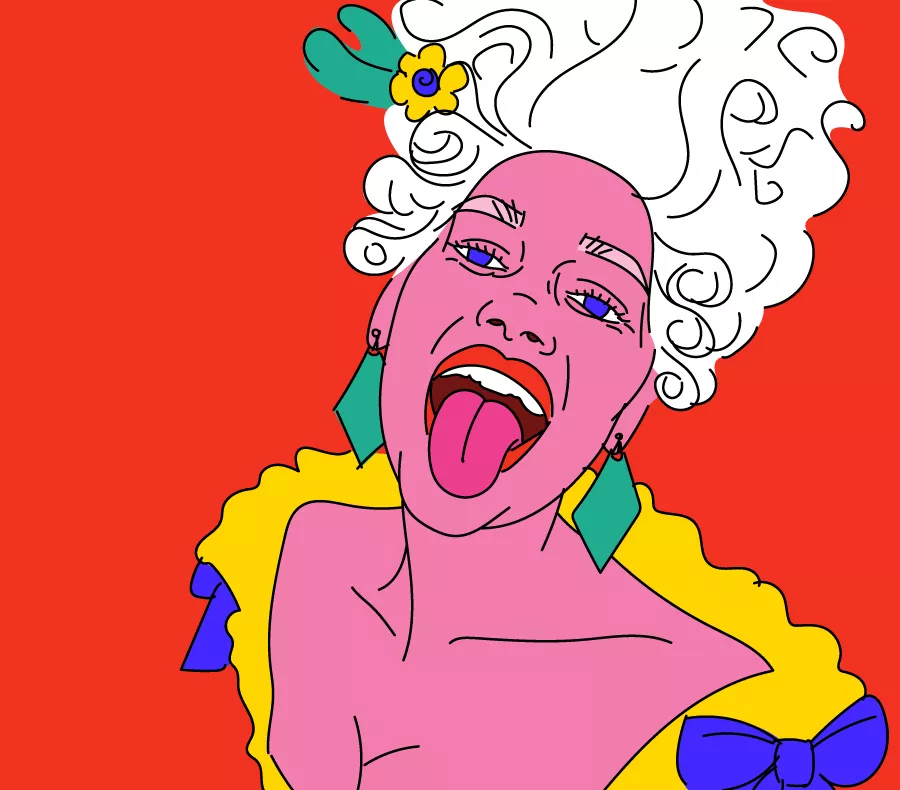
Hey, look at this similar content we made for you
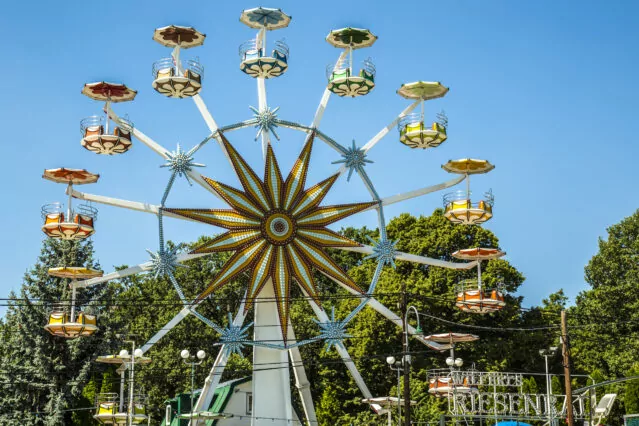
14 hidden places in Vienna that only the locals really know
Do it like the locals and hang out at those 14 places in Vienna that are not to be found on...
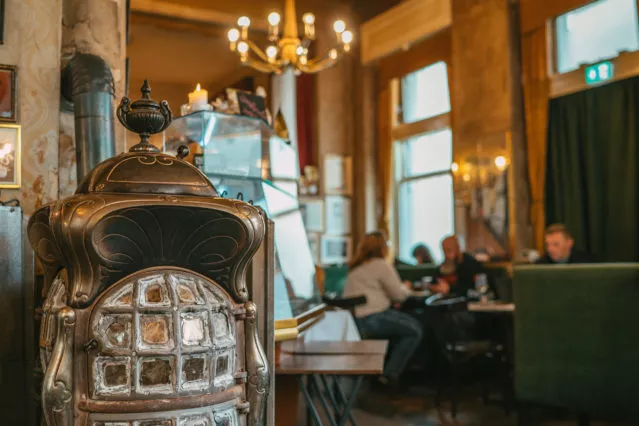
6 cosy Vienna cafes where to snuggle by a fireplace and lose yourself in a good book
With these, you'll be happy it's cold and grey outside
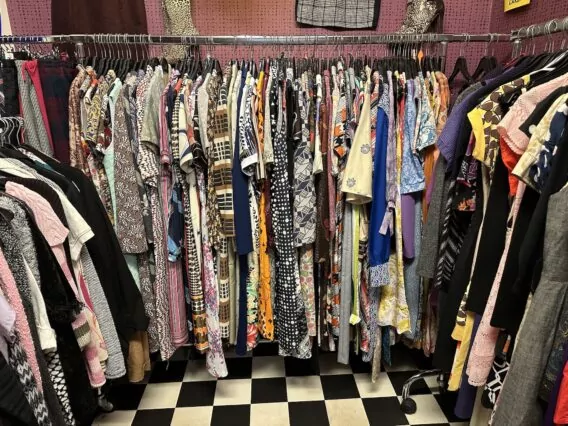
Vienna’s Secondhand Gems: 9 Thrift Stores worth exploring
For some, it’s about sustainable living and for others, it’s all about ‘fashion, darling!’ Either way, uncovering Vienna’s tucked-away thrift treasures...
BECOME A WÜRSTEL!
Sign up to our newsletter & have the hottest stuff of the city sent straight to your inbox.
We’re committed to your privacy. We will use the information you provide to us to contact you about our relevant content and services in the form of a newsletter. For more information, check out our Privacy Policy.
We want to hear from you!
Privacy Overview
Necessary cookies are absolutely essential for the website to function properly. This category only includes cookies that ensures basic functionalities and security features of the website. These cookies do not store any personal information.
Any cookies that may not be particularly necessary for the website to function and is used specifically to collect user personal data via analytics, ads, other embedded contents are termed as non-necessary cookies. It is mandatory to procure user consent prior to running these cookies on your website.
[An * means an affiliate relationship; see footer] City guide | Search the site | April tips
Visiting Vienna
The public transport system
[German: Der öffentliche Verkehr in Wien ]
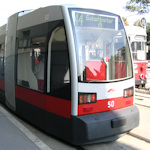
Every city has its good points and its bad points. The public transport system is definitely one of Vienna’s good points. Cheap, frequent, fast, clean, efficient, and rarely overcrowded.
- Wiener Linien is the municipal transport authority
- Their tickets and passes cover all city train and subway services and nearly all tram and bus services
- Buy network passes for cheap, peace-of-mind travel
- Book a guided tour * for Vienna
- The Vienna City Card (public transport pass designed for visitors and also includes various tourism discounts)
- The Transport Museum
- Hop on Hop off buses
Travel update:
- Until September 2024, the U2 subway line will not go to four central stations .
How the system works
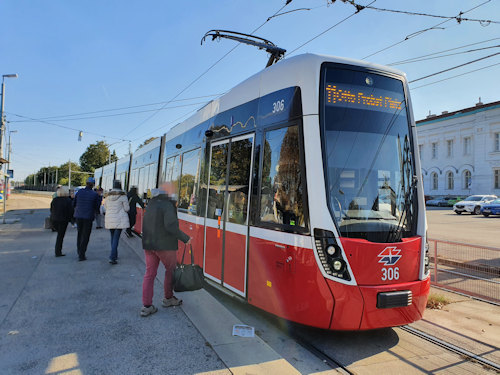
(The latest generation of Viennese trams)
The four main forms of transport are U-Bahn (subway), Schnellbahn or S-Bahn (local train), Straßenbahn ( tram ) and Autobus (bus).
Vienna works on an honesty system with no ticket barriers at stations and no formal, permanent ticket checks on the subway, local trains, trams and buses. You just jump on and off.
This doesn’t mean public transport is free, though. You do need to buy a ticket.
Now I daresay you may be wondering why you’d bother buying a ticket. And you wouldn’t be the first to think that.
Leaving the ethics and legality aside for the moment, a lack of formal ticket checks does not mean there are no ticket checks.
You may encounter a conductor wandering down the city train. Or run into spotchecks at the end of a subway platform. Or find the unassuming gentleman next to you on the tram pulling out his transport authority ID and asking to see everyone’s “Fahrschein.”
These undercover agents are impossible to spot and they’ve heard all the excuses before. Travelling without a ticket incurs a fine, not to mention a whole heap of embarrassment.
So, yeah, buy a ticket.
How do tickets work?
Nearly all forms of public transport fall more or less under the same municipal organization (called Wiener Linien), so the tickets or network passes you buy are independent of your mode of travel.
If you buy a single ticket from A to B, for example, it doesn’t matter if you take the tram, city train, subway, or catch the bus. Or use all four to make the journey (provided you don’t take any detours or long breaks).
There are very few services you can’t use with a ticket or pass (mainly selected airport transfer services, the Westbahn rail service, and tourist services like the hop on hop off sightseeing buses ).
If you have children , those under six do not need a ticket. Trams, buses, and subway also remain free until the end of the academic year where the child turns six.
Those under fifteen qualify for reduced-price single tickets.
Under 15s go free on Wiener Linien’s trams, buses and subway trains if it’s a Sunday, public holiday or official school vacation period in Vienna (e.g. the summer holidays). This applies to all nationalities, not just locals.
Which tickets should you buy?
Sightseeing and tourist discount passes for Vienna may come with an integrated travel component that saves you having to organise public transport tickets separately.
The Vienna City Card , in particular, is specifically designed as a travel pass for tourists.
This 24, 48 or 72-hour network travel card for the city also qualifies you for various discounts across a 7-day period. Just about anything you’re likely to visit, watch or see offers some kind of small reduction with the Vienna City Card.
Otherwise, Wiener Linien offers various alternatives to fit your needs.
Standard tickets & network cards
Buy your tickets from ticket offices in the main stations, ticket machines in stations, the Wiener Linien online store or app, and (for some very basic tickets) from Trafik newsagents/tobacconists.
Machines on trams also sell some tickets, provided you have the coins (the transport authority is migrating to multilingual ticket machines for trams with cashless payment options, but this may take a while before every vehicle has converted).
Some of the tickets you buy need to be validated in a stamping machine before boarding. Whether you need to do so should be relatively clear from the ticket.
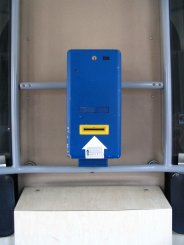
You validate a ticket by putting it face up into the yellow or orange slot on the small boxes (see photo for an example) you find in trams and buses, and at the entrances to U-Bahn and S-Bahn stations and platforms.
(Trains don’t have validation boxes on board.)
Tip: If you get lost or forgot where your hotel is, show your stamped ticket to a tram driver or station attendant. They can often tell you where you stamped your ticket, so you can retrace your journey back to the beginning.
Wiener Linien has a lot of ticket options for travelling around Vienna. Here are the main ones of interest to visitors (at the time of writing). Check the Wiener Linien website for up-to-date details on alternatives, prices, conditions, where to buy tickets, online purchase options, etc.
- Single ticket (Einzelfahrschein): Once validated at or for point A, lets you travel to any point B within Vienna. The only restriction is the journey must be direct, with no pause. You can change buses, trams and trains as you need, provided you’re taking a continuous journey to your destination.
- 24/48/72-hour network card (24/48/72 Stunden Wien): The relevant time period starts from the moment you first validate the ticket (or the time you specify if buying online). In that period, you can go where you like, as often as you like, within the city limits.
- Day network pass (1 Tag WIEN): Entitles you to city-wide travel on one day until 1am the following day. Available online.
- Weekly network pass (7 Tage WIEN or Wochenkarte): Entitles you to city-wide travel for a seven-day period with a starting day you choose (if bought online) or from Monday to 9am the following Monday in a specific week (if bought offline).
- Monthly network pass (31 Tage WIEN or Monatskarte): Entitles you to city-wide travel for a 31-day period with a starting day you choose (if bought online) or for the relevant calendar month, plus the first two days of the subsequent month (if bought offline).
Tip: I recommend you buy one of the network passes or the Vienna City Card. They save you money once you make more than a couple of trips in a day, and simply make life easier.
A few important notes:
- The network cards and passes are transferable; they’re valid for the bearer and not for any one particular person, unless they carry your name (as is the case when, for example, purchased online).
- The weekly and monthly passes do not require stamping since they come marked with the period of validity in question. Same for network cards purchased online.
- At the time of writing, a 72-hour network card costs the same as a weekly network pass. So the latter makes more sense if you buy it online from the Wiener Linien ticket store (then you can choose when the 7-day period begins).
Weekly passes bought offline cover a whole specific calendar week, so the best value then depends on the timing of your trip. For example, a 72-hour card would make sense if you’re here Sunday to Tuesday or on a similar schedule where you can’t simply use one calendar weekly pass.
Incidentally…if you move permanently to Vienna, the annual pass costs €1 a day, which is the definition of cheap travel.
And the Viennese make use of the opportunity: surveys reveal, for example, that around 70% use the buses, trams and/or subway daily or several times a week. And some 32% of all journeys made in the city by locals are on public transport (compared with 25% in a car).
Travel zone validity
City-wide travel means exactly that. The Vienna city zone covers just about anywhere you’re likely to go as a visitor. You’ll probably only leave it if you visit one of the surrounding towns or villages. Note, however, that Vienna airport is outside the city transport zone . For details, see:
- Getting to the airport from Vienna
- Getting to Vienna from the airport
…oh, and if your interest in Vienna’s transport system goes beyond the practicalities of getting around the city, then drop into the Wiener Linien museum .

Here are the best-rated Priority Pass lounges in 2024
P riority Pass has revealed its best-rated airport lounges around the world — and you're definitely going to want to tick off a few of them on future trips.
Pulled together as part of the Priority Pass Excellence Awards, this roundup features the highest-rated lounges across the Priority Pass network , their rankings decided by 379,966 member ratings and reviews.
Related: 11 credit cards that offer Priority Pass airport lounge access
Each lounge is judged on a range of criteria, including quality of facilities, customer service, food and beverage selection, and overall satisfaction, with the awards recognizing best-in-class lounges both regionally and globally.
"We have a shared ethos with our partners to deliver the best airport experience to our members and the winners of this year's Priority Pass Excellence Awards have proven that they truly elevate every customer journey into something special," said Christopher Evans, president of Collinson International.
Here's a rundown of the lounges that received the best ratings for 2024.
Global and Europe
Winner: vienna lounge, terminal 1, vienna airport (vie) in austria.
The Vienna Lounge was refurbished in 2022 and is likely the slickest Priority Pass lounge we've ever visited, so it's no surprise that it received the best ratings in Europe and globally from visitors. It features hip art nouveau stylings, a beautiful Viennese cafe and top-tier food and drinks. And that's before we even mention the airy outdoor terrace with runway views and the artwork displayed throughout the lounge, which includes various works from renowned Austrian painter Gustav Klimt.
"The Vienna Lounge is all about symbolising impressive Vienna elegance and Austrian cuisine for travellers," said Julian Jäger, joint CEO and chief operating officer of Vienna Airport, in reaction to the win. "To be named Global Lounge of The Year amongst 1,500 other lounges and travel experiences is an outstanding confirmation of the quality of our services."
Highly commended (Europe): Marco Polo Club, Venice Marco Polo Airport (VCE) in Italy
The Save SPA-partnered Priority Lounge, Marco Polo Club, was also highly commended and recognized for its selection of hot and cold snacks, beverages, shower facilities, and other amenities. It's a worthwhile stop-off point if you're visiting Venice soon.
The Asia-Pacific region
Winner: chase sapphire lounge by the club, terminal 1, hong kong international airport (hkg).
This stylish Chase Sapphire Lounge covers 12,000 square feet and opened in October 2022. It features separate spaces for those traveling for business and pleasure, with dedicated areas for work and relaxation. Along with self-serve food and drink options, the lounge has an impressive array of signature cocktails, curated wines and made-to-order dishes.
Highly commended: Oriental Club Lounge, Terminal 2, Taiwan Taoyuan International Airport (TPE)
This lounge haven in Taiwan Taoyuan International Airport is a perfect backdrop for travelers wanting to relax and enjoy freshly prepared (and delicious) Taiwanese delicacies during work downtime. You'll find a classy environment with grade-A service, food and drinks, and other amenities.
Latin America and the Caribbean
Winner: advantage vip lounge, curitiba afonso pena international airport (cwb) in brazil.
Priority Pass' standout offering in Brazil, the Advantage VIP Lounge, garnered great reviews for its excellent gastronomy experiences — which, along with regionally inspired menus, include delicious gluten-free options and frequent theme days that pay ode to Curitiba.
Highly commended: Macondo Lounge, Barranquilla Ernesto Cortissoz International Airport (BAQ) in Colombia
Also recognized was the Macondo Lounge in Colombia, which prides itself on its fully stocked selection of newspapers and magazines, friendly service and diverse seating areas.
The Middle East and Africa
Winner: petra lounge, amman queen alia international airport (amm) in jordan.
The Petra Lounge was ranked highly thanks to its warm and inviting front-of-house staff, great food and vast seating area decorated in modern Middle Eastern-influenced details that reference the region's rich culture.
Highly commended: Primeclass Lounge, Muscat International Airport (MCT) in Oman
The highly regarded Primeclass Lounge is not only a favorite of Priority Pass members but was also referenced in glowing terms repeatedly by members of the Priority Pass team when TPG recently asked for recommendations. The lounge features a sprawling open buffet, a gaming zone, a cinema, a spa and a kids play zone.
North America
Winner: vip lounge aguascalientes, aguascalientes international airport (agu) in mexico.
The VIP Lounge Aguascalientes topped the ratings across North America thanks to its vibrant food and drink services and comfortable, pet-friendly space.
Highly commended: Escape Lounge, South Terminal A, Syracuse Hancock International Airport (SYR) in New York
Finally, the Escape Lounge at Syracuse Hancock International Airport also received a worthwhile nod, thanks, in part, to its highly praised seasonal menus, which are changed frequently throughout the year.
Credit cards that offer Priority Pass Select memberships
These are multiple credit cards through which you can get a Priority Pass Select membership.
These include not only premium travel cards like the Chase Sapphire Reserve® , The Platinum Card® from American Express (enrollment required) and the Capital One Venture X Rewards Credit Card — which even includes two guests — but also hotel credit cards like the Marriott Bonvoy Brilliant® American Express® Card (enrollment required).
Bottom line
Priority Pass has just revealed the winners of its newly established Priority Pass Excellence Awards, which take into account ratings and reviews of lounges across its entire global network. For 2024, the standout Lounge of the Year award goes to the Vienna Lounge at Vienna Airport after it topped the global and European rankings.
Related reading:
- Key travel tips you need to know — whether you're a first-time or frequent traveler
- Best travel credit cards
- Where to go in 2024: The 16 best places to travel
- 6 real-life strategies you can use when your flight is canceled or delayed
- 8 of the best credit cards for general travel purchases
- 13 must-have items the TPG team can't travel without
Editorial disclaimer: Opinions expressed here are the author’s alone, not those of any bank, credit card issuer, airline or hotel chain, and have not been reviewed, approved or otherwise endorsed by any of these entities.
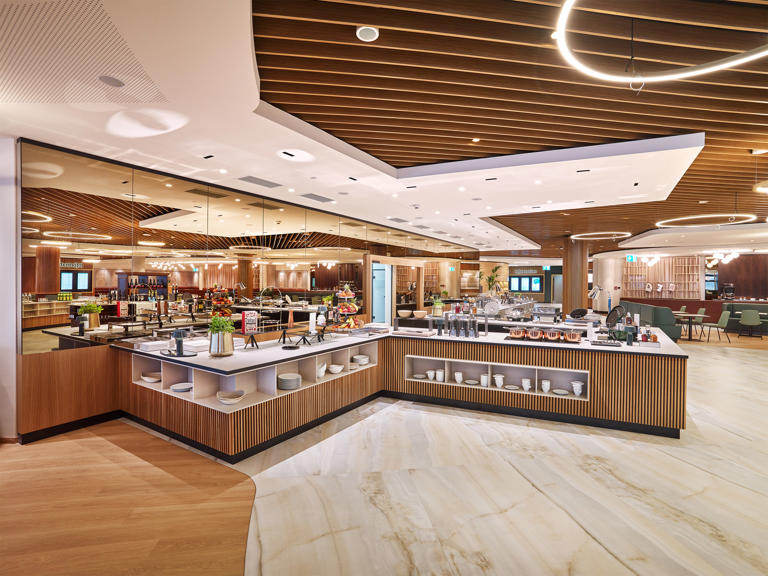

IMAGES
VIDEO
COMMENTS
It's a pleasure to take in all Vienna has to offer - and there are many ways to travel among all the neighborhoods, palaces, museums and wine bars you'll find in town. More laid-back than larger European capitals, Vienna's famous streets are easy to explore by foot. The Innere Stadt is at the core of the city's 23 Bezirke, which means you can nose around the site-crammed backstreets ...
15. Eisenstadt and Schloss Esterházy. 16. Laa an der Thaya. Map of Day Trips from Vienna. 1. The Wachau Valley and Melk Abbey. The Wachau Valley. Located about 80 kilometers from Vienna, the beautiful Wachau Valley is a World Heritage Site due to its spectacular scenery and rich history and culture.
Kreuzenstein Castle Located near Leobendorf, just north of Vienna along the Danube, it is a popular destination for day trips outside of Vienna.The castle itself dates back to the 12 th century, like most fortifications around Vienna and in Lower Austria, but subsequent partial destruction and disrepair led to a revamping in the 19 th century in the romantic neo-medieval style it can be seen ...
The public transportation system includes buses, trams, and underground trains (U-Bahn). Covering the length and breadth of the city, Vienna U-Bahn or Subway is an exceptionally efficient and cost-effective way to move around Vienna. You can purchase a Vienna Card online to get unlimited public transport use for 24, 48, or 72 hours.
Stop by St. Stephen's Cathedral. At its tallest point, St. Stephen's Cathedral reaches 136 meters, making it the tallest church in Austria and one of the most recognizable sights in Vienna ...
The official online travel guide for the city of Vienna, with information about sights, events and hotel bookings, and the Vienna City Card. ... Around Vienna Karmeliterviertel: where cool meets kosher. Those who choose to explore the Karmeliterviertel will find a laid-back district that still bears visible traces of its Jewish history today ...
The Kunsthistorisches Museum. Of all Vienna's museums, the Kunsthistorisches Museumon Burgring still outshines them all (June-Aug daily 10am-6pm, Thurs till 9pm; Sept-May Tues-Sun 10am-6pm, Thurs till 9pm; €15). It's one of the world's greatest collections of Old Masters - comparable with the Hermitage or Louvre.
Sandwiches and salads cost between 7-9 EUR. A beer at the bar costs around 4.25 EUR while a latte/cappuccino costs 3.80 EUR. Bottled water is 2 EUR. If you are planning to cook your own food, a week's worth of groceries costs around 30-50 EUR for basic staples like rice, pasta, vegetables, and some meat.
Today, Vienna's Tiergarten (also known as Schönbrunn Zoo or Vienna Zoo) is the oldest zoo in the world, home to about 750 animal species (around 8,500 animals total) ranging from tigers to lemurs ...
VIENNA BUDGET TRAVEL GUIDE, FREE THINGS TO DO IN VIENNA, AUSTRIA IN 2022. 15 BEST FOOD TOURS IN VIENNA, AUSTRIA - UPDATED 2022/23. BEST LUXURY BOUTIQUE HOTELS IN VIENNA. Visiting Vienna, Practical Tips & Things to Do (Local Expert Advice) Why You Should Listen to Me? I was born and have lived in Vienna my whole life.
The best ways to get around Vienna are on foot and by public transportation. Many historic attractions can be found within the compact Innere Stadt and are easy to reach with just a sturdy pair of ...
Address: Mariahilf, city center 1060 Vienna, Austria. Phone: +43 1 400005430. Website. Vienna's largest and best known food market is located on the Vienna River, with more than 120 market stands ...
It's extremely flexible and functional for tourists because it allows unlimited travel, plus various discounts at city museums, restaurants, and shops. You can purchase a Vienna Card for 19€ ($30) at tourist information offices, public transport centers, and some hotels, or order one over the phone with a credit card (tel. 01/7984400148).
Popular Tram Lines and Where They Go. Busy and popular tram lines that service the city center include: Line 1: Serves the central Burgring area, Rathausplatz (City Hall), Opera House, and the sprawling "Prater" park. Line 2: Serves the transport hubs of Stubentor and Schwedenplatz and ends at Friedrich-Engels-Platz.
Getting around. Vienna's public transportation network is very well developed. You can travel quickly and reliably by subway, streetcar and bus.
Where: Budapest, Hungary How to get there: from Wien HBF to Budapest-Keleti (around 2h 39min) Obvious reasons why you should travel there: the giant and beautiful gothic style parliament building, take a dip at the Instagram-famous thermal Széchenyi Baths, to sit at the Danube somewhere other than Vienna, take in the views of the city from the Fisherman's Bastion, to try the tasty Hungarian ...
The Vienna City Card, in particular, is specifically designed as a travel pass for tourists. This 24, 48 or 72-hour network travel card for the city also qualifies you for various discounts across a 7-day period. Just about anything you're likely to visit, watch or see offers some kind of small reduction with the Vienna City Card.
Here are some cultural things to do in Vienna you can book in advance to be prepared for your trip: Schönbrunn Palace Gardens skip-the-line tickets →. Vivaldi's Four Seasons Concert at Karlskirche →. Mozart Concert at the Golden Hall →. Spanish Riding School performance of the Lipizzaner horses →.
Priority Pass has revealed its best-rated airport lounges around the world — and you're definitely going to want to tick off a few of them on future trips. ... Vienna Lounge, Terminal 1 ...